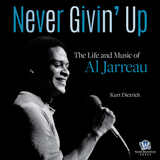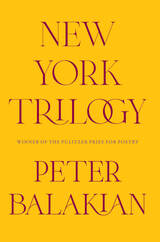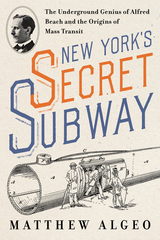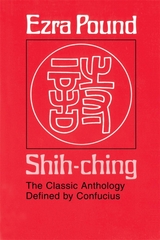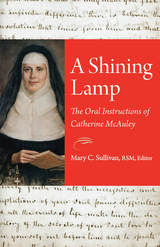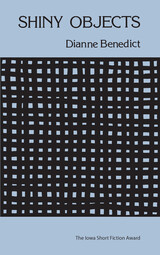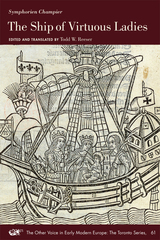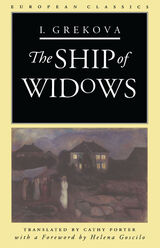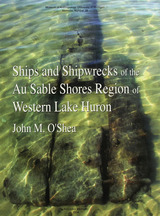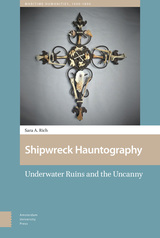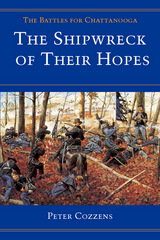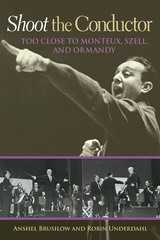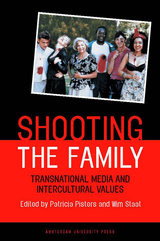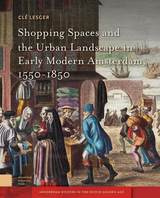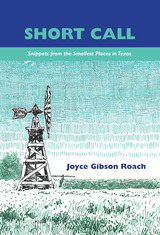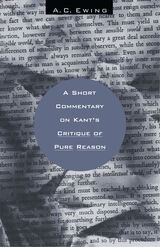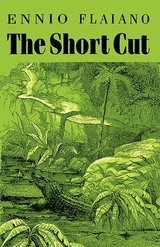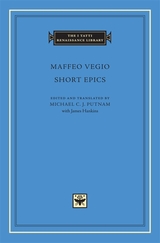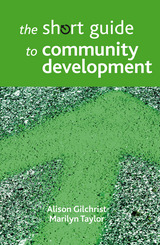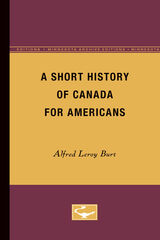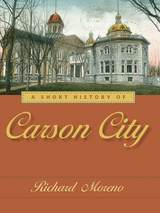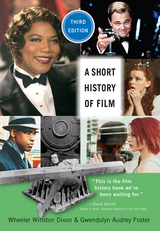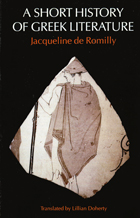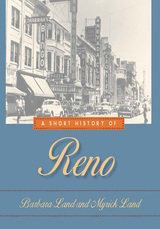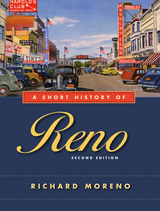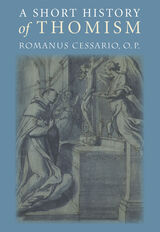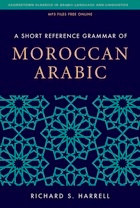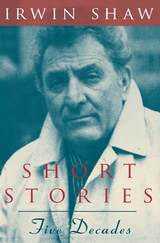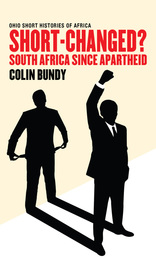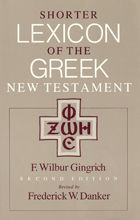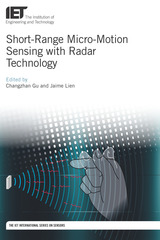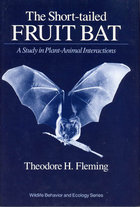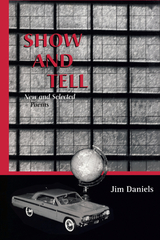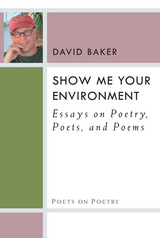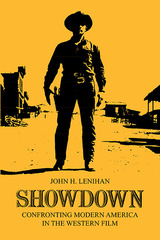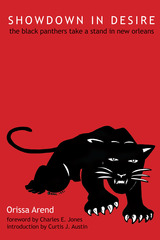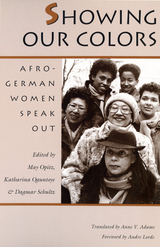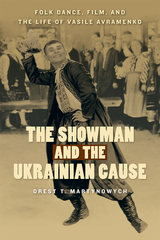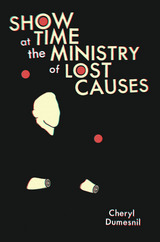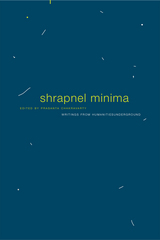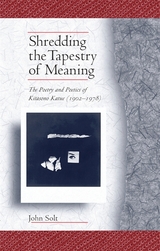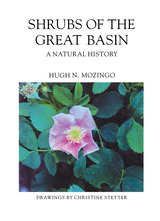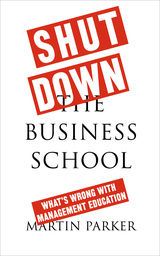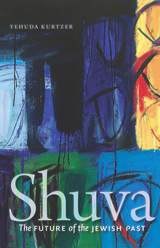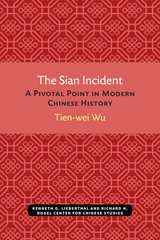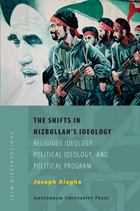 The Shifts in Hizbullah's Ideology: Religious Ideology, Political Ideology, and Political Program
Joseph Alagha
Amsterdam University Press, 2002
As the recent war in Lebanon demonstrated, an understanding of the Lebanese Shi‘ite militant group Hizbullah remains an important component of any attempt to solve the problems of the Middle East. The Shifts in Hizbullah’s Ideology provides an in-depth analysis of the group’s motivations, tracking the changes it has undergone since Hizbullah’s founding by Lebanese Shi‘ite clergy in 1978. Joseph Alagha demonstrates that Hizbullah, driven at its founding chiefly by religious concerns, in the latter half of the 1980s became a full-fledged social movement, with a structure and ideology aimed at social change. Further changes in the 1990s led to Hizbullah’s becoming a mainstream political party—but without surrendering its militarism or willingness to use violence to advance its ends.
In tracking these changes, The Shifts in Hizbullah’s Ideology covers such disparate topics as Hizbullah’s views of jihad, suicide and martyrdom, integration, pan-Islamism, anti-Zionism, and the relationship with Israel and the United States. It will be necessary reading for both scholars and policymakers.
 The Shiga Hero
William F. Sibley
University of Chicago Press, 1979 Shiga Naoya (1883-1971), one of Japan's foremost modern writers, is known primarily for his spare, intense short stories. Highly subjective, Shiga's work belongs to the genre of "personal" or "psychological" fiction; much of his raw material is rooted in his own inner experience. His incisive style and disregard of the formal aspects of fiction present a vision of the world that is at times "primitive" and archetypal. Shiga relentlessly explores the vision through the viewpoint of a single central character who appears in almost all his works.
Sibley unifies Shiga's sparse, fragmented narratives by reconstructing the cyclical biography of this imaginary hero. Through an analysis of Shiga's psychoanalytic and mythopoetic approach to fiction, Sibley develops a useful model for the study of personal writers.
In recreating the life of Shiga's hero, Sibley uncovers a close link between the fictional hero and Shiga himself. Sibley finds an important part of Shiga's purpose as a writer was to "psychoanalyze" himself by projecting various personal problems onto this fictional alter ego.
Ten newly translated stories complement Sibley's analysis of Shiga's work. In this second part of the book, one encounters Shiga's hero at various stages of development: as a child facing the early loss of his mother and an uneasy relationship with his cold, distant father; as an adolescent encountering death and punishment; and as an adult searching for solace in solitary contemplation of life. Shiga renders these experiences through a highly textured prose and symbolic vocabulary. Sibley's integral text makes this major Japanese writer accessible to readers of English for the first time in a fascinating and original way.
Shih-ching: The Classic Anthology Defined by Confucius
Ezra Pound
Harvard University Press Ezra Pound here recreates for the English-speaking world the great poetry of ancient China. The 305 odes of the Classic Anthology are the living tradition of Chinese poetry. Since the fifth century before Christ, they have been as familiar to literate Chinese as the Homeric poems were to the ancient Greeks. Indeed, Confucius held that no man was truly educated until he had studied the odes.
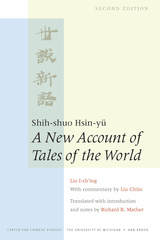 Shih-shuo Hsin-yü: A New Account of Tales of the World
By Liu I-ch’ing; With commentary by Liu Chün; Translated with introduction and notes by Richard B. Mather
University of Michigan Press, 2002 Shih-shuo hsin-yü: A New Account of Tales of the World, compiled by Liu I-ch’ing (403–444), is a collection of anecdotes, short conversations, and pithy observations on personalities who lived in China between about 150 and 420 A.D. In its own time, the text was considered to be an aid to conversation, and one of its aims was to provide enjoyable reading. For this reason, it has been loosely linked with the later “novels” (hsiao-shuo) such as “Romance of the Three Kingdoms” (San-kuo yen-i). Shih-shuo hsin- yü is organized thematically, with sections devoted to civic and moral virtues, cultivated and intellectual accomplishments, recluses, women, technology, art, and human frailty. Yet the view onto these subjects remains narrow: center stage is occupied by emperors and princes, courtiers, officials, generals, genteel hermits, and urbane monks. These figures are depicted in a rarified atmosphere of great refinement and sensitivity, yet they are usually caught up in a very earthly, often bloody, world of war and factional intrigue. It is a dark world against which the occasional flashes of wit and insight shine the more brightly. Mather's classic translation was the first English translation of the work when it appeared in 1971. Mather incorporates the commentary of Liu Chun (461–521), which provides invaluable contextualizing information from works of the third and fourth centuries that are now lost. The second edition has been comprehensively revised, introducing numerous collaborative corrections and improvements.
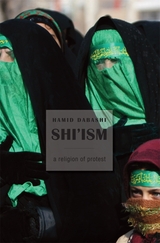 Shi'ism: A Religion of Protest
Hamid Dabashi
Harvard University Press, 2012 For a Western world anxious to understand Islam and, in particular, Shi’ism, this book arrives with urgently needed information and critical analysis. Hamid Dabashi exposes the soul of Shi’ism as a religion of protest—successful only when in a warring position, and losing its legitimacy when in power.
Dabashi makes his case through a detailed discussion of the Shi’i doctrinal foundations, a panoramic view of its historical unfolding, a varied investigation into its visual and performing arts, and finally a focus on the three major sites of its contemporary contestations: Iran, Iraq, and Lebanon. In these states, Shi’ism seems to have ceased to be a sect within the larger context of Islam and has instead emerged to claim global political attention. Here we see Shi’ism in its combative mode—reminiscent of its traumatic birth in early Islamic history. Hezbollah in Lebanon claims Shi’ism, as do the militant insurgents in Iraq, the ruling Ayatollahs in Iran, and the masses of youthful demonstrators rebelling against their reign. All declare their active loyalties to a religion of protest that has defined them and their ancestry for almost fourteen hundred years.
Shi’sm: A Religion of Protest attends to the explosive conflicts in the Middle East with an abiding attention to historical facts, cultural forces, religious convictions, literary and artistic nuances, and metaphysical details. This timely book offers readers a bravely intelligent history of a world religion.
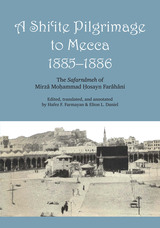 A Shi'ite Pilgrimage to Mecca, 1885-1886: The Safarnâmeh of Mirzâ Mo?ammad ?osayn Farâhâni
By Mirzâ Farâhâni
University of Texas Press, 1990 Western accounts of the Hajj, the ritual Muslim pilgrimage to Mecca, are rare, since access to Mecca is forbidden to non-Muslims. In the Muslim world, however, pilgrimage literature is a well-established genre, dating back to the earliest centuries of the Islamic era. A Shiʿite Pilgrimage to Mecca is taken from the original nineteenth-century Persian manuscript of the Safarnâmeh of Mirzâ Moḥammad Ḥosayn Farâhâni, a well-educated, keenly observant, Iranian Shiʿite gentleman. This memoir holds a wealth of social and economic information about Czarist Russia, the Ottoman Empire, Egypt, Northern Iran, and Arabia. The author is a meticulous observer, recording details of distances, currencies, accommodations, modes of travel, and so on. He records the experiences encountered by pilgrims of his day: physical hardships, disease, generosity and compassion, banditry, hospitality, comradeship, and exaltation. And, without prejudice, he discusses the tensions between the Shiʿites and the Sunnites in the holy places—tensions that still exist and have erupted in bloody clashes during recent pilgrimages. A Shiʿite Pilgrimage to Mecca will appeal to a wide audience of general readers, Middle Eastern scholars, anthropologists, and historians.
 Shikitei Sanba and the Comic Tradition in Edo Fiction
Robert W. Leutner
Harvard University Press, 1985 The last decades of the eighteenth century gave rise to an explosion of literary activity in Edo (now Tokyo) that lasted until the mid-nineteenth century, with an army of writers producing prodigious quantities of fiction. This study traces the life and literary career of Shikitei Sanba (1776-1822), a writer in the mainstream of that generation, the author of more than a hundred works of fiction, many in the comic vein.
This book-length critical treatment of a major writer of gesaku (playful compositions) is a welcome breakthrough, since Sanba's life, his era of literary activity, and the popular genres in which he worked have received scant treatment in English. Leutner describes Sanba as a representative writer within a literary scene shifting from amateur to professional and becoming increasingly commercial.
The text is enhanced by Leutner's translations of excerpts from Sanba's various writings. The Appendix encompasses two long passages in original translation, fully annotated, of Ukiyoburo, "The Bathhouse of the Floating World," one of Sanba's best-known works. In "The Men's Bath" and "The Women's Bath" readers will encounter an array of Edo types. Their informal conversations convey the quality of humor, the sociological characteristics, and much of the flavor of life in Sanba's Edo.
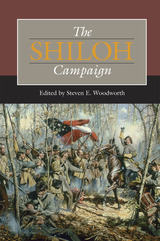 The Shiloh Campaign
Edited by Steven E. Woodworth
Southern Illinois University Press, 2009 Some 100,000 soldiers fought in the April 1862 battle of Shiloh, and nearly 20,000 men were killed or wounded; more Americans died on that Tennessee battlefield than had died in all the nation’s previous wars combined. In the first book in his new series, Steven E. Woodworth has brought together a group of superb historians to reassess this significant battleandprovide in-depth analyses of key aspects of the campaign and its aftermath. The eight talented contributors dissect the campaign’s fundamental events, many of which have not received adequate attention before now. John R. Lundberg examines the role of Albert Sidney Johnston, the prized Confederate commander who recovered impressively after a less-than-stellar performance at forts Henry and Donelson only to die at Shiloh; Alexander Mendoza analyzes the crucial, and perhaps decisive, struggle to defend the Union’s left; Timothy B. Smith investigates the persistent legend that the Hornet’s Nest was the spot of the hottest fighting at Shiloh; Steven E. Woodworth follows Lew Wallace’s controversial march to the battlefield and shows why Ulysses S. Grant never forgave him; Gary D. Joiner provides the deepest analysis available of action by the Union gunboats; Grady McWhineydescribes P. G. T. Beauregard’s decision to stop the first day’s attack and takes issue with his claim of victory; and Charles D. Grear shows the battle’s impact on Confederate soldiers, many of whom did not consider the battle a defeat for their side. In the final chapter, Brooks D. Simpson analyzes how command relationships—specifically the interactions among Grant, Henry Halleck, William T. Sherman, and Abraham Lincoln—affected the campaign and debunks commonly held beliefs about Grant’s reactions to Shiloh’s aftermath. The Shiloh Campaign will enhance readers’ understanding of a pivotal battle that helped unlock the western theater to Union conquest. It is sure to inspire further study of and debate about one of the American Civil War’s momentous campaigns.
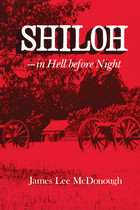 Shiloh—In Hell Before Night
James Lee Mcdonough
University of Tennessee Press, 1977
Colorful, dramatic, blundering, and tragic – these are some of the adjectives that have been applied to the two-day engagement at Shiloh. This battle, which bears the biblical name meaning “place of peace,” was one of the bloodiest encounters of the Civil War. The Union colonel, whose words give the present book its title, foretold the losses when he told his men: “Fill your canteens Boys! Some of you will be in hell before night….”
Fought in the early spring of 1862 on the west bank of the Mississippi state line, Shiloh was, up to that time, the biggest battle of American history. One hundred thousand men were involved, and major Civil War commanders such as Grant, Sherman, Johnston, Beauregard, Bragg, and Forrest participated. The battle took the life of Johnston and it left a lasting impact on the reputation of other commanders. More-over, it played a significant role in the campaign for control of the Mississippi Valley.
Although hundreds of books have been written about the Civil War and its battle, questions about the disorganized struggle at Shiloh have continued to perplex historians. Why was Grant absent when his army was attacked? Why did Grant and Sherman apparently ignore evidence of a Confederate advance? What happened to Lew Wallace that he never got his division into the fight on the first day of battle? Why did it take the Rebels so long to make their way from Corinth to the battlefield? Did the Rebels really have a distinct opportunity to win the battle, as it seems in retrospect, or were they doomed from the start? Were Johnston and Beauregard working at cross-purposes? Shiloh-In Hell Before Night provides answers or clues to answers of clues to answers for these and other questions arising from this controversial engagement.
The author tells his story by placing Shiloh in the larger context of the war and by exploring the very personal side of the conflict through the words of the Union and Confederate participants, officers and common soldiers alike. Touches of humor and even or romance are revealed in the midst of the carnage, but the overriding element is the specter of death. Among those who survived, the soldiers who had been eager to “see the elephant,” as they commonly referred to combat, could never again feel so eager for a fight.
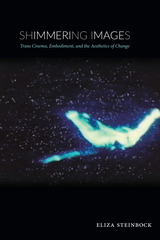 Shimmering Images: Trans Cinema, Embodiment, and the Aesthetics of Change
Eliza Steinbock
Duke University Press, 2019 In Shimmering Images Eliza Steinbock traces how cinema offers alternative ways to understand gender transitions through a specific aesthetics of change. Drawing on Barthes's idea of the “shimmer” and Foucault's notion of sex as a mirage, the author shows how sex and gender can appear mirage-like on film, an effect they label shimmering. Steinbock applies the concept of shimmering—which delineates change in its emergent form as well as the qualities of transforming bodies, images, and affects—to analyses of films that span time and genre. These include examinations of the fantastic and phantasmagorical shimmerings of sex change in Georges Méliès's nineteenth-century trick films and Lili Elbe's 1931 autobiographical writings and photomontage in Man into Woman. Steinbock also explores more recent documentaries, science fiction, and pornographic and experimental films. Presenting a cinematic philosophy of transgender embodiment that demonstrates how shimmering images mediate transitioning, Steinbock not only offers a corrective to the gender binary orientation of feminist film theory; they open up new means to understand trans ontologies and epistemologies as emergent, affective, and processual.
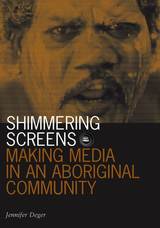 Shimmering Screens: Making Media in an Aboriginal Community
Jennifer Deger
University of Minnesota Press, 2006 How does the introduction of modern media influence a community? How does technology coexist with tradition? How do reality and imagination converge in the creation of documentary? Jennifer Deger addresses these questions in her compelling study of one Aboriginal community’s relationship with media. Deger spent several years working with the Yolngu community in Gapuwiyak, a remote Aboriginal community in Australia, both as an ethnographic researcher and as a collaborator in the production of media. Shimmering Screens explores the place of technology in Gapuwiyak through discussions about the influence of mainstream television, the changing role of photography in mortuary ceremonies, and the making of local radio and video. A rich ethnographic study, this book examines the productive, and sometimes problematic, conjunctions of technology, culture, and imagination in contemporary Yolngu life. Deger offers a new perspective to ongoing debates regarding “media imperialism.” Reconsidering established assumptions about the links between representation, power, and “the gaze,” she proposes the possibility of a more culturally specific and, ultimately, a more mutual relationship between subject, image, and viewer.Jennifer Deger is a research fellow in anthropology, Macquarie University, Australia.
Shine
Joseph Millar
Carnegie Mellon University Press, 2024 Poems that arise from the currents of felt experience.
Joseph Millar’s lyrical poems explore work, love, filial connection, life, and death. This is Millar’s sixth collection, and it reaches a deeper, more sonic level than his usual narrative voice. A collection of half songs rendered in a hardscrabble lyricism, they are propelled by their shifting, irregular rhymes, half rhymes, and off rhymes. The poems’ subjects grow from moments of daily life and their deeper obsessions—love, work, death, desire—and the making of art itself. Touched with more humor than earlier work, and with an unpredictable timing that seems to listen to itself as it travels down the page, the poems are part wonder and part reflection, carried along by their music.
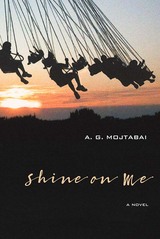 Shine on Me: A Novel
A. G. Mojtabai
Northwestern University Press, 2016 The rules are simple enough: “Here’s the deal: Whoever keeps his hands longest on one of the dealer’s brand new pickup trucks owns it and gets to drive it away.” An actual contest hosted by an auto dealership in Texas is the prompt for this fictional exploration, which seeks to probe the depths and shallows of the American soul. To the players vying for this shiny new prize, competition revs up as the hours wear on, positions harden, sightlines narrow, and sleep-deprivation intensifies. At the center is the reporter Trew Reade, struggling to make sense of the event and his own role in it. Early on, he muses that “surface and substance were rarely the same; transparency could be the most cunning of masks.” So, too, is the author’s transparent prose. Reviewers have sometimes found Mojtabai’s vision akin to that of Marilynne Robinson and Flannery O’Connor, but the characterization from Books & Culture—“not like anyone else”—is perhaps best, inviting readers to discover this provocative writer for themselves.
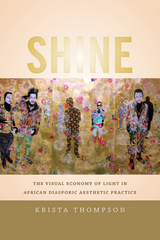 Shine: The Visual Economy of Light in African Diasporic Aesthetic Practice
Krista Thompson
Duke University Press, 2015 In Jamaican dancehalls competition for the video camera's light is stiff, so much so that dancers sometimes bleach their skin to enhance their visibility. In the Bahamas, tuxedoed students roll into prom in tricked-out sedans, staging grand red-carpet entrances that are designed to ensure they are seen being photographed. Throughout the United States and Jamaica friends pose in front of hand-painted backgrounds of Tupac, flashy cars, or brand-name products popularized in hip-hop culture in countless makeshift roadside photography studios. And visual artists such as Kehinde Wiley remix the aesthetic of Western artists with hip-hop culture in their portraiture. In Shine, Krista Thompson examines these and other photographic practices in the Caribbean and United States, arguing that performing for the camera is more important than the final image itself. For the members of these African diasporic communities, seeking out the camera's light—whether from a cell phone, Polaroid, or video camera—provides a means with which to represent themselves in the public sphere. The resulting images, Thompson argues, become their own forms of memory, modernity, value, and social status that allow for cultural formation within and between African diasporic communities.
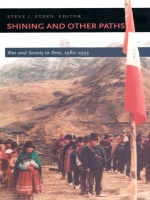 Shining and Other Paths: War and Society in Peru, 1980-1995
Steve J. Stern, ed.
Duke University Press, 1998 Shining and Other Paths offers the first systematic account of the social experiences at the heart of the war waged between Shining Path and the Peruvian military during the 1980s and early 1990s. Confronting and untangling the many myths and enigmas that surround the war and the wider history of twentieth-century Peru, this book presents clear and often poignant analyses of the brutal reshaping of life and politics during a war that cost tens of thousands of lives. The contributors—a team of Peruvian and U.S. historians, social scientists, and human rights activists—explore the origins, social dynamics, and long-term consequences of the effort by Shining Path to effect an armed communist revolution. The book begins by interpreting Shining Path’s emergence and decision for war as one logical culmination, among several competing culminations, of trends in oppositional politics and social movements. It then traces the experiences of peasants and refugees to demonstrate how human struggle and resilience came together in grassroots determination to defeat Shining Path, and explores the unsuccessful efforts of urban shantytown dwellers, as well as rural and urban activists, to build a “third path” to social justice. Integral to this discussion is an examination of women’s activism and consciousness during the years of the crisis. Finally, this book analyzes the often paradoxical and unintended legacies of this tumultuous period for social and human rights movements, and for presidential and military leadership in Peru. Extensive field research, broad historical vision, and strong editorial coordination enable the authors to write a coherent and deeply humanistic account, one that draws out the inner tragedies, ambiguities, and conflicts of the war. Providing historically grounded explication of the conflicts that reshaped contemporary Peru, Shining and Other Paths will be widely read by Latin Americanists, historians, anthropologists, gender theorists, sociologists, political scientists, and human rights activists. Contributors. Jo-Marie Burt, Marisol de la Cadena, Isabel Coral Cordero, Carlos Iván Degregori, Iván Hinojosa, Carlos Basombrío Iglesias, Florencia E. Mallon, Nelson Manrique, Hortensia Muñoz, Enrique Obando, Patricia Oliart, Ponciano del Pino H., José Luis Rénique, Orin Starn, Steve J. Stern
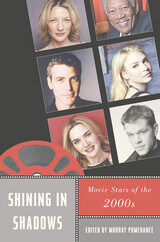 Shining in Shadows: Movie Stars of the 2000s
Pomerance, Murray
Rutgers University Press, 2012 In the 2000s, new technologies transformed the experiences of movie-going and movie-making, giving us the first generation of stars to be just as famous on the computer screen as on the silver screen. Shining in Shadows examines a wide range of Hollywood icons from a turbulent decade for the film industry and for America itself. Perhaps reflecting our own cultural fragmentation and uncertainty, Hollywood’s star personas sent mixed messages about Americans’ identities and ideals. Disheveled men-children like Will Ferrell and Jack Black shared the multiplex with debonair old-Hollywood standbys like George Clooney and Morgan Freeman. Iconic roles for women ranged from Renee Zellweger’s dithering romantics to Tina Fey’s neurotic professionals to Hilary Swank’s vulnerable boyish characters. And in this age of reality TV and TMZ, stars like Jennifer Aniston and “Brangelina” became more famous for their real-life romantic dramas—at the same time that former tabloid fixtures like Johnny Depp and Robert Downey Jr. reinvented themselves as dependable leading men. With a multigenerational, international cast of stars, this collection presents a fascinating composite portrait of Hollywood stardom today.
A Shining Lamp
Mary C. Sullivan
Catholic University of America Press, 2017 Catherine McAuley (1778-1841), the founder of the Sisters of Mercy in 1831, frequently gave oral instructions to the first Mercy community. Though she sometimes spoke explicitly about their religious vows, her words were always focused on the life, example, teachings, and evangelic spirit of Jesus Christ, emphasizing "resemblance" to him, and fidelity to the calls of the Gospel. Her instructions have, therefore, a broad present-day relevance that can be inspiring and encouraging for all Christians. They are the "shining" words of a companion, a soul-friend, who offers guiding light to those who wend their pilgrim way toward the full embrace of God's merciful reign.
Shining Sheep: Poems
Ulrike Almut Sandig
Seagull Books, 2024 A collection of vital, melancholic, elemental, and vibrantly contemporary poems.
In the beginning, was the light, or was it the Lumières? In Ulrike Almut Sandig’s latest volume of poetry, it is only a leap from the creation of the world to the symphony of the Berlin metropolis. And there is a question holding out off the coast of Lampedusa: Can shining sheep be used as night storage for the dark hours, when we are overwhelmed with fears of God, of a gym teacher with a whistle, of mothers with eyes as black as coal? In devastating sequences, Sandig charts the reality of an abused child, victims of contemporary war, or a fourteenth-century Madonna. Full of humor, musicality, lightness, and rage, Shining Sheep is not just visual poetry—it has loops in your ear and filmic explosions of imagery for all your senses.
 Shinto Shrines: A Guide to the Sacred Sites of Japan's Ancient Religion
Joseph Cali
University of Hawaii Press, 2012 Of Japan’s two great religious traditions, Shinto is far less known and understood in the West. Although there are a number of books that explain the religion and its philosophy, this work is the first in English to focus on sites where Shinto has been practiced since the dawn of Japanese history. In an extensive introductory section, authors Joseph Cali and John Dougill delve into the fascinating aspects of Shinto, clarifying its relationship with Buddhism as well as its customs, symbolism, and pilgrimage routes. This is followed by a fully illustrated guide to 57 major Shinto shrines throughout Japan, many of which have been designated World Heritage Sites or National Treasures. In each comprehensive entry, the authors highlight important spiritual and physical features of the individual shrines (architecture, design, and art), associated festivals, and enshrined gods. They note the prayers offered and, for travelers, the best times to visit. With over 125 color photographs and 50 detailed illustrations of archetypical Shinto objects and shrines, this volume will enthrall not only those interested in religion but also armchair travelers and visitors to Japan alike.
Whether you are planning to visit the actual sites or take a virtual journey, this guide is the perfect companion.
 Shinto Shrines in Prewar and Wartime Japan
Helen Hardacre
Harvard University Press Shinto Shrines in Prewar and Wartime Japan examines the religious and social history of Shinto shrines, focusing on the economic, social, and ideological implications of State Shinto. Helen Hardacre argues that politicians regarded public funding of shrines as crucial for elevating their “dignity” and for curbing progressive thought and activism. Understanding the social and financial dynamics of both major and smaller shrines is key to comprehending State Shinto’s broader impact on Japanese society. This study employs a historical analysis using shrine records, personal diaries, contemporary literature, and government documents. It includes case studies contextualizing events at specific shrines within broader social and political change, personal accounts of priests and laypeople, and statistical analysis of funding patterns. Hardacre’s comprehensive approach provides valuable insights into the role of religious institutions in politics and ideology. By highlighting the nuanced experiences of smaller shrines, their priests, and associated laypeople, Shinto Shrines in Prewar and Wartime Japan enhances understanding of State Shinto’s reach and influence, contributing to broader discussions on the interplay between religion, politics, and society in modern Japanese history.
 Shinto Shrines in Prewar and Wartime Japan
Helen Hardacre
Harvard University Press, 2025 Shinto Shrines in Prewar and Wartime Japan examines the religious and social history of Shinto shrines, focusing on the economic, social, and ideological implications of State Shinto. Helen Hardacre argues that politicians regarded public funding of shrines as crucial for elevating their “dignity” and for curbing progressive thought and activism. Understanding the social and financial dynamics of both major and smaller shrines is key to comprehending State Shinto’s broader impact on Japanese society. This study employs a historical analysis using shrine records, personal diaries, contemporary literature, and government documents. It includes case studies contextualizing events at specific shrines within broader social and political change, personal accounts of priests and laypeople, and statistical analysis of funding patterns. Hardacre’s comprehensive approach provides valuable insights into the role of religious institutions in politics and ideology. By highlighting the nuanced experiences of smaller shrines, their priests, and associated laypeople, Shinto Shrines in Prewar and Wartime Japan enhances understanding of State Shinto’s reach and influence, contributing to broader discussions on the interplay between religion, politics, and society in modern Japanese history.
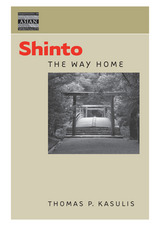 Shinto: The Way Home
Thomas P. Kasulis
University of Hawaii Press, 2004 Nine out of ten Japanese claim some affiliation with Shinto, but in the West the religion remains the least studied of the major Asian spiritual traditions. It is so interlaced with Japanese cultural values and practices that scholarly studies usually focus on only one of its dimensions: Shinto as a "nature religion," an "imperial state religion," a "primal religion," or a "folk amalgam of practices and beliefs." Thomas Kasulis’ fresh approach to Shinto explains with clarity and economy how these different aspects interrelate.
As a philosopher of religion, he first analyzes the experiential aspect of Shinto spirituality underlying its various ideas and practices. Second, as a historian of Japanese thought, he sketches several major developments in Shinto doctrines and institutions from prehistory to the present, showing how its interactions with Buddhism, Confucianism, and nationalism influenced its expression in different times and contexts. In Shinto’s idiosyncratic history, Kasulis finds the explicit interplay between two forms of spirituality: the "existential" and the "essentialist." Although the dynamic between the two is particularly striking and accessible in the study of Shinto, he concludes that a similar dynamic may be found in the history of other religions as well.
Two decades ago, Kasulis’ Zen Action/Zen Person brought an innovative understanding to the ideas and practices of Zen Buddhism, an understanding influential in the ensuing decades of philosophical Zen studies. Shinto: The Way Home promises to do the same for future Shinto studies.
Shiny Objects
Dianne Benedict
University of Iowa Press, 1982 A successful professional painter and art instructor for years, Benedict was dissatisfied that she could paint petal-perfect flowers and expensive portraits of wealthy clients, but could not capture the light on the garden at dusk or the tender hands and faces of her own children. Seven years ago she walked into a poetry workshop and found "the window I needed for my imagination." She never painted another painting, and has never stopped writing. She got her BA in English and her MFA in writing at Goddard College, taught workshops, won scholarships, and recieved grants and awards for her fiction. her stories have appeared in INTRO and fiction international, and the title story in this award-winning collection was published as an Atlantic Monthly First.
 Shinzo: Hachiman Imagery and its Development
Christine Guth Kanda
Harvard University Press, 1985 Originating from the Shinto tradition, shinzjj (wooden statues of kami) are among the finest wooden sculptures in Japan and have long commanded great reverence from the Japanese people. This comprehensive examination of the stylistic and iconographic evolution of shinzjj from the ninth through the fourteenth centuries is the first of its kind. Primary attention is given to images of Hachiman, which are the earliest surviving examples of Shinto deities depicted in anthropomorphic form. Focus on this lineage of forms provides a clear view of the development of Shinto aesthetic attitudes and their relationship to Buddhist influences.
Three works are examined in detail: a ninth-century triad housed at Toji, Kyoto; a tenth-century triad made for Yakushiji, Nara; and a single statue carved by Kaikei in the thirteenth century for Todaiji, Nara. A less-detailed discussion of other portrayals of Hachiman and other deities amplifies the central focus. This authoritative text is enriched by the inclusion of 76 plates, many depicting hitherto unknown or seldom-seen sculptures. The book should be of great interest to scholars of art, religion, and history.
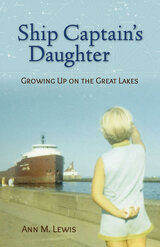 Ship Captain's Daughter: Growing Up on the Great Lakes
Ann Michler Lewis
Wisconsin Historical Society Press, 2015 Ann Lewis's childhood was marked by an unusual rhythm. Each year the thawing and freezing of the Great Lakes signaled the beginning and end of the shipping season, months of waiting that were punctuated by brief trips to various ports to meet her father, the captain. With lively storytelling and vivid details, Lewis captures the unusual life of shipping families whose days and weeks revolved around the shipping industry on the Great Lakes. She paints an intriguing and affectionate portrait of her father, a talented pianist whose summer job aboard an ore freighter led him to a life on the water. Working his way up from deckhand to ship captain, Willis Michler became the master of thirteen ships over a span of twenty-eight years. From the age of twelve, Ann accompanied the captain to the ports of Milwaukee, Chicago, Toledo, and Cleveland on the lower Great Lakes. She describes sailing through stormy weather and starry nights, visiting the engine room, dining at the captain's table, and wheeling the block-long ship with her father in the pilot house. Through her mother's stories and remarks, Lewis also reveals insights into the trials and rewards of being a ship captain's wife. The book is enhanced by the author's vintage snapshots, depicting this bygone lifestyle.
The Ship of Virtuous Ladies
Symphorien Champier
Iter Press, 2018 First published in 1503 in Lyons, Symphorien Champier’s The Ship of Virtuous Ladies helped launch the French Renaissance version of the querelle des femmes, the debate over the nature and status of women. The three books included in this edition include arguments for gender equality, and a catalogue of virtuous women modeled on Boccaccio’s Famous Women and Jacobus de Voragine’s Golden Legend. Titled “The Book of True Love,” book 4 is especially important in gender history, importing and transforming the male-centered Neoplatonic philosophy of Marsilio Ficino for pro-woman ends.
The Ship of Widows
I. Grekova
Northwestern University Press, 1994 "My husband was killed at the front right at the beginning of the war." Thus opens The Ship of Widows, the story of five women brought together in a large communal apartment by the vagaries of war in the year 1943. It spotlights the female experience of World War II: the fate of those not at the front, but still forced to fight as desperately to survive starvation, cold, and exhaustion, and to maintain homes and a country to which the soldiers can return. The Ship of Widows reveals an seldom-seen period of Russia's history and an understudied segment of its population—its women.
Shipbuilding and Ship Repair Workers around the World: Case Studies 1950-2010
Edited by Raquel Varela, Hugh Murphy, and Marcel van der Linden
Amsterdam University Press, 2017 Maritime trade is the backbone of the world’s economy. Around ninety percent of all goods are transported by ship, and since World War II, shipbuilding has undergone major changes in response to new commercial pressures and opportunities. Early British dominance, for example, was later undermined in the 1950s by competition from the Japanese, who have since been overtaken by South Korea and, most recently, China. The case studies in this volume trace these and other important developments in the shipbuilding and ship repair industries, as well as workers’ responses to these historic transformations.
 Shipping Out: Race, Performance, and Labor at Sea
Anita Gonzalez
University of Michigan Press, 2025 Shipping Out: Race, Performance, and Labor at Sea provides a rare perspective on performance by staff above and below deck on Caribbean cruise ships, as viewed through the lenses of race, class, and gender. Drawing on her experiences as a destination lecturer on Caribbean cruise lines for twenty years, Anita Gonzalez offers a unique viewpoint as she examines contemporary Caribbean cruise culture as an ethnographically complex site where North American and European travelers are exposed to other cultures through the orchestrated experiences on ship, and via excursions to ports. Gonzales argues that the cruise ship experience is deliberately crafted to deliver the best immersive performance by its workers. However, the workers never leave the theater, they merely move below deck—and like ships’ stewards and cooks from previous centuries, they work within an imaginary where Global Majority people are envisioned as servants. By utilizing ethnography and archival materials to illustrate ship workers’ experiences on contemporary cruise ships, and then contrasting those circumstances with the personal accounts of workers on historical merchant ships, Shipping Out illuminates how workers’ presence on ships complicates notions of freedom and enslavement, home and journey, place and space.
Ships and Shipwrecks of the Au Sable Shores Region of Western Lake Huron
John M. O'Shea
University of Michigan Press, 2004 Focusing on an area of coastline particularly known for vessel strandings, this volume includes histories of more than 50 lost vessels; a description of the remains of vessels and wreckage documented during archaeological research; an analysis of shoreline change in the last 150 years; and a model for matching wreckage to lost ships. This book will be of interest to archaeologists, historians, and anyone who loves the Great Lakes.
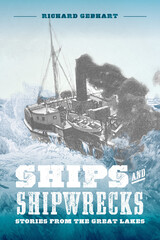 Ships and Shipwrecks: Stories from the Great Lakes
Richard Gebhart
Michigan State University Press, 2022 From the day that French explorer Robert Cavelier de La Salle launched the Griffin in 1679 to the 1975 sinking of the celebrated Edmund Fitzgerald, thousands of commercial ships have sailed on the vast and perilous waters of the Great Lakes. In a harbinger of things to come, on the return leg of its first trip in late summer 1679, the Griffin disappeared and has never been seen again. In the centuries since then, the records show that an alarming number of shipwrecks have occurred on the Great Lakes. If vessels that wrecked but were later repaired and returned to service are included, the number certainly swells into the thousands. Most did not mysteriously vanish like the Griffin. Instead, they suffered the occupational hazards of every lake boat: collisions, groundings, strands, fires, boiler explosions, and capsizes. Many of these disasters took the lives of crews and passengers. The fearsome wrath of the storms that brew over the Great Lakes has challenged and defeated some of the staunchest vessels constructed in the shipyards of port cities along the U.S. and Canadian lakeshores. Here Richard Gebhart tells the tales of some of these ships and their captains and crews, from their launches to their sad demises—or sometimes, their celebrated retirements. This volume is a must-read for anyone intrigued by the maritime history of the Great Lakes.
Shipwreck Hauntography: Underwater Ruins and the Uncanny
Sara Rich
Amsterdam University Press, 2021 Drawing on a broad theoretical range from speculative realism to feminist psychoanalysis and anti-colonialism, this book represents a radical departure from traditional scholarship on maritime archaeology. Shipwreck Hauntography asserts that nautical archaeology bears the legacy of Early Modern theological imperialism, most evident through the savior-scholar model that resurrects—physically or virtually—ships from wrecks. Instead of construing shipwrecks as dead, awaiting resurrection from the seafloor, this book presents them as vibrant if not recalcitrant objects, having shaken off anthropogenesis through varying stages of ruination. Sara Rich illustrates this anarchic condition with 'hauntographs' of five Age of 'Discovery' shipwrecks, each of which elucidates the wonder of failure and finitude, alongside an intimate brush with the eerie, horrific, and uncanny.
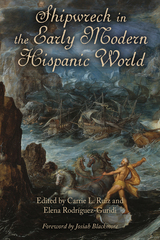 Shipwreck in the Early Modern Hispanic World
Carrie L. Ruiz
Bucknell University Press, 2022 Seafaring activity for trade and travel was dominant throughout the Spanish Empire, and in the worldview and imagination of its inhabitants, the specter of shipwreck loomed large. Shipwreck in the Early Modern Hispanic World probes this preoccupation by examining portrayals of nautical disasters in sixteenth- and seventeenth-century Spanish literature and culture. The essays collected here showcase shipwreck’s symbolic deployment to question colonial expansion and transoceanic trade; to critique the Christian enterprise overseas; to signal the collapse of dominant social order; and to relay moral messages and represent socio-political debates. The contributors find examples in poetry, theater, narrative fiction, and other print artifacts, and approach the topic variously through the lens of historical, literary, and cultural studies. Ultimately demonstrating how shipwrecks both shaped and destabilized perceptions of the Spanish Empire worldwide, this analytically rich volume is the first in Hispanic studies to investigate the darker side of mercantile and imperial expansion through maritime disaster.
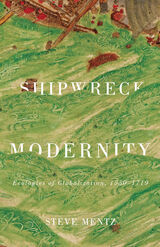 Shipwreck Modernity: Ecologies of Globalization, 1550–1719
Steve Mentz
University of Minnesota Press, 2015 Shipwreck Modernity engages early modern representations of maritime disaster in order to describe the global experience of ecological crisis. In the wet chaos of catastrophe, sailors sought temporary security as their worlds were turned upside down. Similarly, writers, poets, and other thinkers searched for stability amid the cultural shifts that resulted from global expansion. The ancient master plot of shipwreck provided a literary language for their dislocation and uncertainty. Steve Mentz identifies three paradigms that expose the cultural meanings of shipwreck in historical and imaginative texts from the mid-sixteenth through the early eighteenth centuries: wet globalization, blue ecology, and shipwreck modernity. The years during which the English nation and its emerging colonies began to define themselves through oceangoing expansion were also a time when maritime disaster occupied sailors, poets, playwrights, sermon makers, and many others. Through coming to terms with shipwreck, these figures adapted to disruptive change. Traces of shipwreck ecology appear in canonical literature from Shakespeare to Donne to Defoe and also in sermons, tales of survival, amateur poetry, and the diaries of seventeenth-century English sailors. The isolated islands of Bermuda and the perils of divine anger hold central places. Modern sailor-poets including Herman Melville serve as valuable touchstones in the effort to parse the reality and understandings of global shipwreck. Offering the first ecocritical account of early modern shipwreck narratives, Shipwreck Modernity reveals the surprisingly modern truths to be found in these early stories of ecological collapse.
The Shipwreck of Their Hopes: The Battles for Chattanooga
Peter Cozzens
University of Illinois Press, 1994 Civil War enthusiasts will welcome this concluding volume of Peter Cozzens's highly praised trilogy on the Civil War in the West. The battle around Chattanooga in the late fall of 1863 were among the most decisive of the Civil War, opening the Deep South to the Union and setting the stage for the Atlanta campaign and the March to the Sea. After Chattanooga, the principal Confederate army in the West fought without spirit or hope of victory. Cozzens's comprehensive account details movements of individual regiments, even as it reveals the larger impact of the campaign on the outcome of the war. In The Shipwreck of Their Hopes, Cozzens draws on his acclaimed storytelling skills and exhaustive research efforts to fully chronicle one of the South's most humiliating defeats. As in his earlier books, he brings to life the officers and enlisted men who fought the war.
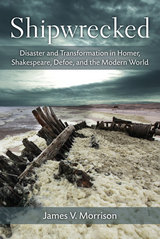 Shipwrecked: Disaster and Transformation in Homer, Shakespeare, Defoe, and the Modern World
James V. Morrison
University of Michigan Press, 2014 Shipwrecked: Disaster and Transformation in Homer, Shakespeare, Defoe, and the Modern World presents the first comparative study of notable literary shipwrecks from the past four thousand years, focusing on Homer’s Odyssey, Shakespeare’s The Tempest, and Defoe’s Robinson Crusoe. James V. Morrison considers the historical context as well as the “triggers” (such as the 1609 Bermuda shipwreck) that inspired some of these works, and modern responses such as novels (Golding’s Lord of the Flies, Coetzee’s Foe, and Gordon’s First on Mars, a science fiction version of the Crusoe story), movies, television (Forbidden Planet, Cast Away, and Lost), and the poetry and plays of Caribbean poets Derek Walcott and Aimé Césaire. The recurrent treatment of shipwrecks in the creative arts demonstrates an enduring fascination with this archetypal scene: a shipwreck survivor confronting the elements. It is remarkable, for example, that the characters in the 2004 television show Lost share so many features with those from Homer’s Odyssey and Shakespeare’s The Tempest. For survivors who are stranded on an island for some period of time, shipwrecks often present the possibility of a change in political and social status—as well as romance and even paradise. In each of the major shipwreck narratives examined, the poet or novelist links the castaways’ arrival on a new shore with the possibility of a new sort of life. Readers will come to appreciate the shift in attitude toward the opportunities offered by shipwreck: older texts such as the Odyssey reveals a trajectory of returning to the previous order. In spite of enticing new temptations, Odysseus—and some of the survivors in The Tempest—revert to their previous lives, rejecting what many might consider paradise. Odysseus is reestablished as king; Prospero travels back to Milan. In such situations, we may more properly speak of potential transformations. In contrast, many recent shipwreck narratives instead embrace the possibility of a new sort of existence. That even now the shipwreck theme continues to be treated, in multiple media, testifies to its long-lasting appeal to a very wide audience.
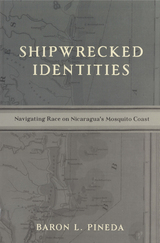 Shipwrecked Identities: Navigating Race on Nicaragua's Mosquito Coast
Pineda, Baron
Rutgers University Press, 2006 Global identity politics rest heavily on notions of ethnicity and authenticity, especially in contexts where indigenous identity becomes a basis for claims of social and economic justice. In contemporary Latin America there is a resurgence of indigenous claims for cultural and political autonomy and for the benefits of economic development. Yet these identities have often been taken for granted. In this historical ethnography, Baron Pineda traces the history of the port town of Bilwi, now known officially as Puerto Cabezas, on the Atlantic coast of Nicaragua to explore the development, transformation, and function of racial categories in this region. From the English colonial period, through the Sandinista conflict of the 1980s, to the aftermath of the Contra War, Pineda shows how powerful outsiders, as well as Nicaraguans, have made efforts to influence notions about African and Black identity among the Miskito Indians, Afro-Nicaraguan Creoles, and Mestizos in the region. In the process, he provides insight into the causes and meaning of social movements and political turmoil. Shipwrecked Identities also includes important critical analysis of the role of anthropologists and other North American scholars in the Contra-Sandinista conflict, as well as the ways these scholars have defined ethnic identities in Latin America.
As the indigenous people of the Mosquito Coast continue to negotiate the effects of a long history of contested ethnic and racial identity, this book takes an important step in questioning the origins, legitimacy, and consequences of such claims.
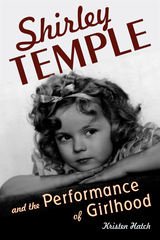 Shirley Temple and the Performance of Girlhood
Hatch, Kristen
Rutgers University Press, 2015 In the 1930s, Shirley Temple was heralded as “America’s sweetheart,” and she remains the icon of wholesome American girlhood, but Temple’s films strike many modern viewers as perverse. Shirley Temple and the Performance of Girlhood examines her early career in the context of the history of girlhood and considers how Temple’s star image emerged out of the Victorian cult of the child.
Beginning her career in “Baby Burlesks,” short films where she played vamps and harlots, her biggest hits were marketed as romances between Temple and her adult male costars. Kristen Hatch helps modern audiences make sense of the erotic undercurrents that seem to run through these movies. Placing Temple’s films in their historical context and reading them alongside earlier representations of girlhood in Victorian theater and silent film, Hatch shows how Shirley Temple emerged at the very moment that long standing beliefs about childhood innocence and sexuality were starting to change. Where we might now see a wholesome child in danger of adult corruption, earlier audiences saw Temple’s films as demonstrations of the purifying power of childhood innocence.
Hatch examines the cultural history of the time to view Temple’s performances in terms of sexuality, but in relation to changing views about gender, class, and race. Filled with new archival research, Shirley Temple and the Performance of Girlhood enables us to appreciate the “simpler times” of Temple’s stardom in all its thorny complexity.
Shiva's Drum
Stephen Cramer
University of Illinois Press, 2004 Departing from simple observations of the people and setting around him-- neighbors, friends, and lovers in New York City--Stephen Cramer's Shiva's Drum explores personal and familial relationships set to the rhythms of jazz in an urban landscape. Though comfortable at the edge, these poems deal with reality and move forward by transforming pain into beauty.
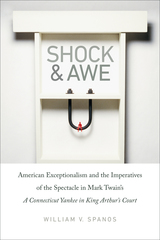 Shock and Awe: American Exceptionalism and the Imperatives of the Spectacle in Mark Twain’s A Connecticut Yankee in King Arthur’s Court
William V. Spanos
Dartmouth College Press, 2013 Inspired by the foreign policy entanglements of recent years, William V. Spanos offers a dramatic interpretation of Twain’s classic A Connecticut Yankee in King Arthur’s Court, providing a fresh assessment of American exceptionalism and the place of a global America in the American imaginary. Spanos insists that Twain identifies with his protagonist, particularly in his defining use of the spectacle, and thus with an American exceptionalism that uncannily anticipates the George W. Bush administration’s normalization of the state of exception and the imperial policy of “preemptive war,” unilateral “regime change,” and “shock and awe” tactics. Equally stimulating is Spanos’s thoroughly original ontology of American exceptionalism and imperialism and his tracing of these forces, through a chronological examination of Twain studies and criticism over the past century. As an examination of an overlooked text, and a critical history of American studies from its origins in the nation-oriented Myth and Symbol school of the Cold War era to its present globalizing or transnationalizing perspective, Shock and Awe will appeal to a broad audience of American literature scholars and beyond.
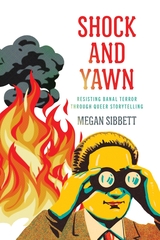 Shock and Yawn: Resisting Banal Terror Through Queer Storytelling
Megan Sibbett
Ohio State University Press, 2026 In Shock and Yawn, Megan Sibbett confronts state-sanctioned, mundane violence committed in the name of protection and argues that queer storytelling is an ideal avenue for recognizing, theorizing, and subverting it: Through queer stories, we have a direct window into the real-world ramifications of violence that purports to be for the public good. This violence, reinforced and normalized through surveillance campaigns, failure-to-protect laws, border policies, and government messaging, is obscured by both its banality and its benevolent veneer, in which children, or imagined children, are central to its logic of protection.
Building on queer theorists’ critiques of intimate and administrative violence, especially Gloria Anzaldúa’s “intimate terrorism,” Sibbett develops methodologies for conceptualizing and subverting violence aimed at queer, racialized, and gendered bodies in this era of surveillance and increasing authoritarianism. Sibbett addresses book bans, anti-trans legislation, idealized histories of westward expansion, and more, examining materials that include public service announcements, advertising, social media, news reports, poems, interviews, and novels. In so doing, she demonstrates the crucial role queer testimonies—and queer histories and queer futures—play in revealing systemic violence and illuminating the transformative potential of everyday resistance.
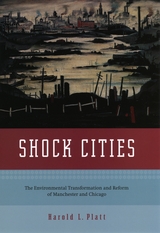 Shock Cities: The Environmental Transformation and Reform of Manchester and Chicago
Harold L. Platt
University of Chicago Press, 2005 Shock Cities is environmental history of the highest order. This searching work is the first trans-Atlantic study to examine the industrial city in holistic terms, looking at the transformation of its land, water, and air. Harold L. Platt demonstrates how the creation of industrial ecologies spurred the reorganization of urban areas into separate spheres, unhealthy slums in the center and garden estates in the suburbs. By comparing Chicago and Manchester, Platt also shows how the ruling classes managed the political creation of urban space to ensure financial gain—often to the environmental detriment of both regions.
Shock Cities also recasts the age of industry within a larger frame of nature. Frightening epidemics and unnatural "natural disasters" forced the city dwellers onto the path of environmental reform. Crusaders for social justice such as Chicago's Jane Addams and Manchester's Charles Rowley led class-bridging campaigns to clean up the slums. Women activists and other "municipal housekeepers" promoted regulations to reduce air pollution. Public health experts directed efforts to improve sanitation.
Out of these reform movements, the Progressives formulated new concepts of environmental conservation and regional planning. Comparing the two cities, Platt highlights the ways in which political culture and institutions act to turn social geography into physical shapes on the ground. This focus on the political formation of urban space helps illuminate questions of social and environmental justice. Shock Cities will be of enormous value to students of ecology, technology, urban planning, and public health in the Western world.
 The Shock of Colonialism in New England: Fragments from a Frontier
Meghan C. L. Howey
University of Alabama Press, 2025 Explores the untold impacts of colonialism in New England through diverse colonist lives, Indigenous encounters, and environmental legacies. In The Shock of Colonialism in New England, archaeologist Meghan C. L. Howey uses excavations in the seventeenth-century colonial frontier of the Great Bay Estuary/P8bagok in today’s New Hampshire to trace the connection between European global colonialism and the planetary climate crises. Howey shows how this landscape holds forgotten stories of what it meant to live through the shock of colonialism. These stories reveal an unexpected diversity and dynamism among English colonists, multifaceted encounters with Indigenous peoples, and lasting environmental damage from labor-intensive industries. Early Euro-American maps and stunning archaeological finds, such as a broken pickaxe embedded in a hearth, and a historical marker for the Oyster River “Massacre” of 1694 complicate our limited views of a shared past. The reality of English colonialism in the dispossession of Indigenous lands and its wake is not commemorated. Howey’s work is a powerful corrective that traces the rise of intergenerational colonial wealth made possible by land commodified as property, the increased labor required to work newly opened land, the importation of indentured Scots and enslaved Africans to provide that labor, and the resulting degradation of the natural environment. Through Howey’s insights into the stories they tell, these fragments from a frontier can help contemporary readers better understand the past as they seek a more just and sustainable future.
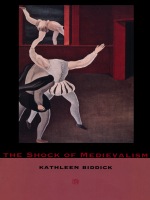 The Shock of Medievalism
Kathleen Biddick
Duke University Press, 1998 In The Shock of Medievalism Kathleen Biddick explores the nineteenth-century foundations of medieval studies as an academic discipline as well as certain unexamined contemporary consequences of these origins. By pairing debates over current academic trends and issues with innovative readings of medieval texts, Biddick exposes the presuppositions of the field of medieval studies and significantly shifts the objects of its historical inquiry. Biddick describes how the discipline of medieval studies was defined by a process of isolation and exclusion—a process that not only ignored significant political and cultural issues of the nineteenth century but also removed the period from the forces of history itself. Wanting to separate themselves from popular studies of medieval culture, and valuing their own studies as scientific, nineteenth-century academics created an exclusive discipline whose structure is consistently practiced today, despite the denials of most contemporary medieval scholars. Biddick supports her argument by discussing the unavowed melancholy that medieval Christians felt for Jews and by revealing the unintentional irony of nineteenth-century medievalists’ fabrication of sentimental objects of longing (such as the “gothic peasant”). The subsequent historical distortions of this century-old sentimentality, the relevance of worker dislocation during the industrial revolution, and other topics lead to a conclusion in which Biddick considers the impact of an array of factors on current medieval studies. Simultaneously displacing disciplinary stereotypes and altering an angle of historical inquiry, The Shock of Medievalism challenges accepted thinking even as it produces a new direction for medieval studies. This book will provoke scholars in this field and appeal to readers who are interested in how historicizing processes can affect the development of academic disciplines.
 The Shock of the Ancient: Literature and History in Early Modern France
Larry F. Norman
University of Chicago Press, 2011 The cultural battle known as the Quarrel of the Ancients and Moderns served as a sly cover for more deeply opposed views about the value of literature and the arts. One of the most public controversies of early modern Europe, the Quarrel has most often been depicted as pitting antiquarian conservatives against the insurgent critics of established authority. The Shock of the Ancient turns the canonical vision of those events on its head by demonstrating how the defenders of Greek literature—rather than clinging to an outmoded tradition—celebrated the radically different practices of the ancient world.
At a time when the constraints of decorum and the politics of French absolutism quashed the expression of cultural differences, the ancient world presented a disturbing face of otherness. Larry F. Norman explores how the authoritative status of ancient Greek texts allowed them to justify literary depictions of the scandalous. The Shock of the Ancient surveys the diverse array of aesthetic models presented in these ancient works and considers how they both helped to undermine the rigid codes of neoclassicism and paved the way for the innovative philosophies of the Enlightenment. Broadly appealing to students of European literature, art history, and philosophy, this book is an important contribution to early modern literary and cultural debates.
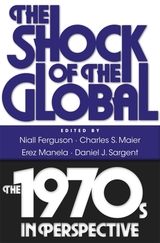 The Shock of the Global: The 1970s in Perspective
Edited by Niall Ferguson, Charles S. Maier, Erez Manela, and Daniel Sargent
Harvard University Press, 2010 From the vantage point of the United States or Western Europe, the 1970s was a time of troubles: economic “stagflation,” political scandal, and global turmoil. Yet from an international perspective it was a seminal decade, one that brought the reintegration of the world after the great divisions of the mid-twentieth century. It was the 1970s that introduced the world to the phenomenon of “globalization,” as networks of interdependence bound peoples and societies in new and original ways.
The 1970s saw the breakdown of the postwar economic order and the advent of floating currencies and free capital movements. Non-state actors rose to prominence while the authority of the superpowers diminished. Transnational issues such as environmental protection, population control, and human rights attracted unprecedented attention. The decade transformed international politics, ending the era of bipolarity and launching two great revolutions that would have repercussions in the twenty-first century: the Iranian theocratic revolution and the Chinese market revolution.
The Shock of the Global examines the large-scale structural upheaval of the 1970s by transcending the standard frameworks of national borders and superpower relations. It reveals for the first time an international system in the throes of enduring transformations.
 Shock Therapy: A History of Electroconvulsive Treatment in Mental Illness
Shorter, Edward
Rutgers University Press, 2007 Shock therapy is making a comeback today in the treatment of serious mental illness. Despite its reemergence as a safe and effective psychiatric tool, however, it continues to be shrouded by a longstanding negative public image, not least due to films such as the classic One Flew over the Cuckoo's Nest, where the inmate of a psychiatric clinic (played by Jack Nicholson) is subjected to electro-shock to curb his rebellious behavior. Beyond its vilification in popular culture, the stereotype of convulsive therapy as a dangerous and inhumane practice is fuelled by professional posturing and public misinformation. Electroconvulsive therapy, or ECT, has in the last thirty years been considered a method of last resort in the treatment of debilitating depression, suicidal ideation, and other forms of mental illness. Yet, ironically, its effectiveness in treating these patients would suggest it as a frontline therapy, bringing relief from acute symptoms and saving lives.
In this book, Edward Shorter and David Healy trace the controversial history of ECT and other "shock" therapies. Drawing on case studies, public debates, extensive interviews, and archival research, the authors expose the myths about ECT that have proliferated over the years. By showing ECT's often life-saving results, Shorter and Healy endorse a point of view that is hotly contested in professional circles and in public debates, but for the nearly half of all clinically depressed patients who do not respond to drugs, this book brings much needed hope.
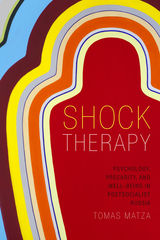 Shock Therapy: Psychology, Precarity, and Well-Being in Postsocialist Russia
Tomas Matza
Duke University Press, 2018 After the collapse of the Soviet Union, Russia witnessed a dramatic increase in psychotherapeutic options, which promoted social connection while advancing new forms of capitalist subjectivity amid often-wrenching social and economic transformations. In Shock Therapy Tomas Matza provides an ethnography of post-Soviet Saint Petersburg, following psychotherapists, psychologists, and their clients as they navigate the challenges of post-Soviet life. Juxtaposing personal growth and success seminars for elites with crisis counseling and remedial interventions for those on public assistance, Matza shows how profound inequalities are emerging in contemporary Russia in increasingly intimate ways as matters of selfhood. Extending anthropologies of neoliberalism and care in new directions, Matza offers a profound meditation on the interplay between ethics, therapy, and biopolitics, as well as a sensitive portrait of everyday caring practices in the face of the confounding promise of postsocialist democracy.
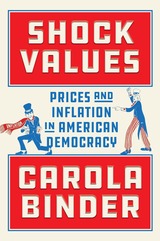 Shock Values: Prices and Inflation in American Democracy
Carola Binder
University of Chicago Press, 2024 ONE OF THE WALL STREET JOURNAL'S 10 BEST BOOKS OF 2024 How inflation and deflation fears shape American democracy. Many foundational moments in American economic history—the establishment of paper money, wartime price controls, the rise of the modern Federal Reserve—occurred during financial panics as prices either inflated or deflated sharply. The government’s decisions in these moments, intended to control price fluctuations, have produced both lasting effects and some of the most contentious debates in the nation’s history. A sweeping history of the United States’ economy and politics, Shock Values reveals how the American state has been shaped by a massive, ever-evolving effort to insulate its economy from the real and perceived dangers of price fluctuations. Carola Binder narrates how the pains of rising and falling prices have brought lasting changes for every generation of Americans. And with each brush with price instability, the United States has been reinvented—not as a more perfect union, but as a reflection of its most recent failures. Shock Values tells the untold story of prices and price stabilization in the United States. Expansive and enlightening, Binder recounts the interest-group politics, legal battles, and economic ideas that have shaped a nation from the dawn of the republic to the present.
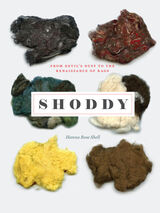 Shoddy: From Devil’s Dust to the Renaissance of Rags
Hanna Rose Shell
University of Chicago Press, 2020 The history of modern-day old clothes recycling begins with a thing called shoddy. Starting in the early 1800s, shoddy was the name given to a new material made from reclaimed wool, and to one of the earliest forms of industrial recycling. Old rags and leftover fabric clippings were ground to bits by a machine known as “the devil” and then re-used. Usually undisclosed, shoddy–also known as reworked wool–became suit jackets, army blankets, mattress stuffing, and much more. Shoddy is the afterlife of rags. And Shoddy, the book, reveals hidden worlds of textile intrigue.
In Shoddy: From Devil’s Dust to the Renaissance of Rags, Hanna Rose Shell takes readers on a journey to discover shoddy, from Haiti to the “shoddy towns” of West Yorkshire in England, to the United States, back in time to the British cholera epidemics and the American Civil War, and into agricultural fields, textile labs, and rag-shredding factories. Shell’s narrative is both literary and historical, drawing on an extraordinary range of sources, from court cases to military uniforms, mattress labels to medical textbooks, political cartoons to high art. Shoddy moves between genres, bringing richly drawn characters and unexpected objects to life. Along the way, shoddy becomes equally an evocative object and a portal into another world.
Almost since the time it first appeared, shoddy was both ubiquitous and controversial. In part because it was often so hard to detect, it was inherently suspicious. Public health experts worried about sanitation and disease—how could old clothes be disinfected? As well, the idea of wearing someone else’s old clothes so close to your own skin was discomforting in and of itself. Could you sleep peacefully knowing that your mattress was very likely to be stuffed with dead soldiers’ overcoats? The use of the term “virgin” wool, the idea of virginity in relation to clothes, in fact emerged as an effort by the wool industry to counter shoddy’s appeal: to make shoddy seem shoddy. Over time, shoddy would capture a host of personal, ethical, commercial, and societal failings. And yet, there was always, within shoddy, the alluring concept of regeneration, of what we today think of as conscious clothing, eco-fashion, sustainable textiles.
Shell exposes an interwoven tale of industrial espionage, political infighting, scientific inquiry, ethnic prejudices, and war profiteering. Discarded clothes may make many journeys over the course of several lifetimes. Not only in your garments, but under your rug, in your mattress pads, piano blankets, in the peculiar confetti-like stuffing in your mailing envelopes, even in the insulation in your walls. Though it began with wool, over the past century the shredding “devil” has turned to synthetics from nylon stockings to Kevlar. Shoddy is likely connected to something you are wearing right now. After reading, you will never use the word shoddy or think about your clothes, the environment, sustainability, or the intermingled world around you the same way again.
 Shogunal Politics: Arai Hakuseki and the Premises of Tokugawa Rule
Kate Wildman Nakai
Harvard University Press, 1988 Arai Hakuseki, advisor to the sixth and seventh Tokugawa shogun, played an important role in politics between 1709 and 1716, during an era of large changes in the bakufu. He participated in major policy decisions on currency, foreign trade, and local administration, while simultaneously trying to enhance the shogun's authority both within the bakufu and as a national ruler. The following shogun retained Hakuseki's fiscal and trade policies, but promptly reversed those measures designed to make the shogun a king-like figure.
Nakai examines these successes and failures against the background of the time, especially the bifurcated and ambiguous distribution of authority between the Tokugawa shogun and the tenno in Kyoto. She also traces the influence of Confucian political theory on Hakuseki's program and on his defense of that program in the face of criticism. Nakai draws upon Hakuseki's autobiography anddiary and the reportorial letters of a contemporary for Hakuseki's political activities, and on Hakuseki's historical works and memorials for the theoretical basis for his programs, rooted in Confucianism.
Illustrative and lively translations from Hakuseki enrich the book, helping to portray a multi-faceted personality who managed to blend practical politics and Confucian idealism within the complicated and dynamic environment of the early-eighteenth-century bakufu.
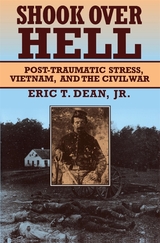 Shook over Hell: Post-Traumatic Stress, Vietnam, and the Civil War
Eric T. Dean Jr.
Harvard University Press, 1997 Vietnam still haunts the American conscience. Not only did nearly 58,000 Americans die there, but--by some estimates--1.5 million veterans returned with war-induced Post-Traumatic Stress Disorder (PTSD). This psychological syndrome, responsible for anxiety, depression, and a wide array of social pathologies, has never before been placed in historical context. Eric Dean does just that as he relates the psychological problems of veterans of the Vietnam War to the mental and readjustment problems experienced by veterans of the Civil War.
Employing a multidisciplinary approach that merges military, medical, and social history, Dean draws on individual case analyses and quantitative methods to trace the reactions of Civil War veterans to combat and death. He seeks to determine whether exuberant parades in the North and sectional adulation in the South helped to wash away memories of violence for the Civil War veteran. His extensive study reveals that Civil War veterans experienced severe persistent psychological problems such as depression, anxiety, and flashbacks with resulting behaviors such as suicide, alcoholism, and domestic violence. By comparing Civil War and Vietnam veterans, Dean demonstrates that Vietnam vets did not suffer exceptionally in the number and degree of their psychiatric illnesses. The politics and culture of the times, Dean argues, were responsible for the claims of singularity for the suffering Vietnam veterans as well as for the development of the modern concept of PTSD.
This remarkable and moving book uncovers a hidden chapter of Civil War history and gives new meaning to the Vietnam War.
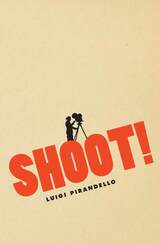 Shoot!: The Notebooks of Serafino Gubbio, Cinematograph Operator
Luigi Pirandello
University of Chicago Press, 2005 Originally published in Italian in 1915, Shoot! is one of the first novels to take as its subject the heady world of early motion pictures. Based on the absurdist journals of fictional Italian camera operator Serafino Gubbio, Shoot! documents the infancy of film in Europe—complete with proto-divas, laughable production schedules, and cost-cutting measures with priceless effects-—and offers a glimpse of the modern world through the camera's lens.
Shoot!, presented here in its 1927 English translation, is a classic example of Nobel Prize-winning Sicilian playwright Luigi Pirandello's (1867-1936) literary talent and genius for blurring the line between art and reality. From the film studio Kosmograph, Pirandello's Gubbio steadily winds the crank of his camera by day and scribbles with his pen by night, revealing the world both mundane and melodramatic that unfolds in front of his camera. Through Gubbio's narrative—saturated with fantasy and folly—Pirandello grapples with the philosophical implications of modernity. Like much of Pirandello's work, Shoot! parodies human weaknesses, drawing attention to the themes of isolation and madness as emerging tendencies in the modern world.
Enhanced by new critical commentaries, Shoot! is an entertaining caricature, capturing early twentieth-century Italian filmmaking and revealing its truths as only a parody can.
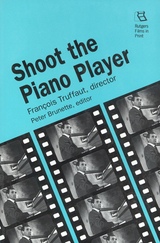 Shoot the Piano Player: Francois Truffaut, Director
Brunette, Peter
Rutgers University Press, 1993 When it appeared in 1960, the inspired fun of François Truffaut's Shoot the Piano Player shocked and delighted critics and audiences around the world. Its sudden shifts of tone and mood, its willful play with genre stereotypes, and its hilarious in-jokes clearly signaled that Jean-Luc Godard's equally innovative Breathless was not a fluke. The two films heralded the arrival of the so-called New Wave, sharing with other New Wave films an insistence on low-budget, location shooting and, above all, on cinema as the personal statement of an author. These films had a tremendous impact on all filmmaking.
Peter Brunette's introduction to this book gives us new insight into the film, based in part on revisualizing it in terms of recent postmodern and poststructuralist thinking. He argues, in effect, that Truffaut was one of the directors who paved the way for a postmodern aesthetic. The volume also contains a complete and accurate continuity script of the film (based on the authoritative, wide-screen version), a series of interviews with Truffaut (including one by Hélène Laroche Davis, previously unpublished), a large number of reviews and essays, a filmography, and selected bibliography.
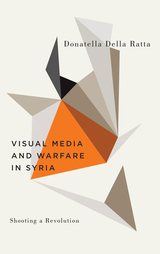 Shooting a Revolution: Visual Media and Warfare in Syria
Donatella Della Ratta
Pluto Press, 2018 From ISIS propaganda videos to popular regime-backed soap operas and digital activism, the Syrian conflict has been profoundly affected by visual media. But what are the aesthetic, political, and material implications of this disturbing collusion between war and digital culture?
Drawing on a decade of ethnographic research conducted in Syria and neighboring countries, Donatella Della Ratta examines here how the networked age shapes contemporary warfare, from conflict on the ground to the performance of violence on the screen. Her findings present a stark parallel to the digital democracy offered by techno-utopians, delving into the dark side of web 2.0 practices, where visual regimes of representation and media production are put in service of modes of destruction.
A vivid account of the politics of Syria’s visual media, from commercial television to citizen journalism and Daesh propaganda, Shooting a Revolution offers fascinating insight into the media’s role in transforming conflict zones in the digital age.
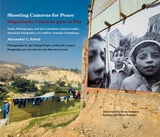 Shooting Cameras for Peace / Disparando Cámaras para la Paz: Youth, Photography, and the Colombian Armed Conflict / Juventud, Fotografía y el Conflicto Armado Colombiano
Alexander L. Fattal
Harvard University Press Winner of the John Collier Jr. Award for Still Photography
As a young Fulbright scholar in Bogotá determined to democratize the photographic gaze and bring new visions and voices to public debate about Colombia’s armed conflict, Alexander L. Fattal founded Disparando Cámaras para la Paz (Shooting Cameras for Peace). The project taught photography to young people in El Progreso, a neighborhood on the city’s outskirts that was home to families displaced by violence in the countryside. Cameras in hand, the youth had a chance to record and reimagine their daily existence.
Shooting Cameras for Peace / Disparando Cámaras para la Paz is a penetrating look at one of Latin America’s most dynamic participatory media projects. The haunting and exuberant photographs made under its auspices testify to young people’s will to play, to dream, and to survive. The images bear witness to the resilience and creativity of lives marked by a war that refuses to die.
With text in English and Spanish, Shooting Cameras for Peace / Disparando Cámaras para la Paz makes vital contributions to studies of collaborative media, photographic activism, and peace and conflict in Colombia. Fattal’s insightful text offers critical reflection on the genre of participatory photography and the structural challenges faced by similar media projects.
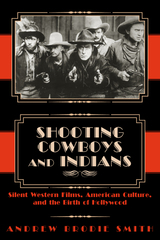 Shooting Cowboys and Indians: Silent Western Films, American Culture, and the Birth of Hollywood
Andrew Brodie Smith
University Press of Colorado, 2003 Academics have generally dismissed Hollywood's cowboy and Indian movies - one of its defining successful genres - as specious, one-dimensional, and crassly commercial. In Shooting Cowboys and Indians, Andrew Brodie Smith challenges this simplistic characterization of the genre, illustrating the complex and sometimes contentious process by which business interests commercialized images of the West. Tracing the western from its hazy silent-picture origins in the 1890s to the advent of talking pictures in the 1920s, Smith examines the ways in which silent westerns contributed to the overall development of the film industry. Focusing on such early important production companies as Selig Polyscope, New York Motion Picture, and Essanay, Smith revises current thinking about the birth of Hollywood and the establishment of Los Angeles as the nexus of filmmaking in the United States. Smith also reveals the role silent westerns played in the creation of the white male screen hero that dominated American popular culture in the twentieth century. Illustrated with dozens of historic photos and movie stills, this engaging and substantive story will appeal to scholars interested in Western history, film history, and film studies as well as general readers hoping to learn more about this little-known chapter in popular filmmaking.
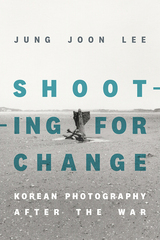 Shooting for Change: Korean Photography after the War
Jung Joon Lee
Duke University Press, 2024 In Shooting for Change, Jung Joon Lee examines postwar Korean photography across multiple genres and practices, including vernacular, art, documentary, and archival photography. Tracing the history of Korean photography while considering what is disguised or lost by framing the history of photography through nationhood, Lee considers the role of photography in shaping memory of historical events, representing the ideal national family, and motivating social movements. Further, through an investigation of what it means to practice photography under the normalized conditions of militarism, Lee treats the transnational militarism of Korea as a lens through which to probe the officially and culturally sanctioned readings of images when returning to them at different times. Among other themes, Lee draws on photography of militarized sex work, political protest in the military era, war orphans, and mass protests. Ultimately, Lee treats the formative periods in nation building and transnational militarization as both backdrops and cultivators for photographic works.
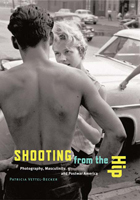 Shooting from the Hip: Photography, Masculinity, and Postwar America
Patricia Vettel-Becker
University of Minnesota Press, 2005 In Shooting from the Hip, Patricia Vettel-Becker reveals how photography helped to reconstruct and redefine the American idea of masculinity after the traumas of World War II. She argues that from 1945 to 1960 photography became increasingly concerned with restoring the male body and psyche, glorifying traditional masculinity - cowboys, boxers, athletes, military men - while treading carefully in an increasingly homophobic Cold War climate. Examining photojournalism as well as art and fashion photography, Shooting from the Hip finds in the crisp images of postwar photography five models of masculinity - the breadwinner, the action hero, the tough guy, the playboy, and the rebel. Vettel- Becker shows how the professionalization of photography itself was an attempt by male photographers to identify themselves as breadwinners. She goes on to analyze combat photography, exposing its valorization of action, subjugation of the enemy, and the use of the blurred shot to signify credibility. She links street photography - heir to Depression-era social documentary - with hard-boiled crime photography, exemplified in the works of William Klein and Weegee. And sexualized fashion models and their relationships with photographers, such as Richard Avedon and Irving Penn, fuel the ideal of the consummate playboy. Finally, Vettel-Becker demonstrates the authentic and sometimes rebellious nature of the male body as presented by sports photographers and others influenced by the Beat generation, including Robert Frank and Bruce Davidson. Taking a wide view of postwar photography, Vettel-Becker presents it as the triumph of a new form of modernist photography, centered on individual expression and the seductive image of the male body, and stimulated by a quest for the existential truth of masculinity.
 Shooting Polaris: A Personal Survey in the American West
John Hales
University of Missouri Press, 2005 Shooting Polaris is John Hales’s fascinating and far-reaching account of working as a government surveyor in the southern Utah desert. In it, he describes his search for a place in the natural world, beginning with an afternoon spent tracking down a lost crew member who cracked up on the job and concluding with his supervising a group of at-risk teenagers on a backpacking trip in the Escalante wilderness. In between, he depicts a range of experiences in and outside nature, including hostile barroom encounters between surveyors and tourists, weekends spent climbing Navajo Mountain and floating what remains of Glen Canyon, and late-night arguments concerning the meaning and purpose of nature with the eccentric polygamist who ran the town in which the surveyors parked their bunk trailers. Although this work is autobiographical, Shooting Polaris is so much more. It is a reflection on man’s relationship to nature and work, American history and the movement into the West, the desire to impose order and the contrary impulse for unmediated experience, the idealistic legacy of the sixties, the influence of the Mormon Church, and the often-antagonistic relationship of American capitalism to sound ecological management. Along the way, Hales introduces engaging characters and reveals the art, science, and history of surveying, an endeavor that turns out to be surprisingly profound.
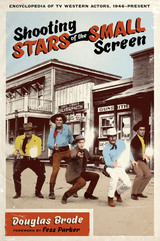 Shooting Stars of the Small Screen: Encyclopedia of TV Western Actors, 1946–Present
By Douglas Brode
University of Texas Press, 2009 Since the beginning of television, Westerns have been playing on the small screen. From the mid-1950s until the early 1960s, they were one of TV's most popular genres, with millions of viewers tuning in to such popular shows as Rawhide, Gunsmoke, and Disney's Davy Crockett. Though the cultural revolution of the later 1960s contributed to the demise of traditional Western programs, the Western never actually disappeared from TV. Instead, it took on new forms, such as the highly popular Lonesome Dove and Deadwood, while exploring the lives of characters who never before had a starring role, including anti-heroes, mountain men, farmers, Native and African Americans, Latinos, and women. Shooting Stars of the Small Screen is a comprehensive encyclopedia of more than 450 actors who received star billing or played a recurring character role in a TV Western series or a made-for-TV Western movie or miniseries from the late 1940s up to 2008. Douglas Brode covers the highlights of each actor's career, including Western movie work, if significant, to give a full sense of the actor's screen persona(s). Within the entries are discussions of scores of popular Western TV shows that explore how these programs both reflected and impacted the social world in which they aired. Brode opens the encyclopedia with a fascinating history of the TV Western that traces its roots in B Western movies, while also showing how TV Westerns developed their own unique storytelling conventions.
Shooting the Family: Transnational Media and Intercultural Values
Edited by Patricia Pisters and Wim Staat
Amsterdam University Press, 2005 Shooting the Family, a collection of essays on the contemporary media landscape, explores ever-changing representations of family life on a global scale. The contributors argue that new recording technologies allows families an unusual kind of freedom—until now unknown—to define and respond to their own lives and memories. Recently released videos made by young émigrés as they discover new homelands and resolve conflicts with their parents, for example, reverberate alongside the dark portrayals of family life in the formal filmmaking of Ang Lee. This book will be a boon to scholars of film theory and media studies, as well as to anyone interested in the construction of the family in a postmodern world.
Shooting Women: Behind the Camera, Around the World
Harriet Margolis, Alexis Krasilovsky and Julia Stein
Intellect Books, 2015 Shooting Women takes readers around the world to explore the lives of camerawomen working in features, TV news, and documentaries. From first-world pioneers like African American camerawoman Jessie Maple Patton—who got her job only after suing the union—to China’s first camerawomen who traveled with Mao, to rural India where poor women have learned camerawork as a means of empowerment, Shooting Women reveals a world of women working with courage and skill in what has long been seen as a male field.
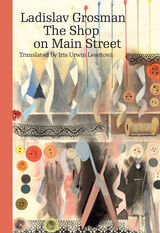 The Shop on Main Street
Ladislav Grosman
Karolinum Press, 2019 Written by a Jewish survivor of the Holocaust, The Shop on Main Street is the story that inspired the highly successful Academy Award–winning Czechoslovak film of the same title. Looking at the Holocaust through the eyes of a complicit individual, the narrative follows a good-natured carpenter living in a Slovak town in 1942 who unwittingly becomes a participant in a moral crisis involving the abuse and persecution of Jews. Describing the film adaptation of Ladislav Grosman’s novel, the New York Times declared that it is a “human drama that is a moving manifest of the dark dilemma that confronted all people who were caught as witnesses to Hitler's terrible crime.” The review continues: “‘Is one his brother's keeper?’ is the thundering question the situation asks, and then, ‘Are not all men brothers?’ The answer given is a grim acknowledgement. But the unfolding of the drama is simple, done in casual, homely, humorous terms—until the terrible, heartbreaking resolution of the issue at the end.”
 A Shoppers’ Paradise: How the Ladies of Chicago Claimed Power and Pleasure in the New Downtown
Emily Remus
Harvard University Press, 2019 How women in turn-of-the-century Chicago used their consumer power to challenge male domination of public spaces and stake their own claim to downtown.
Popular culture assumes that women are born to shop and that cities welcome their trade. But for a long time America’s downtowns were hardly welcoming to women. Emily Remus turns to Chicago at the turn of the twentieth century to chronicle a largely unheralded revolution in women’s rights that took place not at the ballot box but in the streets and stores of the business district.
After the city’s Great Fire, Chicago’s downtown rose like a phoenix to become a center of urban capitalism. Moneyed women explored the newly built department stores, theaters, and restaurants that invited their patronage and encouraged them to indulge their fancies. Yet their presence and purchasing power were not universally appreciated. City officials, clergymen, and influential industrialists condemned these women’s conspicuous new habits as they took their place on crowded streets in a business district once dominated by men.
A Shoppers’ Paradise reveals crucial points of conflict as consuming women accessed the city center: the nature of urban commerce, the place of women, the morality of consumer pleasure. The social, economic, and legal clashes that ensued, and their outcome, reshaped the downtown environment for everyone and established women’s new rights to consumption, mobility, and freedom.
 Shopping for Water: How the Market Can Mitigate Water Shortages in the American West
Peter W. Culp, Robert Glennon, and Gary Libecap
Island Press, 2015 The American West has a long tradition of conflict over water. But after fifteen years of drought across the region, it is no longer simply conflict: it is crisis. In the face of unprecedented declines in reservoir storage and groundwater reserves throughout the West, Shopping for Water focuses on a set of policies that could contribute to a lasting solution: using market forces to facilitate the movement of water resources and to mitigate the risk of water shortages.
Shopping for Water begins by reviewing key dimensions of this problem: the challenges of population and economic growth, the environmental stresses from overuse of common water resources, the risk of increasing water-supply volatility, and the historical disjunction that has developed between and among rural and urban water users regarding the amount we consume and the price we pay for water. The authors then turn to five proposals to encourage the broader establishment and use of market institutions to encourage reallocation of water resources and to provide new tools for risk mitigation. Each of the five proposals offers a means of building resilience into our water management systems.
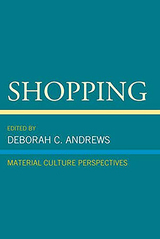 Shopping: Material Culture Perspectives
Deborah C. Andrews
University of Delaware Press, 2015 The degree to which shopping, or, more broadly, consumerism, is both critiqued and defended in American society confirms the role that commercial goods play in our daily lives. This collection of essays provides case studies depicting selected aspects of this engaging activity. The authors include several historians with diverging specialties: an art historian, an anthropologist, an environmental journalist, a geographer and urban planner, and practicing artists. Each author demonstrates how a material culture perspective—a focus on the relationship between people and their things—can illuminate a specific corner of consumption. Connecting the essays are concerns about the spaces in which shopping occurs; about the experience of shopping itself, both individual and social; and about its economic, environmental, and personal downsides. Collectively, these essays demonstrate how a material culture perspective on shopping yields insights into multiple aspects of American culture.
Published by University of Delaware Press. Distributed worldwide by Rutgers University Press.
 Shopping, or The End of Time
Emily Bludworth de Barrios
University of Wisconsin Press, 2022 “I am going to make a poem,” writes Emily Bludworth de Barrios, “As if / I could put beautiful things in a box to keep them there.” With Shopping, or The End of Time she has done that and so much more. These kaleidoscopic images reflect and reverberate across time and space, revealing collisions of identity, motherhood, childhood, houses, shopping malls, industrial canals—the hopes and fears of what we’ve lost and gained over the decades in our mad rush for connection, for ownership, for goods. A detective’s red thread spiderweb mapping the constellations among parenting, capitalism, aging, and ghosts, this stunning collection is wistful, unmoored, glamorous, and immense. These tour-de-force poems simultaneously capture an impression of emptiness and pleasure, of existing in a liminal space filled with both hollowness and potential. Even though we lived at the edge of a great rupture,
It was difficult to tell when the world broke.
—Excerpt from “Ravine”
Shopping Spaces and the Urban Landscape in Early Modern Amsterdam, 1550-1850
Clé Lesger
Amsterdam University Press, 2020 In this study, the appearance and location of shops in Amsterdam during the early modern period is linked to major changes in the urban economy, the size and socio-spatial distribution of its population, and the structure of the urban grid. Not only is there ample attention for the spatial distribution of shops across the urban landscape, but for the first time it is also accurately charted what the exterior and interior of Amsterdam shops looked like and how they changed in the course of the centuries. Partly as a result of this, it has proved possible to give an impression of the ways in which retailers and customers interacted. The Dutch language edition of this book is available from Uitgeverij Verloren (2013): Het winkellandschap van Amsterdam, ISBN: 978 90 8704 373 5.
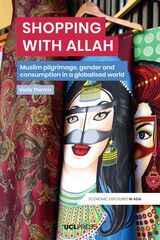 Shopping with Allah: Muslim Pilgrimage, Gender and Consumption in a Globalized World
Viola Thimm
University College London, 2023 A study of how the intersection of gender and Islam develops and changes in a pilgrimage-tourism nexus as part of capitalist and halal consumer markets.
Shopping with Allah illustrates the ways in which religion is mobilized in package tourism and how spiritual, economic, and gendered practices are combined in a form of tourism where the goal is not purely leisure but also ethical and spiritual cultivation. Drawing on extensive ethnographic fieldwork in Malaysia, the United Arab Emirates, and Oman, Thimm sheds light on how Islam and gender frame Malaysian religious tourism and pilgrimage to the Arabian Peninsula and raises many issues that are of great importance beyond these regional contexts.
This book also offers an innovative methodological-analytical toolkit to research mobility and intersectionality across sociogeographic scales. By bringing methodological holism into a fruitful engagement with the antiracist-feminist framework intersectionality, Thimm argues that hierarchical relationships, such as marginalization, power, and empowerment, can shift for an individual or a social group depending upon the social sphere.
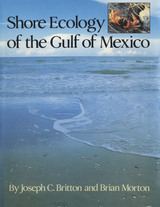 Shore Ecology of the Gulf of Mexico
By Joseph C. Britton and Brian Morton
University of Texas Press, 1989 To the casual visitor, the Gulf of Mexico shores offer mainly sun, sand, and sea. Even the standard field guides, focused on one group of animals or plants, barely hint at the wealth and diversity of habitats and species along Gulf shores. Shore Ecology of the Gulf of Mexico, using a “whole habitat” approach, breaks new ground in describing all the conspicuous vascular plants, algae, birds, mammals, mollusks, crustaceans, and other invertebrates for each marine habitat. The area covered begins west of the Mississippi delta in Louisiana and follows the shores west and south to the Yucatan Peninsula in Mexico. Transitions between habitats also receive detailed treatment. The authors discuss changes in flora and fauna that result from differences in climate, shore geology, and patterns of precipitation in the succeeding habitats along the Gulf rim. They include discussion of more than 1,000 species of plants and animals, both on shore and in the near-shore subtidal zone, to give a virtually complete picture of western Gulf coast ecosystems. Excellent line drawings and photographs of over 800 species complement the text. For marine scientists, students, and knowledgeable beachcombers, this is a thorough source on Gulf coast marine life.
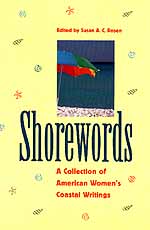 Shorewords: A Collection of American Women's Coastal Writings
Susan A. C. Rosen
University of Virginia Press, 2003 Emily Dickinson, Lucille Clifton, Rachel Carson, and Gretel Ehrlich: They hail from different regions, employ widely divergent writing styles, and are not known primarily as nature writers. Yet in Shorewords, Susan A. C. Rosen has compiled an imaginative and beautifully balanced anthology of selections from these and more than forty other important writers connected by their love for the coastline. Edna St. Vincent Millay's "Low Tide," E. Annie Proulx's "Cast Away," Harriet Beecher Stowe's "Naomi," and Ursula Le Guin's "Text" are among the diverse pieces that reveal the writers' common fascination with the people and places at water's edge. Organized thematically, Shorewords reflects women's experiences of living along the coast through a wide range of material, including short fiction, poetry, and excerpts from novels and memoirs. All reveal the rich response to shorelines women writers have expressed--and continue to express--in poetry and prose.
Includes:
Jennifer Ackerman * Nancy Allen * Gloria Anzaldúa * Kerry Neville Bakken * Dorothy Balano * Andrea Barrett * Doris Betts * Kate Braverman * Mary Louisa Burtch Brewster * Mary Parker Buckles * Rachel L. Carson * Kate Chopin * Amy Clampitt * Lucille Sayles Clifton * Wanda Coleman * Rebecca Blaine Harding Davis * Jan DeBlieu * Emily Dickinson * Joan Didion * Annie Dillard * Gretel Ehrlich * Anita Endrezze * Diane P. Freedman * Tess Gallagher * Susan Glaspell * Mary Hood * Cynthia Huntington * Sarah Orne Jewett * Mary Karr * Susan Kenney * Carolyn Kizer * Ursula K. Le Guin * Denise Levertov * Anne Morrow Lindbergh * Nancy Lord * Sandra McPherson * Edna St. Vincent Millay * Marianne Moore * Ruth Moore * Sena Jeter Naslund * Gloria Naylor * Mary Oliver * Elizabeth Stuart Phelps * E. Annie Proulx * May Sarton * Elizabeth Spencer * Harriet Beecher Stowe * May Swenson * Sara Teasdale * Celia Thaxter
--------------------------------------------------------------------------------
Susan A. C. Rosen, Professor of English at Anne Arundel Community College, is the author of numerous articles on American literature and the environment.
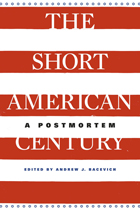 The Short American Century: A Postmortem
Andrew J. Bacevich
Harvard University Press, 2012 Writing in Life magazine in February 1941, Henry Luce memorably announced the arrival of “The American Century.” The phrase caught on, as did the belief that America’s moment was at hand. Yet as Andrew J. Bacevich makes clear, that century has now ended, the victim of strategic miscalculation, military misadventures, and economic decline. To take stock of the short American Century and place it in historical perspective, Bacevich has assembled a richly provocative range of perspectives.
What did this age of reputed American preeminence signify? What caused its premature demise? What legacy remains in its wake? Distinguished historians Jeffry Frieden, Akira Iriye, David Kennedy, Walter LaFeber, Jackson Lears, Eugene McCarraher, Emily Rosenberg, and Nikhil Pal Singh offer illuminating answers to these questions. Achievement and failure, wisdom and folly, calculation and confusion all make their appearance in essays that touch on topics as varied as internationalism and empire, race and religion, consumerism and globalization.
As the United States grapples with protracted wars, daunting economic uncertainty, and pressing questions about exactly what role it should play in a rapidly changing world, understanding where the nation has been and how it got where it is today is critical. What did the forging of the American Century—with its considerable achievements but also its ample disappointments and missed opportunities—ultimately yield? That is the question this important volume answers.
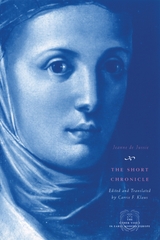 The Short Chronicle: A Poor Clare's Account of the Reformation of Geneva
Jeanne de Jussie
University of Chicago Press, 2006 Jeanne de Jussie (1503–61) experienced the Protestant Reformation from within the walls of the Convent of Saint Clare in Geneva. In her impassioned and engaging Short Chronicle, she offers a singular account of the Reformation, reporting not only on the larger clashes between Protestants and Catholics but also on events in her convent—devious city councilmen who lied to trusting nuns, lecherous soldiers who tried to kiss them, and iconoclastic intruders who smashed statues and burned paintings. Throughout her tale, Jussie highlights women’s roles on both sides of the conflict, from the Reformed women who came to her convent in an attempt to convert the nuns to the Catholic women who ransacked the shop of a Reformed apothecary. Above all, she stresses the Poor Clares’ faithfulness and the good men and women who came to them in their time of need, ending her story with the nuns’ arduous journey by foot from Reformed Geneva to Catholic Annecy.
First published in French in 1611, Jussie’s Short Chronicle is translated here for an English-speaking audience for the first time, providing a fresh perspective on struggles for religious and political power in sixteenth-century Geneva and a rare glimpse at early modern monastic life.
A Short Commentary on Kant's Critique of Pure Reason
A. C. Ewing
University of Chicago Press, 1967 This concise volume is at once an excellent introduction to Kant's Critique of Pure Reason and an original analysis of Kant's ideas. Intended to be read in conjunction with Kant's text, Ewing's commentary systematically examines the Critique chapter by chapter. It offers valuable guidance to new students of Kant and thought-provoking discussion to advanced scholars.
A. C. Ewing (1899-1973) was a member of the Faculty of Moral Science at Cambridge University and a Fellow of the British Academy. He taught at several universities in the United States including Princeton University and Northwestern University. His many books include and The Fundamental Questions of Philosophy and The Definition of Good.
The Short Cut
Ennio Flaiano
Northwestern University Press, 1992 In this novel, first published in Italy in 1947, a chance encounter and an accidental shooting leave a young woman dead and a young soldier attempting to reason away responsibility and assuage his guilt.
Short Epics
Edited and translated by Michael C. J. Putnam with James Hankins
Harvard University Press, 2004 Maffeo Vegio (1407-1458) was the outstanding Latin poet of the first half of the fifteenth century. This volume includes Book XIII of Vergil's Aeneid, Vegio's famous continuation of the Roman epic, which was extremely popular in the later Renaissance, printed many times and translated into every major European language (and even into Scottish). It also contains three other epic works: Astyanax, based on an episode in the Iliad; The Golden Fleece (Vellus Aureum); and Antonias, a short epic based on the life of Saint Anthony of Egypt. Antonias is the first Christian epic of the Renaissance, a precursor of Milton's Paradise Lost. This volume contains the first modern editions of the Latin text of Antonias and Astyanax.
The Short Fiction of Edgar Allan Poe: AN ANNOTATED EDITION
Edited by Stuart Levine and Susan Levine
University of Illinois Press, 1990 The Short Fiction of Edgar Allan Poe brings together, in one convenient edition, all of the information a reader needs to understand Poe's stories. Readable, attractive, and accessible to a general reader or student, it also provides a useful resource for the scholar and specialist. Stuart Levine and Susan Levine tracked down information that is often highly specialized and hard to come by through an extensive program of literary sleuthing—an investigation that took him through the hundreds of places where scholars make their contributions to knowledge.
The Short Guide to Community Development
Alison Gilchrist and Marilyn Taylor
Bristol University Press, 2011 With the topic of community high on the public agenda, this timely guide provides an introduction to community development, its origins and some of the current trends and challenges. The book also explores how community development can be applied in different practice domains to achieve a range of policy objectives. Accessibly written, it will be essential for students studying a degree or taking a module in the area as well as those already involved in community development and community organising.
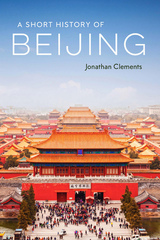 A Short History of Beijing
Jonathan Clements
Haus Publishing, 2022 A guide to the history of China’s capital, from before its rise to prominence as the seat of empires to the 2022 Winter Olympics.
Before China’s capital became a sprawling megacity and international center of business and culture, its fortunes fluctuated under a dozen dynasties. It has been a capital for several states, including those headed by Mongolian chiefs and the glorious Ming emperors, whose tombs can still be found on its outskirts. And before all that, it was a campsite for primitive hominids, known as the Peking Man. A Short History of Beijing tells the story of this remarkable city, from its more famous residents—Khubilai Khan, Marco Polo, and Chairman Mao—right up to the twenty-first century, as modern construction wiped out so much of the old city to make way for its twenty-million-strong population. Through his timely and intimate portrait of the world’s most populous capital city, Jonathan Clements reveals the history of China itself.
 A Short History of Cambridge
Richard Tames
Haus Publishing, 2025 A digestible and comprehensive tour of the fascinating history of one of England’s most famous towns.
A Short History of Cambridge provides a narrative of the city and university, from the Middle Ages to the present day. Going beyond the world-renowned research attractions of Cambridge University, this revised paperback edition explores the vast cultural output of the town, from art and literature to theater and comedy. Richard Tames sheds light on the very origins of academia in the area, the intricate lives of the students and scholars who studied there, and how this community interacted with the townsfolk over the past eight hundred years.
Cambridge offers the splendor of King's College Chapel and the beauty of “the Backs” as well as outstanding collections of fans and fritillaries, sculpture and stained glass, and medieval coins and oriental manuscripts. Attractions include the world-class Fitzwilliam Museum and Botanic Gardens, quirky Kettle’s Yard, and museums devoted to archaeology, anthropology, zoology, earth sciences, polar research, and the history of science, plus Britain's oldest bookshop. Enter the world of “Bumps and Bedders” and learn why May Week is in June. This joyful history of the town to which more than eight million visitors flock every year will delight both readers familiar with the cobbles of Cambridge and those who have seen no further than the stained-glass windows of King’s College Chapel.
 A Short History of Cambridge
Richard Tames
Haus Publishing, 2025 An Armchair Traveller's History of Cambridge provides not only a narrative of the city and university, and a guide to visits within a short driving distance, it also features a variety of aspects ignored in other accounts: food and fashion, music and gardens, books and clubs, Cambridge contributions to poetry, theatre and sport, royal associations and links with the Arab world and China. Cambridge offers the splendour of King's College Chapel and the beauty of "the Backs" but also outstanding collections of fans and fritillaries, sculpture and stained glass, medieval coins and oriental manuscripts. Free attractions include the world-class Fitzwilliam Museum and Botanic Gardens, quirky Kettle's Yard, and museums devoted to Archaeology, Anthropology, Zoology, Earth Sciences, Polar Research and the History of Science—plus Britain's oldest bookshop. Enter the world of "Bumps and Bedders" and learn why May Week is in June. Research reveals that most visitors to Cambridge never venture more than four hundred yards from the Market Square. An Armchair Traveller's History of Cambridge will help you do better than that—and want to.
A Short History of Canada for Americans
Alfred Leroy Burt
University of Minnesota Press, 1942
A Short History of Canada for Americans was first published in 1942. Minnesota Archive Editions uses digital technology to make long-unavailable books once again accessible, and are published unaltered from the original University of Minnesota Press editions.
A Short History of Carson City
Richard Moreno
University of Nevada Press, 2011 Nevada’s capital city is today a charming, modern community, with an unusually eventful past. A Short History of Carson City traces its history from its origin as a mid-nineteenth-century trading post to its rise as the political center of Nevada. Here are the hard-working citizens and colorful characters, the political and business decisions, and the evolving economy that helped shape it. This is the first comprehensive historical account of a thoroughly modern state capital with its roots deep in Nevada’s turbulent past.
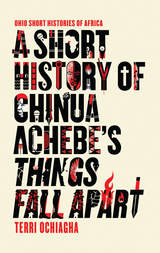 A Short History of Chinua Achebe’s Things Fall Apart
Terri Ochiagha
Ohio University Press, 2018 The publication of Chinua Achebe’s Things Fall Apart (1958) is heralded as the inaugural moment of modern African fiction, and the book remains the most widely read African novel of all time. Translated into dozens of languages, it has sold more than twelve million copies and has become a canonical reading in schools the world over. While Things Fall Apart is neither the first African novel to be published in the West nor necessarily the most critically valued, its iconic status has surpassed even that of its author. Until now—in the sixtieth anniversary year of its publication—there has not been an updated history that moves beyond the book’s commonly discussed contexts and themes. In the accessible and concise A Short History of Chinua Achebe’s Things Fall Apart, Terri Ochiagha provides that history, asking new questions and bringing to wider attention unfamiliar but crucial elements of the Things Fall Apart story. These include new insights into questions of canonicity and into literary, historiographical, and precolonial aesthetic influences. She also assesses adaptations and appropriations not just in films but in theater, hip-hop, and popular literary genres such as Onitsha Market Literature.
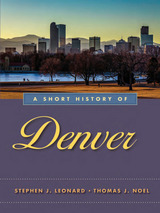 A Short History of Denver
Stephen J. Leonard
University of Nevada Press, 2016 A Short History of Denver covers more than 150 years of Denver’s rich history. The book recounts the takeover of Native American lands, the founding of small towns on the South Platte River at the base of the Rocky Mountains, and the creation of a city, which by 1890 was among the nation’s major western urban centers. Leonard and Noel tell the stories of powerful economic and political leaders such as John Evans, Horace Tabor, and David Moffat, and delve into the contributions of women, including Elizabeth Byers and Margaret (Molly) Brown. The book also recognizes the importance of the city’s ethnic communities, including African Americans, Asians, Latinos, and many others.
A Short History of Denver portrays the city’s twentieth-century ups and downs, including the City Beautiful movement, political corruption, the rise of the Ku Klux Klan in the 1920s, and the Great Depression of the 1930s. Here readers will find the meat and potatoes of economic and political history and much more, including sports history, social history, and the history of metropolitan-wide efforts to preserve the past.
 A Short History of Distributive Justice
Samuel Fleischacker
Harvard University Press, 2005 Distributive justice in its modern sense calls on the state to guarantee that everyone is supplied with a certain level of material means. Samuel Fleischacker argues that guaranteeing aid to the poor is a modern idea, developed only in the last two centuries.
Earlier notions of justice, including Aristotle’s, were concerned with the distribution of political office, not of property. It was only in the eighteenth century, in the work of philosophers such as Adam Smith and Immanuel Kant, that justice began to be applied to the problem of poverty. To attribute a longer pedigree to distributive justice is to fail to distinguish between justice and charity.
Fleischacker explains how confusing these principles has created misconceptions about the historical development of the welfare state. Socialists, for instance, often claim that modern economics obliterated ancient ideals of equality and social justice. Free-market promoters agree but applaud the apparent triumph of skepticism and social-scientific rigor. Both interpretations overlook the gradual changes in thinking that yielded our current assumption that justice calls for everyone, if possible, to be lifted out of poverty. By examining major writings in ancient, medieval, and modern political philosophy, Fleischacker shows how we arrived at the contemporary meaning of distributive justice.
A Short History of Ethics
Alasdair MacIntyre
University of Notre Dame Press, 1998 A Short History of Ethics is a significant contribution written by one of the most important living philosophers. For the second edition Alasdair MacIntyre has included a new preface in which he examines his book “thirty years on” and considers its impact. It remains an important work, ideal for all students interested in ethics and morality.
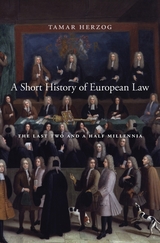 A Short History of European Law: The Last Two and a Half Millennia
Tamar Herzog
Harvard University Press, 2018 A Short History of European Law brings to life 2,500 years of legal history, tying current norms to the circumstances of their conception. Tamar Herzog describes how successive legal systems built upon one another, from ancient times through the European Union. Roman law formed the backbone of each configuration, though the way it was used and reshaped varied dramatically from one century and place to the next. Only by considering Continental civil law and English common law together do we see how they drew from and enriched this shared tradition.
“A remarkable achievement, sure to become a go-to text for scholars and students alike… A must-read for anyone eager to understand the origins of core legal concepts and institution—like due process and rule of law—that profoundly shape the societies in which we live today.”
—Amalia D. Kessler, Stanford University
“A fundamental and timely contribution to the understanding of Europe as seen through its legal systems. Herzog masterfully shows the profound unity of legal thinking and practices across the Continent and in England.”
—Federico Varese, Oxford University
“Required reading for Americanists North and South, and indeed, for all of us inhabiting a postcolonial world deeply marked by the millennia of legal imaginings whose dynamic transformations it so lucidly charts.”
—David Nirenberg, University of Chicago
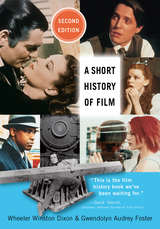 A Short History of Film
Dixon, Wheeler Winston
Rutgers University Press, 2013
A Short History of Film, Second Edition, provides a concise and accurate overview of the history of world cinema, detailing the major movements, directors, studios, and genres from 1896 through 2012. Accompanied by more than 250 rare color and black-and-white stills—including many from recent films—the new edition is unmatched in its panoramic view, conveying a sense of cinema's sweep in the twentieth and early twenty-first centuries as it is practiced in the United States and around the world.
Wheeler Winston Dixon and Gwendolyn Audrey Foster present new and amended coverage of the industry in addition to updating the birth and death dates and final works of notable directors. Their expanded focus on key films brings the book firmly into the digital era and chronicles the death of film as a production medium.
The book takes readers through the invention of the kinetoscope, the introduction of sound and color between the two world wars, and ultimately the computer-generated imagery of the present day. It details significant periods in world cinema, including the early major industries in Europe, the dominance of the Hollywood studio system in the 1930s and 1940s, and the French New Wave of the 1960s. Attention is given to small independent efforts in developing nations and the more personal independent film movement that briefly flourished in the United States, the significant filmmakers of all nations, and the effects of censorship and regulation on production everywhere. In addition, the authors incorporate the stories of women and other minority filmmakers who have often been overlooked in other texts.
Engaging and accessible, this is the best one-stop source for the history of world film available for students, teachers, and general audiences alike.
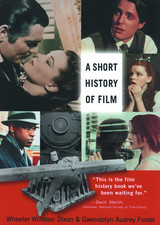 A Short History of Film
Dixon, Wheeler Winston
Rutgers University Press, 2008
The history of international cinema is now available in a concise, conveniently sized, and affordable volume. Succinct yet comprehensive, A Short History of Film provides an accessible overview of the major movements, directors, studios, and genres from the 1880s to the present. More than 250 rare stills and illustrations accompany the text, bringing readers face to face with many of the key players and films that have marked the industry.
Beginning with precursors of what we call moving pictures, Wheeler Winston Dixon and Gwendolyn Audrey Foster lead a fast-paced tour through the invention of the kinetoscope, the introduction of sound and color between the two world wars, and ultimately the computer generated imagery of the present day. They detail significant periods in world cinema, including the early major industries in Europe, the dominance of the Hollywood studio system in the 1930s and 1940s, and the French New Wave of the 1960s. Special attention is also given to small independent efforts in developing nations and the corresponding more personal independent film movement that briefly flourished in the United States, the significant filmmakers of all nations, censorship and regulation and how they have affected production everywhere, and a wide range of studios and genres. Along the way, the authors take great care to incorporate the stories of women and other minority filmmakers who have often been overlooked in other texts.
Compact and easily readable, this is the best one-stop source for the history of world film available to students, teachers, and general audiences alike.
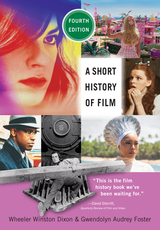 A Short History of Film, Fourth Edition
Wheeler Winston Dixon
Rutgers University Press, 2026 A Choice Significant University Press Title for Undergraduates
This updated and expanded edition of A Short History of Film provides an accessible overview of the major movements, directors, studios, and genres from the 1880s to the present. Succinct yet comprehensive, with more than 250 rare stills and illustrations, this edition provides new information on contemporary horror, comic book, and franchise films; issues surrounding women and minority filmmakers; the effects of the COVID-19 pandemic on movies worldwide; the shift from film to digital production; the rising use of artificial intelligence in cinema; and the impact of streaming on the industry.
Beginning with the precursors of moving pictures, Wheeler Winston Dixon and Gwendolyn Audrey Foster lead a fast-paced tour through the invention of the kinetoscope, the introduction of sound and color between the two world wars, and ultimately the computer-generated imagery of the present day. They detail significant periods in world cinema, including the creation of early major industries in Europe, the dominance of the Hollywood studio system in the 1930s and 1940s, and the French New Wave of the 1960s. They also highlight independent efforts in developing nations and the corresponding more personal independent film movement that briefly flourished in the United States.
Compact and easily readable, this is a vital history of international cinema is a one-stop resource for students, teachers, and general readers alike.
A Short History of Film, Third Edition
Dixon, Wheeler Winston
Rutgers University Press, 2018 With more than 250 images, new information on international cinema—especially Polish, Chinese, Russian, Canadian, and Iranian filmmakers—an expanded section on African-American filmmakers, updated discussions of new works by major American directors, and a new section on the rise of comic book movies and computer generated special effects, this is the most up to date resource for film history courses in the twenty-first century.
 A Short History of Finland
Jonathan Clements
Haus Publishing, 2022 A fascinating history of Finland from prehistoric times to the twenty-first century.
The modern nation of Finland is the heir to centuries of history, as a wilderness at the edge of early Europe, a borderland of the Swedish empire, and a Grand Duchy of tsarist Russia. And, as Jonathan Clements’s vivid, concise volume shows, it is a tale paved with oddities and excitements galore: from prehistoric reindeer herders to medieval barons, Christian martyrs to Viking queens, and, in the twentieth century, the war heroes who held off the Soviet Union against impossible odds.
Offering accounts of public artworks, literary giants, legends, folktales, and famous figures, Clements provides an indispensable portrait of this fascinating nation.
This updated edition includes expanded coverage on the Second World War, as well as new sections on Finns in America and Russia, the centenary of the republic, and Finland’s battle with COVID-19, right up to its historic application to join NATO.
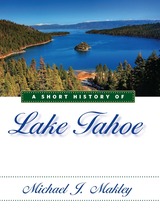 A Short History of Lake Tahoe
Michael J. Makley
University of Nevada Press, 2011 Lake Tahoe is one of the scenic wonders of the American West, a sapphire jewel that attracts millions of visitors each year. But the lake drew Native Americans to its summer shores for millennia, as well as more recent fortune hunters, scientists, and others. A Short History of Lake Tahoe recounts the long, fascinating history of Lake Tahoe. Author Michael J. Makley examines the geology and natural history of the lake and introduces the people who shaped its history, including the Washoe Indians and such colorful characters as Mark Twain and legendary teamster Hank Monk, and later figures like entertainer Frank Sinatra and Olympic skier Julia Mancuso. He also covers the development of the lake's surrounding valley, including the impacts of mining, logging, and tourism, and the economic, political, and social controversies regarding the use and misuse of the lake's resources. Generously illustrated with historic photographs, this book is an engaging introduction to one of the most magnificent sites in the world. It also illuminates the challenges of protecting natural beauty and a fragile environment while preserving public access and a viable economy in the surrounding communities.
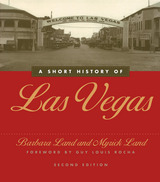 A Short History of Las Vegas
Barbara Land
University of Nevada Press, 2004 Today’s Las Vegas welcomes 35 million visitors a year and reigns as the world’s premier gaming mecca. But it is much more than a gambling paradise. In A Short History of Las Vegas, Barbara and Myrick Land reveal a fascinating history beyond the mobsters, casinos, and showgirls. The authors present a complete story, beginning with southern Nevada’s indigenous peoples and the earliest explorers to the first pioneers to settle in the area; from the importance of the railroad and the construction of Hoover Dam to the arrival of the Mob after World War II; from the first isolated resorts to appear in the dusty desert to the upscale, extravagant theme resorts of today. Las Vegas—and its history—is full of surprises. The second edition of this lively history includes details of the latest developments and describes the growing anticipation surrounding the Las Vegas centennial celebration in 2005. New chapters focus on the recent implosions of famous old structures and the construction of glamorous new developments, headline-making mergers and multibillion-dollar deals involving famous Strip properties, and a concluding look at what life is like for the nearly two million residents who call Las Vegas home.
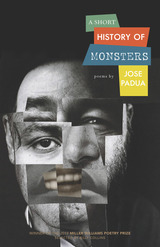 A Short History of Monsters: Poems
Jose Padua
University of Arkansas Press, 2019 Winner, 2019 Miller Williams Poetry Prize “We are the happy riders on the stream of Padua’s consciousness . . . a smart, sympathetic mind at work.”
—Billy Collins Drawing on the spirit of New York City in decades past, A Short History of Monsters presents the sins and obsessions of a poet nimble in beat and slam traditions. In his first full-length collection, Jose Padua wrestles with an American dream interrupted by failure, excess, and other nightmares. Often brash and unruly, these poems range from recollections of lost, drunken days to unadorned manifestations of hope. Throughout, the speaker redefines his relationship to pop culture, praising it, skewering it, and mourning it by turns. The poems that make up A Short History of Monsters tend toward both dark humor and epiphany, diving deeply into their own despair and rising up again with existential absurdity. This is a poetry that gets down into the grit and grime of the real world, digging out a space to experience being alive as miraculous in and of itself.
A Short History of Parliament: 1295-1642
Faith Thompson
University of Minnesota Press, 1953 A Short History of Parliament was first published in 1953. Minnesota Archive Editions uses digital technology to make long-unavailable books once again accessible, and are published unaltered from the original University of Minnesota Press editions.
 A Short History of Physics in the American Century
David C. Cassidy
Harvard University Press, 2013 As the twentieth century drew to a close, computers, the Internet, and nanotechnology were central to modern American life. Yet the advances in physics underlying these applications are poorly understood and widely underappreciated by U.S. citizens today. In this concise overview, David C. Cassidy sharpens our perspective on modern physics by viewing this foundational science through the lens of America's engagement with the political events of a tumultuous century.
American physics first stirred in the 1890s-around the time x-rays and radioactivity were discovered in Germany-with the founding of graduate schools on the German model. Yet American research lagged behind the great European laboratories until highly effective domestic policies, together with the exodus of physicists from fascist countries, brought the nation into the first ranks of world research in the 1930s. The creation of the atomic bomb and radar during World War II ensured lavish government support for particle physics, along with computation, solid-state physics, and military communication. These advances facilitated space exploration and led to the global expansion of the Internet.
Well into the 1960s, physicists bolstered the United States' international status, and the nation repaid the favor through massive outlays of federal, military, and philanthropic funding. But gradually America relinquished its postwar commitment to scientific leadership, and the nation found itself struggling to maintain a competitive edge in science education and research. Today, American physicists, relying primarily on industrial funding, must compete with smaller, scrappier nations intent on writing their own brief history of physics in the twenty-first century.
A Short History Of Reno
Barbara Land
University of Nevada Press, 1995 This is an entertaining and anecdotal treatment of Reno's history. Wonderfully illustrated with dozens of black & white photographs, the authors uncover some little known facts and enlighten readers about Reno's colorful past and the parade of larger-than-life characters who left their mark on the city, including: pathfinder John C. Frémont who named the river coursing down from Lake Tahoe after his Paiute guide, Truckee; railroad barons who plotted out the financial heart of Nevada; gambling kings who ran strings of prostitutes and laundered money for gangsters like Pretty Boy Floyd and John Dillinger; the celebrities who made Reno a divorce mecca; the carnival barker named Pappy Smith who invented Harrold Club; bingo man Bill Harrah who made Nevada the entertainment capital of the world.
A Short History of Reno, Second Edition
Richard Moreno
University of Nevada Press, 2015 This completely revised and updated edition of A Short History of Reno provides an entertaining and informative account of Reno’s remarkably colorful history. Richard Moreno discusses Reno’s efforts, from its early beginnings in the 1850s to the present day, to reinvent itself as a recreation, entertainment, education, and technology hub. Moreno looks at the gamblers, casino builders, and performers who helped create the world-famous gaming industry, and he considers the celebrities who came to end unhappy marriages, back when Reno was “the divorce capital of the world.”
Moreno brings the city’s history up-to-date with coverage of the businesspeople and civic leaders who helped make Reno an attraction that still lures millions of visitors each year. Today’s travelers and residents explore Reno’s flamboyant heart and scenic wonders, topics the author examines in an accessible and lively fashion.
A Short History of San Francisco
Robert W. Cherny
University of Nevada Press, 2026 When British explorer George Vancouver arrived at the San Francisco presidio in 1792, he described it as resembling a “compound for cattle”—hardly the opulent outpost he had expected of Spanish California. Today San Francisco is a bustling metropolis with picturesque neighborhoods, dramatic engineering feats such as the Golden Gate Bridge, and innovative tech companies. How did we get here? To answer that question, A Short History of San Francisco moves from the first Ohlone settlements to the Spanish missions and Gold Rush mansions, to the glaring inequalities of the Gilded Age and the turbulent labor politics of the early and mid-twentieth century, to the birth of the counterculture and the rise of the tech companies that now define the region. Concise yet packed with information, this book is vital reading for anyone who wants to understand the city at the Golden Gate.
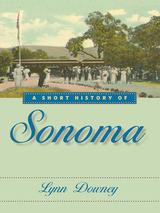 A Short History of Sonoma
Lynn Downey
University of Nevada Press, 2013 Sonoma is one of Northern California’s most desirable places to live and a popular tourist destination, combining small-town charm, a colorful past, and its current role as the hub of one of the world’s premier wine-producing regions. A Short History of Sonoma traces its past from the Native American peoples who first inhabited the valley, proceeding through the establishment of a mission by Spanish priests, the Bear Flag Revolt that began California’s movement to become part of the United States, the foundation of what would become a celebrated wine industry, and its role today as the center of a sophisticated and highly envied food and wine culture.
The book also addresses such topics as the development of local ranching and businesses and of transportation links to San Francisco that helped to make Sonoma and the surrounding Valley of the Moon a popular location for summer homes and resorts. It discusses the role of the nearby hot springs in attracting visitors and permanent residents, including people seeking cures for various ailments. There are also accounts of some of the famous people who lived in or near Sonoma and helped establish its mystique, including Mexican general Mariano Vallejo, the town’s first leader; Hungarian winemaker Agoston Haraszthy, who first saw the region’s potential for producing superior wines; and writers Jack London and M. F. K. Fisher, who made their homes in the Valley of the Moon, drawn by its beauty and bucolic lifestyle.
A Short History of Sonoma is generously illustrated with vintage photographs. It is a delightful account of one of America’s most charming towns and its evolution from rowdy frontier settlement to the paragon of sophisticated living that it is today.
A Short History of the Future
W. Warren Wagar
University of Chicago Press, 1992 A dazzling and imaginative combination of fiction and scholarship, this speculative history of the future is a memoir of postmodern times. This second edition shows how the events of 1989 and their aftermath reinforce Wagar's predictions of the future. "A breathtaking future history in the manner of Wells and Stapledon, unnerving in its mixture of facts, fiction, and personal perspectives."—George Zebrowski, New York Review of Science Fiction
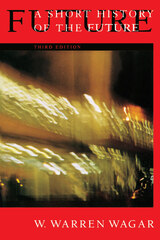 A Short History of the Future
W. Warren Wagar
University of Chicago Press, 1999 W. Warren Wagar's A Short History of the Future is a memoir of postmodern times, cast as a history. This powerful and visionary book is narrated by a far-future historian, Peter Jensen, who leaves this account of the world from the 1990s to the opening of the twenty-third century as a gift to his granddaughter. A combination of fiction and scholarship, this third edition of Wagar's speculative history of the future alternates between descriptions of world events and intimate glimpses of his fictive historian's family into the first centuries of the new millennium.
"Thanks to Wagar's magisterial command of futurist information and theory, his extrapolated near-term future is an incisive, dynamic vision of where we may indeed be heading."—H. Bruce Franklin, Washington Post
"A comprehensive, massively detailed script of a possible near future. . . . Intriguing."—San Francisco Chronicle
"A Short History of the Future reads with ease, raises provocative possibilities and presents challenging occasions for thought and argument."—Chicago Tribune
"A breathtaking future history in the manner of Wells and Stapledon, unnerving in its mixture of fact, fiction, and personal perspectives."—George Zebrowski, New York Review of Science Fiction
 A Short History of the Future
W. Warren Wagar
University of Chicago Press, 1989 In the tradition of H. G. Wells's The Shape of Things to Come, W. Warren Wagar's A Short History of the Future is a memoir of postmodern times. Cast in the form of a history book, the narrative voice of the book's powerful vision is that of a far-future historian, Peter Jensen, who leaves this account of the world from the 1990s to the opening of the twenty-third century as a gift to his granddaughter. A dazzling and imaginative combination of fiction and scholarship, Wagar's speculative history of the future alternates between descriptions of world events and intimate glimpses of his fictive historian's family through the ages.
Jensen's tale traces the flow of the future from the early twenty-first-century reign of a megacorporate global economy, to its sudden collapse in 2044, when nuclear catastrophe envelops the world. In the traumatic aftermath, a socialist world commonwealth comes into being in the year 2062, followed by a lengthy transition to a decentralized order of technologically mature autonomous societies, many located in outer space. The riveting literary interludes that follow each chapter take the form of letters and documents from the history of Jensen's family, evoking the everyday lives of people in the midst of these global-historical events. Here we meet a woman in Brazil whose son is dying from a new immuno-deficiency disease, two brothers comparing life on earth with life in a space colony, and many more.
Neither fiction nor nonfiction, Wagar's brilliantly creative work is not meant to forecast the future, but rather to draw attention to possibilities and alternatives for humankind and planet Earth. In doing so, it also serves as an unforgettable reminder that the future is being made now.
 A Short History of the Silk Road
Jonathan Clements
Haus Publishing, 2017 The Silk Road is not a place, but a journey, a route from the edges of the Mediterranean to the central plains of China, through high mountains and inhospitable deserts. For thousands of years its history has been a traveller's history, of brief encounters in desert towns, snowbound passes and nameless forts. It was the conduit that first brought Buddhism, Christianity and Islam into China, and the site of much of the "Great Game" between 19th-century empires. Today, its central section encompasses several former Soviet republics, and the Chinese Autonomous Region of Xinjiang. The ancient trade route controversially crosses the sites of several forgotten kingdoms, buried in sand and only now revealing their secrets. An Armchair Traveller's History of the Silk Road not only offers the reader a chronological outline of the region's development, but also provides an invaluable introduction to its languages, literature and arts. It takes a comprehensive and illuminating look at the rich history of this dynamic and littleknown region, and provides an easy-to-use reference source. Clements pays particular attention to the fascinating historical sites which feature on any visitor's itinerary and special emphasis is also given to the writings and reactions of travellers through the centuries.
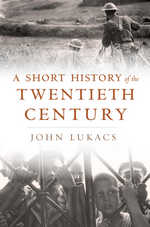 A Short History of the Twentieth Century
John Lukacs
Harvard University Press, 2013 The historian John Lukacs offers a concise history of the twentieth century—its two world wars and cold war, its nations and leaders. The great themes woven through this spirited narrative are inseparable from the author’s own intellectual preoccupations: the fading of liberalism, the rise of populism and nationalism, the achievements and dangers of technology, and the continuing democratization of the globe.
The historical twentieth century began with the First World War in 1914 and ended seventy-five years later with the collapse of the Soviet Empire in 1989. The short century saw the end of European dominance and the rise of American power and influence throughout the world. The twentieth century was an American century—perhaps the American century. Lukacs explores in detail the phenomenon of national socialism (national socialist parties, he reminds us, have outlived the century), Hitler’s sole responsibility for the Second World War, and the crucial roles played by his determined opponents Churchill and Roosevelt. Between 1939 and 1942 Germany came closer to winning than many people suppose.
Lukacs casts a hard eye at the consequences of the Second World War—the often misunderstood Soviet-American cold war—and at the shifting social and political developments in the Far and Middle East and elsewhere. In an eloquent closing meditation on the passing of the twentieth century, he reflects on the advance of democracy throughout the world and the limitations of human knowledge.
A Short History of Thomism
Romanus Cessario, O.P.
Catholic University of America Press, 2005 Using carefully selected resources, Romanus Cessario has composed a short account of the history of the Thomist tradition as it manifests itself through the more than seven hundred years that have elapsed since the death of Saint Thomas
 A Short History of Tokyo
Jonathan Clements
Haus Publishing, 2020 Tokyo, which in Japanese means the “Eastern Capital,” has only enjoyed that name and status for 150 years. Until the middle of the nineteenth century, the city that is now Tokyo was a sprawling fishing town by the bay named Edo. Earlier still, in the Middle Ages, it was Edojuku, an outpost overlooking farmlands. And thousands of years ago, its mudflats and marshes were home to elephants, deer, and marine life.
In this compact history, Jonathan Clements traces Tokyo’s fascinating story from the first forest clearances and the samurai wars to the hedonistic “floating world” of the last years of the Shogunate. He illuminates the Tokyo of the twentieth century with its destruction and redevelopment, boom and bust without forgoing the thousand years of history that have led to the Eastern Capital as we know it. Tokyo is so entwined with the history of Japan that it can be hard to separate them, and A Short History of Tokyo tells both the story of the city itself and offers insight into Tokyo’s position at the nexus of power and people that has made the city crucial to the events of the whole country.
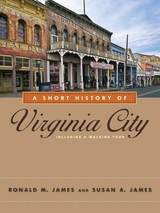 A Short History of Virginia City
Ronald M. James
University of Nevada Press, 2014 Founded in 1859, Virginia City quickly became world famous for its extraordinary prosperity. Over the next two decades, the mines of “the Richest City on Earth” yielded millions in gold and silver. The newly wealthy built mansions and churches, opera houses and schools, with furniture, fashions, and entertainment imported from Europe and the Far East. Here young Samuel Clemens, reporting for the Territorial Enterprise in 1863, first called himself Mark Twain. At its height Virginia City was a magnet for immigrants and the world leader in technological innovations in mining.
The city’s story did not end when the Comstock Lode played out. Beginning in the 1930s, bohemian artists, literati, and tourists were intrigued by this remnant of the Old West. The leader of Manhattan’s café society, Lucius Beebe, moved here and relaunched the Territorial Enterprise in 1950. Television’s most popular western from 1959 to 1973, Bonanza, located its fictional Ponderosa Ranch nearby. In the summer of 1965, a handful of Bay Area musicians, including Big Brother and the Holding Company, performed at the Red Dog Saloon and launched psychedelic rock, part of the inspiration for a defining decade of youth culture. Today it is both a National Historic Landmark District and a living community. Visitors come to enjoy its saloons and restaurants, admire its architecture, and learn from its museums and exhibits. A Short History of Virginia City will enhance their experience and will also be enjoyed by anyone interested in the history of Nevada, mining, and the Old West.
• Includes an illustrated walking tour describing more than thirty buildings and sites
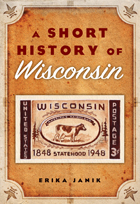 A Short History of Wisconsin
Erika Janik
Wisconsin Historical Society Press, 2010 Rediscover Wisconsin history from the very beginning. A Short History of Wisconsin recounts the landscapes, people, and traditions that have made the state the multifaceted place it is today. With an approach both comprehensive and accessible, historian Erika Janik covers several centuries of Wisconsin's remarkable past, showing how the state was shaped by the same world wars, waves of new inhabitants, and upheavals in society and politics that shaped the nation. Swift, authoritative, and compulsively readable, A Short History of Wisconsin commences with the glaciers that hewed the region's breathtaking terrain, the Native American cultures who first called it home, and French explorers and traders who mapped what was once called "Mescousing." Janik moves through the Civil War and two world wars, covers advances in the rights of women, workers, African Americans, and Indians, and recent shifts involving the environmental movement and the conservative revolution of the late 20th century. Wisconsin has hosted industries from fur-trapping to mining to dairying, and its political landscape sprouted figures both renowned and reviled, from Fighting Bob La Follette to Joseph McCarthy. Janik finds the story of a state not only in the broad strokes of immigration and politics, but also in the daily lives shaped by work, leisure, sports, and culture. A Short History of Wisconsin offers a fresh understanding of how Wisconsin came into being and how Wisconsinites past and present share a deep connection to the land itself.
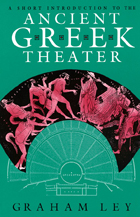 A Short Introduction to the Ancient Greek Theater
Graham Ley
University of Chicago Press, 1991 Contemporary productions on stage and film, and the development of theater studies, have created a new audience for ancient Greek drama. This volume fills the need for a clear, concise statement of what is known about the original conditions of production for tragedy, comedy, and satyr play in the age of Pericles and provides observations on all aspects of performance.
Reexamining the surviving plays of the tragic writers Aeschylus, Sophocles, and Euripides and of the comedian Aristophanes, Graham Ley discusses the actor's technique, the power and range of the chorus, the use of theatrical space, and parody in the plays. A series of diagrams relates the theater to the city and political life of ancient Athens, and photographic illustrations of scenes from Greek vases document the visualization of theatrical performance.
An ideal companion to The Complete Greek Tragedies (University of Chicago Press), Ley's work is a valuable user's guide to the critical assessment of modern translations and adaptations of tragedy and comedy. It is designed for all students of Greek drama with an interest in performance, and for theatrical practitioners who require a concise but informative introduction to one of the great periods of world drama.
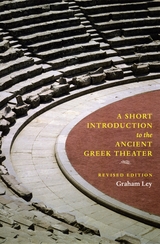 A Short Introduction to the Ancient Greek Theater: Revised Edition
Graham Ley
University of Chicago Press, 2007 Contemporary productions on stage and film, and the development of theater studies, continue to draw new audiences to ancient Greek drama. With observations on all aspects of performance, this volume fills their need for a clear, concise account of what is known about the original conditions of such productions in the age of Pericles.
Reexamining the surviving plays of Aeschylus, Sophocles, Euripides, and Aristophanes, Graham Ley here discusses acting technique, scenery, the power and range of the chorus, the use of theatrical space, and parody in their plays. In addition to photos of scenes from Greek vases that document theatrical performance, this new edition includes notes on ancient mime and puppetry and how to read Greek playtexts as scripts, as well as an updated bibliography. An ideal companion to The Complete Greek Tragedies, also published by the University of Chicago Press, Ley’s work is a concise and informative introduction to one of the great periods of world drama.
"Anyone faced with Athenian tragedy or comedy for the first time, in or out of the classroom, would do well to start with A Short Introduction to Ancient Greek Theater."—Didaskalia
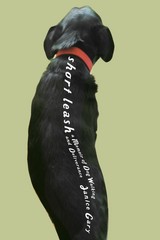 Short Leash: A Memoir of Dog Walking and Deliverance
Janice Gary
Michigan State University Press, 2013 Janice Gary never walked alone without a dog - a big dog. Once, she was an adventurer, a girl who ran off to California with big dreams and hopes of leaving her past behind. But after a brutal rape, her youthful bravado vanished, replaced by a crippling need for safety. When she rescues a gangly Lab-Rottweiler pup,Gary is sure she’s found her biggest protector yet. But after Barney is attacked by a vicious dog, he becomes a clone of his attacker, trying to kill any dog that comes near him. Walking with Barney is impossible. Yet walking without him is unthinkable.
After years of being exiled by her terror and Barney’s defensiveness, Janice risks taking her dog to a park near the Chesapeake Bay. There, she begins the messy, lurching process of walking into her greatest fears. As the leash of the past unravels, Barney sheds the defensive behaviors that once shackled him and Gary steps out of the self-imposed isolation that held her captive for three decades. Beautifully written, Short Leash is much more than a “dog story” or a book about recovering from trauma. It is a moving tale of love and loss, the journey of a broken soul finding itsway toward wholeness.
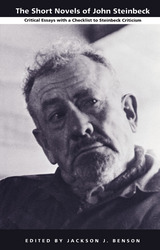 The Short Novels of John Steinbeck: Critical Essays with a Checklist to Steinbeck Criticism
Jackson J. Benson, ed.
Duke University Press, 1990 The Grapes of Wrath is generally considered Steinbeck’s masterpiece, but the short novel was the form he most frequently turned to and most consciously theorized about, and with constant experimentation he made the form his own. Much of the best—and the worst—of his writing appears in his short novels. This collection reviews what has been categorized as the “good” and the “bad,” looking beyond the careless labeling that has characterized a great deal of the commentary on Steinbeck’s writing to the true strengths and weaknesses of the works. The contributors demonstrate that even in the short novels that are most often criticized, there is more depth and sophistication than has generally been acknowledged. The essays examine the six most popular short novels— Tortilla Flat, The Red Pony, Of Mice and Men, The Moon Is Down, Cannery Row, and The Pearl—in addition to the three usually thought of as less successful— Burning Bright, Sweet Thursday, and The Short Reign of Pippin IV. Because most of Steinbeck’s short novels were adapted and presented as plays or screenplays, many of the essays deal with dramatic or film versions of the short novels as well as with the fiction. The collection concludes with a comprehensive checklist of criticism of the short novels. Contributors. Richard Astro, Jackson J. Benson, Carroll Britch, John Ditsky, Joseph Fontenrose, Warren French, Robert Gentry, Mimi Reisel Gladstein, William Goldhurst, Tetsumaro Hayashi, Robert S. Hughes Jr., Howard Levant, Clifford Lewis, Peter Lisca, Anne Loftis, Charles R. Metzger, Michael J. Meyer, Robert E. Morsberger, Louis Owens, Roy S. Simmonds, Mark Spilka, John Timmerman
A Short Reference Grammar of Iraqi Arabic
Wallace M. Erwin. Foreword by Margaret Nydell and Karin C. Ryding
Georgetown University Press, 2004 A Short Reference Grammar of Iraqi Arabic is the only volume of its kind, reflecting Iraqi Arabic as spoken by Muslims in Baghdad. With all the Arabic transcribed, it is written for beginners as well as Arabic speakers wanting to learn the dialect. It covers the phonology, morphology (word formation of nouns, verbs, pronouns, adjectives, and numerals, achieved by adding prefixes and suffixes to roots), and syntax, teaching the reader how to make the sounds, form words, and construct sentences.
A Short Reference Grammar of Moroccan Arabic
Richard S. Harrell
Georgetown University Press Conceived to be a practical reference grammar for those who may have basic skills in Moroccan Arabic, this classic volume teaches the phonology, morphology, and syntax of the dialect. Originally published in 1962, A Short Reference Grammar of Moroccan Arabic features the spoken language of the urban speakers of the northwestern part of Morocco, especially Fez, Rabat, and Casablanca. The Arabic has been transcribed for the English-speaking student. The accompanying audio files, keyed to the text, demonstrate the pronunciation of the Arabic transcribed in the book. These mp3 files are available for free online at www.press.georgetown.edu.
Short Stories: Five Decades
Irwin Shaw
University of Chicago Press, 2000 Featuring sixty-three stories spanning five decades, this superb collection-including "Girls in Their Summer Dresses," "Sailor Off the Bremen," and "The Eighty-Yard Run"-clearly illustrates why Shaw is considered one of America's finest short-story writers.
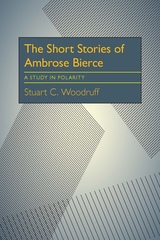 The Short Stories of Ambrose Bierce
Stuart C. Woodruff
University of Pittsburgh Press, 1964
One of the most interesting figures to emerge at the turn of the twentieth century was Ambrose Bierce, whose acerbic columns in the San Francisco Examiner spread his fame as America’s most bitter cynic and misanthrope, and whose disappearance into Mexico surrounded his name with an aura of mystery.
Although best known during his lifetime for his journalism and always critical of his own writing—“the magnificent intention mocked by the actual achievement”—Bierce’s fiction endures, especially his short stories about the Civil War. Originally published in the 1890s and rediscovered in the 1920s, the Civil War stories are filled with unsparing descriptions of death and suffering, disillusionment and fatalism. They also show a concern for form and craftsmanship, a controlled irony, and an economy of detail that are distinctly modern.
In this pioneering study of Bierce’s stories, Stuart Woodruff examines the best and worst of Bierce’s fiction with clarity and excellent critical sense, and he traces the causes of Bierce’s success and failure as a writer, analyzing his inability to reconcile the extremes of temperament and belief that marked his life and give his stories their characteristic form.
Among the pieces discussed: “An Occurrence at Owl Creek Bridge,” “The Mocking-bird,” “One of the Missing,” “Chickamauga,” “Haïta the Shepherd,” “What I Saw at Shiloh,” and excerpts from The Devil’s Dictionary and Tales of Soldiers and Civilians.
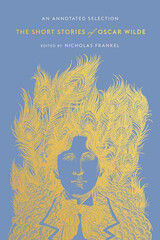 The Short Stories of Oscar Wilde: An Annotated Selection
Oscar Wilde
Harvard University Press, 2020 An innovative new edition of nine classic short stories from one of the greatest writers of the Victorian era.
“I cannot think other than in stories,” Oscar Wilde once confessed to his friend André Gide. In this new selection of his short fiction, Wilde’s gifts as a storyteller are on full display, accompanied by informative facing-page annotations from Wilde biographer and scholar Nicholas Frankel. A wide-ranging introduction brings readers into the world from which the author drew inspiration.
Each story in the collection brims with Wilde’s trademark wit, style, and sharp social criticism. Many are reputed to have been written for children, although Wilde insisted this was not true and that his stories would appeal to all “those who have kept the childlike faculties of wonder and joy.” “Lord Arthur Savile’s Crime” stands alongside Wilde’s comic masterpiece The Importance of Being Earnest, while other stories—including “The Happy Prince,” the tale of a young ruler who had never known sorrow, and “The Nightingale and the Rose,” the story of a nightingale who sacrifices herself for true love—embrace the theme of tragic, forbidden love and are driven by an undercurrent of seriousness, even despair, at the repressive social and sexual values of Wilde’s day. Like his later writings, Wilde’s stories are a sweeping indictment of the society that would imprison him for his homosexuality in 1895, five years before his death at the age of forty-six.
Published here in the form in which Victorian readers first encountered them, Wilde’s short stories contain much that appeals to modern readers of vastly different ages and temperaments. They are the perfect distillation of one of the Victorian era’s most remarkable writers.
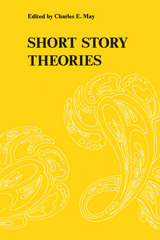 Short Story Theories
Charles E. May
Ohio University Press, 1977 Although the short story has often been called America’s unique contribution to the world’s literature, relatively few critics have taken the form seriously. May’s collection of essays by popular commentators, academic critics, and short story writers attempts to assess the reasons for this neglect and provides significant theoretical directions for a reevaluation of the form.
The essays range from discussions by Poe to comments by John Cheever. Frank O’Connor describes the short story as depicting “an intense awareness of human loneliness,” and Nadine Gordimer suggests that the story is more suitable than the novel in rendering the fragmentary modern experience. Eudora Welty sees the story as something “wrapped in an atmosphere” of its own; Randall Jarrell speaks of the mythic basis of the genre. Elizabeth Bowen and Alberto Moravia discuss thematic and structural distinctions between the novel and the story.
The collection also includes discussions of various types of stories, as satiric and lyric, critical surveys of the development of the modern short story, and the status of the form at the present time. An excellent annotated bibliography is also included, which describes 135 books and articles on the short story, evaluating their contribution to a unified theory of the form.
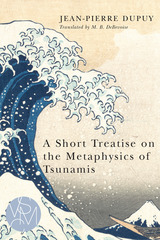 A Short Treatise on the Metaphysics of Tsunamis
Jean-Pierre Dupuy
Michigan State University Press, 2015 In 1755 the city of Lisbon was destroyed by a terrible earthquake. Almost 250 years later, an earthquake beneath the Indian Ocean unleashed a tsunami whose devastating effects were felt over a vast area. In each case, a natural catastrophe came to be interpreted as a consequence of human evil. Between these two events, two indisputably moral catastrophes occurred: Auschwitz and the bombing of Hiroshima and Nagasaki. And yet the nuclear holocaust survivors likened the horror they had suffered to a natural disaster—a tsunami.
Jean-Pierre Dupuy asks whether, from Lisbon to Sumatra, mankind has really learned nothing about evil. When moral crimes are unbearably great, he argues, our ability to judge evil is gravely impaired, and the temptation to regard human atrocity as an attack on the natural order of the world becomes irresistible. This impulse also suggests a kind of metaphysical ruse that makes it possible to convert evil into fate, only a fate that human beings may choose to avoid. Postponing an apocalyptic future will depend on embracing this paradox and regarding the future itself in a radically new way.
The American edition of Dupuy’s classic essay, first published in 2005, also includes a postscript on the 2011 nuclear accident that occurred in Japan, again as the result of a tsunami.
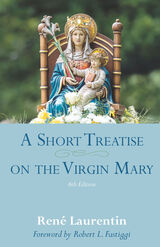 A Short Treatise on the Virgin Mary
Rene Laurentin
Catholic University of America Press, 2022 As a peritus at Vatican II and by the end of his life arguably the world’s leading Mariologist, René Laurentin has earned the privilege of republication of a work of considerable value for any theologian who aims for comprehensiveness of Catholic theological perspective, historically and systematically. Laurentin’s orthodox, yet highly original treatment displays his command of all of the relevant biblical, patristic, medieval and modern texts up to and including the entire proceedings of the Second Vatican Council, as well as the whole range of related historical and theological scholarship. His proposal to pursue Mariological speculation along two tracks – first, “from above,” following the course of doctrinal development from biblical revelation to the VCII era, and second, “from below,” considering Mary’s own life (walking in her footsteps, as it were), from before the Annunciation to the Parousia – provides a clear, accessible structure for the work, yielding rich theological and spiritual fruit. Not only are all the major Marian doctrines and their developments handled with the greatest sensitivity, from the Virgin birth to the modern promulgations of Immaculate Conception and Assumption, but Laurentin’s approach in his second part opens the way to a human-psychological treatment of motherhood, still solidly bolstered by traditional Christian anthropology. Regarding Mary’s status as Mother of God, Laurentin’s discussion of the Theotokos exhibits his deep ecumenical commitments, as much as his specific attention to Mary’s soteriological role as a sticking point for Protestantism. One of the most striking qualities of the work is Laurentin’s deft integration of his evident scholastic formation into an overarching vision thoroughly at ease with the phenomenological (“personalist”) and existential currents in which he also inevitably swam throughout his education and professional scholarly occupation. As a result, the work can be read and appreciated instinctively, as it were, as much by the eclectic contemporary theologian, influenced by the likes of Heidegger, et al, as by the Thomist.
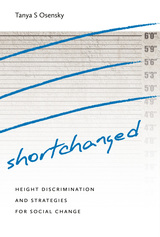 Shortchanged: Height Discrimination and Strategies for Social Change
Tanya S Osensky
University Press of New England, 2017 Would you like to be taller? Many people—except very tall people—would likely answer yes. Why should this be the case, when height has nothing to do with intelligence, talent, fortitude, compassion, or indeed any of the factors that make us human? In her thoughtful and provocative book, Tanya S Osensky examines “heightism”: the widely held and mostly unconscious notion that taller is better. She explores how and why short people are considered by many to be inferior, and describes the ways in which height bias affects them. Prejudice against short people is so common and casual that we do not even notice it, yet it factors significantly into discrimination in the workplace, in social situations, and beyond. The most helpless victims are short children, who are frequently subjected to years of hormone therapy, even when they have no physical need for such treatment, simply in an effort to make them taller as a way of countering this social bias. There is little legal recourse for short people who suffer workplace discrimination based on height. This succinct book exposes the cultural, medical, and occupational issues that short people face, which are often deemed unimportant and disregarded. Osensky challenges heightism by disclosing some beneficial aspects of shortness and suggesting avenues of activism and change.
Short-Changed?: South Africa since Apartheid
Colin Bundy
Ohio University Press, 2015 What have been the most significant developments—political, social, economic—in South Africa since 1994? How much has changed since the demise of apartheid, and how much remains stubbornly the same? Should one celebrate a robust democracy now two decades old, or lament the corrosive effects of factionalism, greed, and corruption on political life? Colin Bundy tries to answer such questions, while avoiding simplistic or one-sided assessments of life under Mandela, Mbeki, and Zuma. He recognizes real advances under ANC rule but also identifies the limits and contradictions of such progress. Bundy demonstrates, too, how the country’s past permeates the present, complicating and constraining the politics of transition, so that genuine transformation has been short-changed.
Short-circuit Currents
J. Schlabbach
The Institution of Engineering and Technology, 2005 The calculation of short-circuit currents is a central task for Power System engineers, as they are essential parameters for the design of electrical equipment and installations, the operation of power systems and the analysis of outages and faults.
 Shortcut or Piecemeal: Economic Development Strategies and Structural Change
Jan Winiecki
Central European University Press, 2016 Alternative strategies of economic development have received little attention in the literature. Academics rarely compare certain strategic features or assess the performance of different strategies in terms of outcomes. This book seeks to address that gap and to provide a theoretical background to the shift from industry to human capital-intensive services as the engine of economic growth. Pioneering studies reveal interesting trends and patterns that point to the growing importance of intangible capital for the level of GDP. They also indicate a much greater role of economic freedom in bringing about this second great structural change than was the case with industrialization. With this perspective on structural change and the role of freedom, Shortcut or Piecemeal also provides an extensive assessment of four key developing countries: Brazil, Russia, India, and China. Subjects: 1. Central planning—History. 2. Economic development—History
Shorter Lexicon of the Greek New Testament
Edited by F. Wilbur Gingrich and Frederick William Danker
University of Chicago Press, 1983 This one-volume digest provides easy access to reliable and brief definitions, interpretations of most variants, and many of the conjugational and declensional forms that frustrate readers of the New Testament. Danker's revision demonstrates his concern for the needs of students as well as those of ministers and scholars.
"[The Shorter Lexicon] is by far superior to other New Testament 'dictionaries' of comparable size."—Robert Hoerber, Classical World
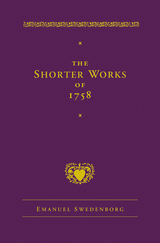 The Shorter Works of 1758: New Jerusalem Last Judgment White Horse Other Planets
Emanuel Swedenborg
Swedenborg Foundation Publishers, 2018 This volume contains four shorter works by the influential eighteenth-century mystic Emanuel Swedenborg. Translators George F. Dole and Jonathan S. Rose have produced an accessible rendering of these important yet easily overlooked works.
New Jerusalem: In this work Swedenborg outlines his theology in twenty-three brief chapters on major Christian topics such as love, faith, regeneration, the inner self and outer self, and the nature of the Bible. Nearly every chapter ends with what is in effect an index to that topic as it appears in his much larger study Secrets of Heaven.
Last Judgment: This work on the “end times” asserts that the Last Judgment foretold in the Bible does not involve the end of the physical world. Rather, the Last Judgment was an event of tremendous upheaval in the spiritual world, a nonmaterial apocalypse which has already occurred and which Swedenborg himself witnessed.
White Horse: This brief work is divided into two parts. The first presents the inner meaning of the white horse mentioned in chapter 19 of the book of Revelation. The second is effectively an index to passages concerning the Bible and its inner meaning in Swedenborg’s much larger work Secrets of Heaven. This work is a good short introduction to Swedenborg’s principle of correspondences between the spiritual and physical worlds, as well as to his unique view of the nature of the Bible.
Other Planets: Building on the eighteenth-century fascination with the possibility of life on other worlds and with traveler’s tales of other cultures, this work describes life on other planets in our solar system and elsewhere in the universe. Swedenborg undertook this work specifically to demonstrate that Jesus is God not just of planet Earth but also of the universe as a whole.
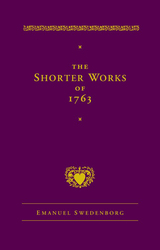 The Shorter Works of 1763: The Lord Sacred Scripture Life Faith Supplements
Emanuel Swedenborg
Swedenborg Foundation Publishers, 2020 The four main short works in this volume by Swedish theologian Emanuel Swedenborg (1688–1772) form the basic foundation of his thought. Although originally printed as if they were stand-alone volumes, they have nearly always been published together, generally under the collective title “The Four Doctrines.”
The Lord discusses the nature of the man known as Jesus Christ, his divine nature, and the meaning of his crucifixion. For Swedenborg, Jesus was not simply a man, but the eternal divine that came to earth for the salvation of humanity.
Sacred Scripture is about the Word, by which Swedenborg means the parts of the Bible that he feels reflect a deep spiritual teaching. Swedenborg believes that study of the Word—which contains a wisdom that predates the written Bible and also transcends it—is the key to humanity’s spiritual development and its eventual union with the Lord.
Life discusses the nature of good and evil and the necessity of shunning sin and evil in order to experience true faith and become a spiritual person. In other words, this work is about how we ought to live.
Faith talks about faith as an acknowledgment of inner truth and the necessity of expressing such faith through good actions rather than simply holding beliefs. Swedenborg also delves into the true nature of charity and the way that it interweaves with faith to produce true goodness.
In addition to these short works, the volume includes a fifth work, which consists of two supplements to previous works by Swedenborg: a brief addition to Last Judgment and a longer addition to Heaven and Hell.
Short-Range Micro-Motion Sensing with Radar Technology
Changzhan Gu
The Institution of Engineering and Technology, 2019 Human hands are natural tools for performing actions and gestures that interact with the physical world. Radar technology allows for touchless wireless gesture sensing by transmitting radio frequency (RF) signals to the target, analyzing the backscattering reflections to extract the target's movements, and thereby accurately detecting gestures for Human Computer Interaction (HCI). A key advantage of this technology is that it allows interaction with machines without any need to attach a sensing device to the hands. Led by researchers from Google's Project Soli, the authors introduce the concept and underpinning technology, cover all design phases, and provide researchers and professionals with the latest advances and innovations in microwave and millimeter wave radar sensing to capture relative movements such as micro gestures.
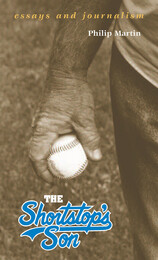 The Shortstop’s Son: Essays and Journalism
Philip Martin
University of Arkansas Press, 1997 Through these varied essays on politics, ethics, music, race, and culture Philip Martin admits “a minor obsession” with what he calls “the American Frolic”—the essential lack of seriousness with which many of us approach the questions inherent in living in a free society. He observes that Americans have been conditioned to react, not to consider; that while we are very good at ripostes and snappy comebacks, at cracking wise and looking smart, we often fail to authentically engage the issues with which we pretend to be most concerned. We inadvertently talk past one another, he says, resorting to cant and partisan boilerplate. In the essays presented in The Shortstop’s Son, Philip Martin rigorously resists easy labels and rote ideological truths. He pursues more subtle meanings with a commonsense lucidity and a fundamental compassion for humanity. Whether writing about the mythos built upon Bonnie and Clyde’s bullet-ridden Ford or the ignoble death and burial of blues legend Blind Lemon Jefferson, Martin strikes the chord that both moves and informs. Martin is our critic at large. Deeply engaged in the world of thought and experience, he applies his nimble mind and very human heart to those things which should concern us most. He allows us, through his “obsession” and the clarity of his prose, to experience a new vision, one based in our desire for rich life.
The Short-Tailed Fruit Bat: A Study in Plant-Animal Interactions
Theodore H. Fleming
University of Chicago Press, 1988 As dusk settles over the Costa Rican forest, the short-tailed fruit bat, Carollia perspicillata, stirs from its cave roost. Flying out to search for ripe fruit, Carollia returns to a night roost in the forest vegetation to eat. After a few such flights Carollia rests, and the fruits pass through its short digestive tract. The seeds are excreted onto the ground, to be eaten in turn by mice and insects, but a few are pushed into crevices where they await the necessary conditions for germination.
In The Short-tailed Fruit Bat, Theodore Fleming examines Carollia's role in the ecology of tropical forests. Based on more than ten years' research, this study provides the most detailed ecological and evolutionary account to date of the life history of a Neotropical mammal and includes striking photographs of the bats in flight.
 Short-Term Psychotherapy and Emotional Crisis
Peter Sifneos
Harvard University Press, 1972 Peter Sifneos describes a type of active and brief psychotherapeutic intervention which he believes is tremendously useful for selected patients with circumscribed emotional difficulties. The therapist assists the patient in defining the conflict underlying his dilemma and helps him learn to solve his emotional problems. As a result of this novel educational experience, the patient is able to use these newly acquired techniques to deal with other hazardous situations after the end of treatment. Indeed, the author maintains, the treatment is similar to an immunization procedure that enables certain individuals to prevent the development of emotional difficulties in the future. Dr. Sifneos describes two forms of this short-term therapy, “crisis-intervention” and anxiety-provoking—with emphasis on the latter—and presents in detail the theoretical background, criteria for selection of appropriate patients, technique, and illustrative case material.
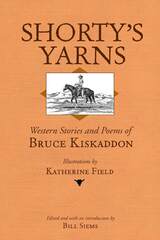 Shorty's Yarns: Western Stories and Poems of Bruce Kiskaddon
edited by Bill Siems, illustrations by Katherine Field
Utah State University Press, 2004 In the world of cowboy poetry, no poet is better known or more widely appreciated than Bruce Kiskaddon. Though he died in 1950 his poems have been at the forefront of the cowboy poetry revival that began in the 1980s and have been reprinted frequently in published collections and anthologies. What is less known is that Kiskaddon during his lifetime also published stories. These humorous, realistic prose sketches of cowboy life were almost lost, but they are in their own right gems of literary Americana on a par with the poems. Originally published in the Western Livestock Journal between 1932 and 1939, the short stories drew on Kiskaddon's own experience of ranching in the Southwest and Australia to portray real life on the range. Bill Siems has recovered these stories and compiled and introduced them in this new collection, to which he has added a selection of Kiskaddon's poems and the original drawings that accompanied them, by Katherine Field, a fine, underappreciated western artist. Set in Colorado, New Mexico, and Arizona, the stories are a loosely tied string of old timer's yarns with a continuing cast of engaging characters, whom Kiskaddon avoids reducing to cowboy stereotypes. They include, as Siems describes them, "Kiskaddon himself as the character Shorty. As a common waddy with a small man's feistiness and a young man's mischief, Shorty encounters the wicked world with a succession of companions: Bill, high-headed and a bit of an outlaw; Rildy Briggs, untamable and unstoppable young cowgirl; and Ike, an old-fashioned dandy and 'a very fortunate person.' More or less in the background is the Boss-actually a series of Bosses-generally affectionately respected as long as he remains democratic in his dealings with the waddies. Buffoonery is provided by a succession of pompous characters, from townspeople who look down their noses on wild, unwashed waddies to professors from the East who have read books on how ranches should be run."
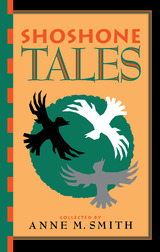 Shoshone Tales
Anne Smith
University of Utah Press, 1993 The Western Shoshone people live throughout eastern Nevada and western Utah (Goshute). When Anne Smith visited the region in 1939 there was only one formally designated reservation. Smith and her companion Alden Hayes traveled countless mile of remote road collecting stories, documenting Western Shoshonean tradition, and seeking to determine the outlines of Great Basin culture.
The tales in this volume are set primarily in the "Time when Animals Were People," the legendary past when animals had the power of speech and established human customs though their adventures (and misadventures). Trickster tales figure prominently, with obscenity and blunt delivery common humorous devices. These tale were prized for their educational as well as entertainment value, and storytelling ability was highly respected. Thus, Smith was careful to credit individual storytellers of their versions of favorite Basin tales, avoiding the dryness of generic anthologies.
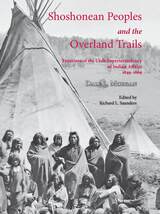 Shoshonean Peoples and the Overland Trail: Frontiers of the Utah Superintendency of Indian Affairs, 1849–1869
Richard Saunders
Utah State University Press, 2007 This compilation of Dale Morgan’s historical work on Indians in the Intermountain West focuses primarily on the Shoshone who lived near the Oregon and California trails. Three connected works by Morgan are included: First is his classic article on the history of the Utah Superintendency of Indian Affairs. This is followed by an important set of government reports and correspondence from the National Archives concerning the Eastern Shoshone and their leader Washakie. Morgan heavily annotated these for serial publication in the Annals of Wyoming. He also wrote a previously unpublished history of early relations among the Western Shoshone, emigrants, and the government along the California Trail. Morgan biographer Richard L. Saunders introduced, edited, and further annotated this collection. His introduction includes an intellectual biography of Morgan that focuses on the place of the anthologized pieces in Morgan’s corpus. Gregory E. Smoak, a leading historian of the Shoshone, contributed an ethnohistorical essay as additional context for Morgan’s work.
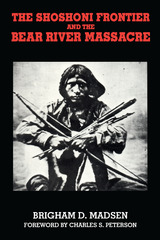 Shoshoni Frontier and Bear River Massacre
Brigham Madsen
University of Utah Press, 1985 In January 1863 over two hundred Shoshoni men, women, and children died on the banks of the Bear River at the hands of volunteer soldiers from California. Bear River was one of the largest Indian massacres in the Trans-Mississippi West, yet the massacre has gone almost unnoticed as it occurred during a time when national attention was focused on the Civil War, and the deaths of the Shoshoni Indians in a remote corner of the West was of only passing interest.
Bear River was the culmination of events from nearly two decades of Indian-white interaction. The Shoshoni homelands encompassed a huge expanse of territory and were traversed by the main paths of western travel, forcing Indian-white encounters. Initially friendly and accommodating to white travelers in the 1840s, by the late 1850s resentment soared among the Indians as they were killed and their food stocks were consumed by emigrants and their livestock. The process of white appropriation of Indian lands reached crisis proportions in the Far West and Great Basin before it did on the Great Plains.
In the historiography of western Indians, few have appreciated the role of tribes inhabiting the regions of along the Oregon and California Trails. Madsen makes a compelling argument that precedents were established that were followed again and again on subsequent western Indian frontiers, offering a new view of early encounters in the Trans-Mississippi West. This detailed narrative of the events and conflicts that culminated in the massacre remains the definitive account of this bloody chapter in United States-Native American relations.
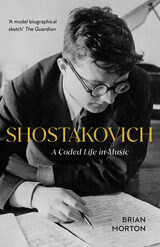 Shostakovich
Brian Morton
Haus Publishing, 2021 A biography of popular twentieth-century Soviet composer Dmitri Shostakovich.
Internationally esteemed, Soviet composer Dmitri Shostakovich is widely considered to have been the last great classical symphonist, and his reputation has continued to increase since his death in 1975.
Shostakovich wrote his First Symphony at the age of nineteen, then he soon embarked on a dual career as a concert pianist and composer. His early avant-gardism resulted in the triumph of his 1934 opera Lady Macbeth of Mtsensk. Though at first highly praised by Stalin, Shostakovich would later suffer from a complex and brutalizing relationship with the Soviet dictator and the governments that followed him. Despite this persecution, his Seventh Symphony was embraced as a potent symbol of Russian resistance to the invading Nazi army in both the USSR and the West. Though his later years were marked by ill health, his rate of composition remained prolific. His music became increasingly beloved as he established himself as the most popular composer of serious music in the middle of the twentieth century.
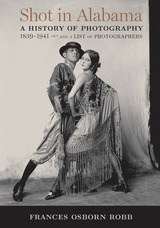 Shot in Alabama: A History of Photography, 1839–1941, and a List of Photographers
Frances Osborn Robb
University of Alabama Press, 2016 Shot in Alabama by Frances Osborn Robb is a visual and textual narrative of Alabama’s photographic history from 1839 to 1941. It describes the phenomenon of photography as practiced in Alabama as a major cultural force, paying close attention to the particular contexts from which each image emerges and the fragments of microhistory that each image documents.
Presented chronologically—from the very first photograph ever taken in the state to the appearance of cameras as commonplace possessions in mid-twentieth-century households—Robb draws into sharp relief the eras of daguerreotypes, Civil War photography, photographic portraiture at the end of the nineteenth century, urban and rural photography in the early twentieth century, WPA photography during the Great Depression, postcards and tourist photography, and pre–World War II illustrated books and art photographs. Robb also examines a wide spectrum of vernacular photography: Alabama-made photographs of everyday people and places, the photographs that fill dresser drawers and shoeboxes, a vast array of unusual images against which Alabama’s more typical iconography can be measured.
She also chronicles the work of hundreds of photographers—black and white, amateur and professional, women and men—some little-known outside their communities, some of them the medium’s most important practitioners. “Who Shot Alabama?” is an accompanying appendix that includes 1,400 photographers by name, working dates, and location—a resource that will help countless individuals, families, and archives identify the specific Alabama photographers whose names appear on family photographs or those in institutional collections.
Shot in Alabama is an insightful document of photography as both a communicator and creator of social, cultural, economic, and visual history. It highlights the very personal worlds rendered by individual photographs as well as the larger panorama of Alabama history as seen through the photographs collectively. A landmark work of research, curation, and scholarship, it fills the void of published history on Alabama photography and is an invaluable resource for historians, archivists, librarians, collectors, hobbyists, and readers with an interest in Alabama history or historic photography. Shot in Alabama is a book that all Alabamians will want on their coffee tables.
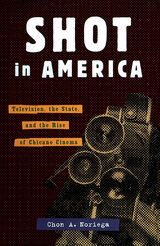 Shot In America: Television, the State, and the Rise of Chicano Cinema
Chon A. Noriega
University of Minnesota Press, 2000 Redefines media history through Chicano film and television. One of the most influential figures in ethnic media studies takes direct aim at how Chicano filmmaking has been represented in the history of media in the United States. Shot in America tackles seemingly intractable dilemmas involving the political and market functions of film and TV to provide a definitive response to the debates over cultural and racial identity that have embroiled media and cultural studies over the past two decades. Noriega offers a compelling and detailed description of an enormous body of work by Chicano media makers against the backdrop of Chicano social movements, politics, and activism over a forty-year period—an extraordinary exposition of the civil rights movement, media reform activities, and public affairs programming that constitutes the prehistory of independent and minority cinemas.Noriega reveals the ways in which Chicano and other minority protests both emerged within and were regulated by the very institutions that excluded them. Shot in America is a study with broad implications for our understanding of cultural politics and the entertainment industries.
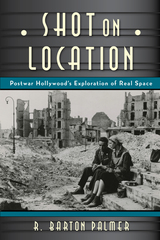 Shot on Location: Postwar American Cinema and the Exploration of Real Place
Palmer, R. Barton
Rutgers University Press, 2016 In the early days of filmmaking, before many of Hollywood’s elaborate sets and soundstages had been built, it was common for movies to be shot on location. Decades later, Hollywood filmmakers rediscovered the practice of using real locations and documentary footage in their narrative features. Why did this happen? What caused this sudden change?
Renowned film scholar R. Barton Palmer answers this question in Shot on Location by exploring the historical, ideological, economic, and technological developments that led Hollywood to head back outside in order to capture footage of real places. His groundbreaking research reveals that wartime newsreels had a massive influence on postwar Hollywood film, although there are key distinctions to be made between these movies and their closest contemporaries, Italian neorealist films. Considering how these practices were used in everything from war movies like Twelve O’Clock High to westerns like The Searchers, Palmer explores how the blurring of the formal boundaries between cinematic journalism and fiction lent a “reality effect” to otherwise implausible stories.
Shot on Location describes how the period’s greatest directors, from Alfred Hitchcock to Billy Wilder, increasingly moved beyond the confines of the studio. At the same time, the book acknowledges the collaborative nature of moviemaking, identifying key roles that screenwriters, art designers, location scouts, and editors played in incorporating actual geographical locales and social milieus within a fictional framework. Palmer thus offers a fascinating behind-the-scenes look at how Hollywood transformed the way we view real spaces.
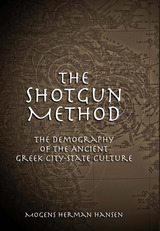 The Shotgun Method: The Demography of the Ancient Greek City-State Culture
Mogens Herman Hansen
University of Missouri Press, 2006
Although the polis, or city-state, defined the essence of classical Greek civilization, evidence of its most basic characteristics is woefully inadequate. Now a leading scholar in the evaluation of data from the ancient world sheds new light on how those units were constituted.
In a work of cutting-edge research, Mogens Herman Hansen develops a novel method for estimating the overall size and local distribution of the Greek population throughout the ancient world—in both the Greek homeland and its colonies—and explains his reconstruction step by step. Reflecting the innovative work of the Copenhagen Polis Centre in its 2004 inventory of archaic and classical Greek city-states, Hansen’s book makes it possible for the first time to assess the total population of the ancient Greek world.
For 232 out of circa 1,000 city-states, the size of the urban center can be estimated, and for 636 city-states, we have an idea about the size of the territory. Employing a “shotgun method” Hansen derives approximate population figures and argues that, in the age of Alexander the Great, the population of all the Greek city-states must have totaled some 8-10 million people. His new estimates take into account not only adult male citizens, but all inhabitants—citizens, foreigners, and slaves of both sexes and all ages. In addressing often-conflicting views on estimating populations, their distribution in various regions, and their settlement patterns within individual states, Hansen particularly challenges the long-standing opinion that the majority of ancient Greeks lived a rural life outside of poleis, and he calls for a reconsideration of long-held assumptions about the prevalence of a subsistence economy with little long-distance trade.
Although quantifications of ancient history are never precise, they can provide us with valuable information about ancient societies. The Shotgun Method is a rigorous evaluation of data that puts antiquity in a new light and provides a new context for understanding many aspects of Greek history.
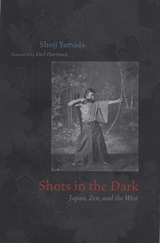 Shots in the Dark: Japan, Zen, and the West
Shoji Yamada
University of Chicago Press, 2009 In the years after World War II, Westerners and Japanese alike elevated Zen to the quintessence of spirituality in Japan. Pursuing the sources of Zen as a Japanese ideal, Shoji Yamada uncovers the surprising role of two cultural touchstones: Eugen Herrigel’s Zen in the Art of Archery and the Ryoanji dry-landscape rock garden. Yamada shows how both became facile conduits for exporting and importing Japanese culture. First published in German in 1948 and translated into Japanese in 1956, Herrigel’s book popularized ideas of Zen both in the West and in Japan. Yamada traces the prewar history of Japanese archery, reveals how Herrigel mistakenly came to understand it as a traditional practice, and explains why the Japanese themselves embraced his interpretation as spiritual discipline. Turning to Ryoanji, Yamada argues that this epitome of Zen in fact bears little relation to Buddhism and is best understood in relation to Chinese myth. For much of its modern history, Ryoanji was a weedy, neglected plot; only after its allegorical role in a 1949 Ozu film was it popularly linked to Zen. Westerners have had a part in redefining Ryoanji, but as in the case of archery, Yamada’s interest is primarily in how the Japanese themselves have invested this cultural site with new value through a spurious association with Zen.
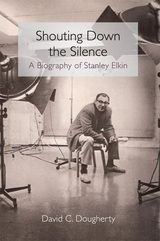 Shouting Down the Silence: A Biography of Stanley Elkin
David C. Dougherty
University of Illinois Press, 2010 Shouting Down the Silence presents the first complete biography of Stanley Elkin, a preeminent novelist who consistently won high marks from critics but whose complexities of style seemed destined to elude the popular acclaim he hoped to attain. From the publication of his second novel, A Bad Man, in 1967 to his death in 1995, Elkin was tormented by the desire for both material and artistic success. Elkin's novels were taught in colleges and universities, his fiction received high praise from critics and reviewers (two of his novels won National Book Critics Circle Awards), and his short stories were widely anthologized--and yet he was unable to achieve renown beyond the avant-garde, or to escape the stigma of being an "academic writer." He wanted to be Faulkner, but he had trouble being Elkin. Drawing on personal interviews and an intimate knowledge of Elkins's life and works, David C. Dougherty captures Elkin's early life as the son of a charismatic, intimidating, and remarkably successful Jewish immigrant from Russia, as well as his later career at Washington University in St. Louis. A frequent participant at the annual Bread Loaf Writers' conference, he was the friend--and sometime antagonist--of other important writers, particularly Saul Bellow, William Gass, Howard Nemerov, and Robert Coover. Despite failed attempts to bridge the gap from his academic post to wide popular success, Elkin continued to write essays, stories, and novels that garnered unerring praise. His was a classic dilemma of an intellectual aesthete loath to make use of the common devices of popular appeal. The book details the ambition, the success, the friction, and the foibles of a writer who won fame, but not the fame he wanted.
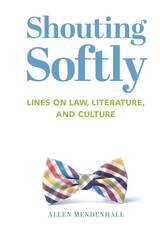 Shouting Softly: Lines on Law, Literature, and Culture
Allen Mendenhall
St. Augustine's Press, 2020 In Shouting Softly, literary lawyer and proud Southerner Allen Mendenhall provides valuable insights into perennial questions about the fundamental features of civil society. His expansive commentaries and criticism on law, literature, and culture reveal an abiding commitment to ordered liberty, the decentralization and diffusion of power, bottom-up and localized forms of voluntary governance, time-tested wisdom, and aesthetic sensibility. This vigorous work cautions against hubris and misguided certitude, predicating its arresting arguments on the proposition that human reason, however awesome and inspiring, is limited and fallible. Covering a wide range of issues and historical figures, Mendenhall espouses conservative yet melioristic approaches to complex subjects, rebutting the hollow claims and fashionable theories that captivate ‘purposefully’ leftist law and humanities faculties across the United States. His is the measured voice of a book-loving polymath who appreciates beauty, imagination, humility, clarity, cooperation, and sound argumentation.
The work is given in three parts. The first section on law explores legal minds, rules and commentary on seminal jurisprudence. The second part explores literature and the influence of the writer and the disconcerting truths stories often seek to convey. Thirdly, Mendenhall delves into culture and the more obvious situations wherein we gain insight into our manner of living, and here Mendenhall exudes a Southern accent that in no way compromises his universal bearings. One of the highlights is his echo of Larry Seidentop’s question: “If we in the West do not understand the moral depth of our own tradition, how can we hope to shape the conversation of mankind?” This is all the more meaningful given that Mendenhall is a member of the Millennial generation, and part of the intellectual minority who sees the urgency of “a studied appreciation for nuanced story and linguistic narrative.”
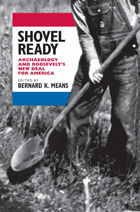 Shovel Ready: Archaeology and Roosevelt's New Deal for America
Bernard K. Means
University of Alabama Press, 2013 Shovel Ready provides a comprehensive lens through which to view the New Deal period, a fascinating and prolific time in American archaeology. In this collection of diverse essays united by a common theme, Bernard K. Means and his contributors deliver a valuable research tool for practicing archaeologists and historians of archaeology, as well as New Deal scholars in general. To rescue Americans from economic misery and the depths of despair during the Great Depression, President Franklin Delano Roosevelt created several New Deal jobs programs to put people to work. Men and women labored on a variety of jobs, from building roads to improving zoos. Some ordinary citizens—with no prior experience—were called on to act as archaeologists and excavate sites across the nation, ranging in size from small camps to massive mound complexes, and dating from thousands of years ago to the early Colonial period. Shovel Ready contains essays on projects ranging across the breadth of the United States, including New Deal investigations in California, Georgia, Illinois, Iowa, Kentucky, New Jersey, Oklahoma, Pennsylvania, Tennessee, and Texas. Some essays engage in historical retrospectives. Others bring the technologies of the twenty-first century, including accelerator mass spectrometry (AMS) dating of curated collections and geophysical surveys at New Deal–excavated sites, to bear on decades-old excavations. The volume closes with an investigation into material remnants of the New Deal itself. Contributors
John L. Cordell / John F. Doershuk / David H. Dye /Scott W. Hammerstedt / Janet R. Johnson / Kevin Kiernan /Gregory D. Lattanzi /Patrick C. Livingood / Anna R. Lunn / Bernard K. Means / Stephen E. Nash / Amanda L. Regnier / Sissel Schroeder / James R. Wettstaed
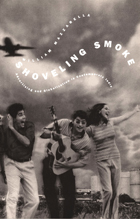 Shoveling Smoke: Advertising and Globalization in Contemporary India
William Mazzarella
Duke University Press, 2003 A leading Bombay advertising agency justifies as traditionally Indian the highly eroticized images it produces to promote the KamaSutra condom brand. Another agency struggles to reconcile the global ambitions of a cellular-phone service provider with the ambivalently local connotations of the client’s corporate brand. When the dream of the 250 million-strong “Indian middle class” goes sour, Indian advertising and marketing professionals search for new ways to market “the Indian consumer”—now with added cultural difference—to multinational clients. An examination of the complex cultural politics of mass consumerism in a globalized marketplace, Shoveling Smoke is a pathbreaking and detailed ethnography of the contemporary Indian advertising industry. It is also a critical and innovative intervention into current theoretical debates on the intersection of consumerist globalization, aesthetic politics, and visual culture. William Mazzarella traces the rise in India during the 1980s of mass consumption as a self-consciously sensuous challenge to the austerities of state-led developmentalism. He shows how the decisive opening of Indian markets to foreign brands in the 1990s refigured established models of the relationship between the local and the global and, ironically, turned advertising professionals into custodians of cultural integrity.
 Show & The Gaze Of Theatre: A European Perspective
Erika Fischer-Lichte
University of Iowa Press, 1997
Theatre, in some respects, resembles a market. Stories, rituals, ideas, perceptive modes, conversations, rules, techniques, behavior patterns, actions, language, and objects constantly circulate back and forth between theatre and the other cultural institutions that make up everyday life in the twentieth century. These exchanges, which challenge the established concept of theatre in a way that demands to be understood, form the core of Erika Fischer-Lichte's dynamic book.
Each eclectic essay investigates the boundaries that separate theatre from other cultural domains. Every encounter between theatre and other art forms and institutions renegotiates and redefines these boundaries as part of an ongoing process. Drawing on a wealth of fascinating examples, both historical and contemporary, Fischer-Lichte reveals new perspectives in theatre research from quite a number of different approaches. Energetically and excitingly, she theorizes history, theorizes and historicizes performance analysis, and historicizes theory.
Show and Tell: New and Selected Poems
Jim Daniels
University of Wisconsin Press, 2003 "Jim Daniels is a poet of unique commitment and ability. He makes poetry an act of deep caring and recognition."—Robert Creeley
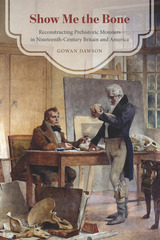 Show Me the Bone: Reconstructing Prehistoric Monsters in Nineteenth-Century Britain and America
Gowan Dawson
University of Chicago Press, 2016 Nineteenth-century paleontologists boasted that, shown a single bone, they could identify or even reconstruct the extinct creature it came from with infallible certainty—“Show me the bone, and I will describe the animal!” Paleontologists such as Georges Cuvier and Richard Owen were heralded as scientific virtuosos, sometimes even veritable wizards, capable of resurrecting the denizens of an ancient past from a mere glance at a fragmentary bone. Such extraordinary feats of predictive reasoning relied on the law of correlation, which proposed that each element of an animal corresponds mutually with each of the others, so that a carnivorous tooth must be accompanied by a certain kind of jawbone, neck, stomach, limbs, and feet.
Show Me the Bone tells the story of the rise and fall of this famous claim, tracing its fortunes from Europe to America and showing how it persisted in popular science and literature and shaped the practices of paleontologists long after the method on which it was based had been refuted. In so doing, Gowan Dawson reveals how decisively the practices of the scientific elite were—and still are—shaped by their interactions with the general public.
Show Me Your Environment: Essays on Poetry, Poets, and Poems
David Baker
University of Michigan Press, 2014 In Show Me Your Environment, a penetrating yet personable collection of critical essays, David Baker explores how a poem works, how a poet thinks, and how the art of poetry has evolved—and is still evolving as a highly diverse, spacious, and inclusive art form. The opening essays offer contemplations on the “environment” of poetry from thoughts on physical places and regions as well as the inner aesthetic environment. Next, Baker looks at the highly distinctive achievements and styles of poets ranging from George Herbert and Emily Dickinson through poets writing today. Finally, he takes joy in reading individual poems—from the canonical to the contemporary; simply and closely.
 Show of Hands: A Natural History of Sign Language
David F. Armstrong
Gallaudet University Press, 2011 Most scholarly speculation on the origin of human language has centered around speech. However, the growing understanding of sign languages on human development has transformed the debate on language evolution. David F. Armstrong’s new book Show of Hands: A Natural History of Sign Language casts a wide net in history and geography to explain how these visible languages have enriched human culture in general and how their study has expanded knowledge of the human condition. Armstrong addresses the major theories of language evolution, including Noam Chomsky’s thesis of an innate human “organ” for language and Steven Pinker’s contention that there is language and not-language without any gradations between gesture and language. This engrossing survey proceeds with William C. Stokoe’s revival of the early anthropological cognitive-linguistic model of gradual development through the iconicity of sign languages. Armstrong ranges far to reveal the nature of sign languages, from the anatomy of early human ancestors to telling passages by Shakespeare, Dickens, and Pound, to the astute observations of Socrates, Lucretius, and Abbé de l’Epée on sign communication among deaf people. Show of Hands illustrates the remarkable development of sign languages in isolated Bedouin communities and among Australian indigenous peoples. It also explores the ubiquitous benefits of “Deaf Gain” and visual communication as they dovetail with the Internet and its mushrooming potential for the future.
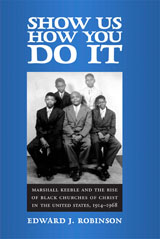 Show Us How You Do It: Marshall Keeble and the Rise of Black Churches of Christ in the United States, 1914-1968
Edward J. Robinson
University of Alabama Press, 2008 Marshall Keeble (1878–1968) was the premier evangelist in black Churches of Christ from 1931 until his death in 1968. Born and reared in middle Tennessee, Keeble came under the influence of Preston Taylor, Samuel Womack, and Alexander Campbell, as well as the social influence of Booker T. Washington. In 1914, Keeble committed himself to full-time evangelism and by the 1920s had established himself as a noteworthy preacher. By the time of his death, he reportedly had baptized 40,000 people and had established more than 200 congregations, some of which still flourish today. Show Us How You Do It is the first critical study of Keeble and his evangelical career. Based on primary sources, Edward Robinson reconstructs the life, public ministry, missionary activities, and the reception of Keeble among Churches of Christ. He also explores Keeble’s relationship with white businessmen and how he secured white support in establishing a large fellowship of African American Churches of Christ in the South. Show Us How You Do It details Keeble’s theology, ethos, and polemics toward other churches. Robinson demonstrates Keeble’s legacy in the labor of his African American co-workers and of the students who attended Nashville Christian Institute. Of the approximately 2.5 million members of the Churches of Christ in the U.S., an estimated 10 percent are African-Americans, and many in this fellowship can trace their affiliation to Keeble and to those whom he trained.
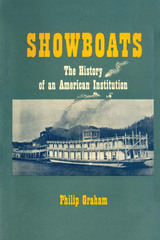 Showboats: The History of an American Institution
By Philip Graham
University of Texas Press, 1951 This book is a delightful and authoritative record of America's showboats from the first one, launched in 1831, to the last, ultimately tied up at a St. Louis dock. It is also a record of the men and women who built and loved these floating theaters, of those who performed on their stages, and of the thousands who sat in their auditoriums. And, lastly, it is a record of a genuine folk institution, as American as catfish, which for more than a century did much to relieve the social and cultural starvation of our vast river frontier. For these showboats brought their rich cargoes of entertainment—genuine laughter, a glimpse of other worlds, a respite from the grinding hardship of the present, emotional relaxation—to valley farmers, isolated factory workers and miners, and backwoodsmen who otherwise would have lacked all such opportunities. To the more privileged , the showboats brought pleasant reminder of a half-forgotten culture. They penetrated regions where churches and school had not gone, and where land theaters were for generations to be impossible. Like circuit preachers, they carried their message to the outer fringes of American civilization. In spite of many faults, it was a good message. The frontier had created this institution to fill a genuine need, and it lasted only until other and better means of civilizing these regions could reach them—good roads, automobiles, motion pictures, schools, churches, newspapers, and theaters. But although the showboats have passed into history, they have left a rich legacy. As long as the Mississippi flows into the Gulf, their story will fire the imagination of Americans. Showboating has become so legendary that few Americans know what this unique institution was really like. In Showboats, at long last, the true story emerges. It differs in many important respects from the motion picture and fictional versions to which Americans are accustomed, but it is not a whit the less glamorous. Philip Graham has told his story with imagination, genuine insight, and complete devotion to facts. No one who is interested in America's past should fail to read it.
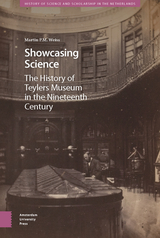 Showcasing Science: A History of Teylers Museum in the Nineteenth Century
Martin P.M. Weiss
Amsterdam University Press, 2019 Teylers Museum was founded in 1784 and soon thereafter became one of the most important centres of Dutch science. The Museum’s first director, Martinus van Marum, famously had the world’s largest electrostatic generator built and set up in Haarlem. This subsequently became the most prominent item in the Museum’s world-class, publicly accessible, and constantly growing collections. These comprised scientific instruments, mineralogical and palaeontological specimens, prints, drawings, paintings, and coins. Van Marum’s successors continued to uphold the institution’s prestige and use the collections for research purposes, while it was increasingly perceived as an art museum by the public. In the early twentieth century, the Nobel Prize laureate Hendrik Antoon Lorentz was appointed head of the scientific instrument collection and conducted experiments on the Museum’s premises. Showcasing Science: A History of Teylers Museum in the Nineteenth Century charts the history of Teylers Museum from its inception until Lorentz’ tenure. From the vantage point of the Museum’s scientific instrument collection, this book gives an analysis of the changing public role of Teylers Museum over the course of the nineteenth century.
Showdown: Confronting Modern America in the Western Film
John H. Lenihan
University of Illinois Press, 1980 "Lenihan's fine study
[brings] new levels of scholarship and sophistication to the study of
western films.... Should prove useful in the classroom, both for social
history and film history courses. It will introduce readers to a new way
to view some of the old horse operas that they had once taken for granted
as fluffy entertainment."
-- Western American Literature
'"The best of the recent
books to deal with Westerns produced since World War II --- in fact, probably
the best recent study of the Western."
-- Journal of the West
"Recommended for the
student of film and the hardcore film buff. The rest of you will be surprised,
delighted, perhaps even angered by some of the conclusions Lenihan has
come to."
-- Film World
Showdown in Desire: The Black Panthers Take a Stand in New Orleans
Orissa Arend
University of Arkansas Press, 2009 Showdown in Desire portrays the Black Panther Party in New Orleans in 1970, a year that included a shootout with the police on Piety Street, the creation of survival programs, and the daylong standoff between the Panthers and the police in the Desire housing development. Through interviews with Malik Rahim, the Panther; Robert H. King, Panther and member of the Angola 3; Larry Preston Williams, the black policeman; Moon Landrieu, the mayor; Henry Faggen, the Desire resident; Robert Glass, the white lawyer; Jerome LeDoux, the black priest; William Barnwell, the white priest; and many others, Orissa Arend tells a nuanced story that unfolds amid guns, tear gas, desperate poverty, oppression, and inflammatory rhetoric to capture the palpable spirit of rebellion, resistance, and revolution of an incendiary summer in New Orleans.
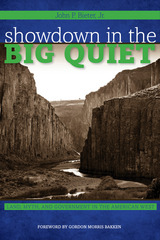 Showdown in the Big Quiet: Land, Myth, and Government in the American West
John P. Bieter, Jr.
Texas Tech University Press, 2015 Myth and government clash and collaborate in one of America’s largest and most remote canyonlands
Owyhee County, Idaho, also known as the “Big Quiet,” is the largest and least inhabited area in the lower forty-eight states. Who has decided how to use it? From violent mine wars in the mid-nineteenth century to environmental conservation disputes at the end of the twentieth, people in the West have battled over the role of government and notions of American identity to answer this question. Winners ultimately controlled the perception of their battles, often shaping the contours of the next conflict.
Similarly, historians debated interpretations of the West. In the early twentieth century, Frederick Jackson Turner argued that interactions on the frontier formed American characteristics of rugged individualism, democracy, aggression, and innovation. The “New” Western historians of the late 1970s attempted to debunk this theory, revealing the racial and ethnic diversity of the West, reminding us of the role of the environment, and documenting how settlers and later corporations conquered land wrested away from Native Americans.
While “New” Western historians shot holes in Turner’s thesis, the myths of the Old West prevailed. People craved the identity offered in western themed novels, films, and tourism more than historical facts. Showdown in the Big Quiet demonstrates how the “Old West” speaks to the “New” and proves how the power of western mythology moved from background to central character.
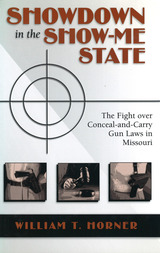 Showdown in the Show-Me State: The Fight Over Conceal-and-Carry Gun Laws in Missouri
William T. Horner
University of Missouri Press, 2005
When the Missouri state legislature overrode Governor Bob Holden’s veto in 2003 to make conceal-and-carry the law of the land, the Show-Me State became one of the last in the country to adopt this type of law. In fact, it took years of concerted effort on the part of pro-gun advocates to make this a reality. In Showdown in the Show-Me State, William Horner chronicles this complex and fascinating fight in clear, chronological order beginning with the first bill introduced into the Missouri General Assembly in 1992 and ending with the state supreme court’s decision in 2004 that Missouri’s constitution permitted the legislature to grant Missourians the right to carry concealed weapons.
There is, it is often argued, no state more typically “American” than Missouri. The state is closely divided along partisan lines, as is the nation as a whole, and in the previous century, Missouri voters have regularly chosen the winner in almost every presidential election. By offering an examination of guns and gun policy in Missouri, this book provides a glimpse into the hearts and minds of Missourians and, by extension, of mainstream America as well. Horner’s in-depth case study details the give-and-take among legislators and examines the role that interest groups played in the evolution of this divisive issue.
Horner’s book—part policy analysis, part interest group study, and part history—will appeal to readers with an interest in the issue of gun control or in the political process, and it will provide a thorough resource for those who study policy making at the state level.
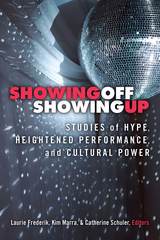 Showing Off, Showing Up: Studies of Hype, Heightened Performance, and Cultural Power
Laurie Frederik, Kim Marra, and Catherine Schuler, Editors
University of Michigan Press, 2017 The interdisciplinary essays in Showing Off, Showing Up examine acts of showing, a particular species of performance that relies on competition and judgment, active spectatorship, embodied excess, and exposure of core values and hidden truths. Acts of showing highlight those dimensions of performance that can most manipulate spectators and consumers, often through over-the-top heightening and skewing of presentation. Many forms of showing and of heightened performance, however, operate more enigmatically and covertly while still profoundly affecting the social world, even if our reactions to them are initially flippant or unconcerned because “it’s just a show.” Examining a wide range of examples—from dog shows to competitive dancing to carnivals to striptease, the essays illuminate how such events variously foster competition, exaggerate a characteristic, and reveal hidden truths. There is as much to be learned about the power of showing through subtlety and underlying intentionality as through overt display. The book’s theoretical introduction and 12 essays by leading scholars reveal how diverse, particularly efficacious genres of showing are theoretically connected and why they merit more concerted attention, especially in the 21st century.
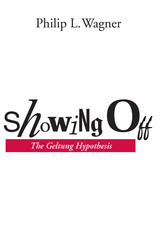 Showing Off: The Geltung Hypothesis
By Philip L. Wagner
University of Texas Press, 1996 Hardly a place exists on earth that has not been shaped in some way by human beings. Every day we modify and even sweep away natural landscapes as we build places to live and work. But why we react and interact as social beings intent on exercising ecological dominance poses an endlessly compelling puzzle for everyone from novelists to geographers. In Showing Off, distinguished geographer Philip L. Wagner offers a persuasive hypothesis. Drawing on a lifetime of inquiry, travel, and teaching, he asserts that the strive for Geltung—personal standing, recognition, acceptance, esteem, and influence—shapes all of our interactions and defines the unique social character of human beings. Wagner applies the Geltung hypothesis to a wide range of human activities from falling in love and spreading gossip to buying goods and making war. His examples demonstrate how communication and display—"showing off"—impel geographic change, as they reveal how and why people with the most Geltung tend to occupy the most desirable places. This broad vision draws insights from many fields. A major contribution to cultural geography, the book also sheds new light on individual psychology and psychopathology and suggests new themes for cognitive science and even philosophy. Sure to stir lively debate in many circles, it will be provocative reading for everyone fascinated by the continuum between people and places.
Showing Our Colors: Afro-German Women Speak Out
May Optiz
University of Massachusetts Press, 1992 Showing Our Colors: Afro-German Women Speak Out is an English translation of the German book Farbe bekennen edited by author May Ayim, Katharina Oguntoye, and Dagmar Schultz. It is the first published book by Afro-Germans. It is the first written use of the term Afro-German.
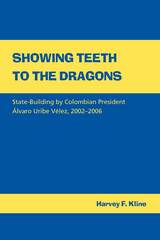 Showing Teeth to the Dragons: State-building by Colombian President Álvaro Uribe Vélez, 2002–2006
Harvey F. Kline
University of Alabama Press, 2009 Explores the first administration of Colombian President Álvaro Uribe Vélez, which marked a decisive break in a seemingly endless cycle of civil war in Colombia
Kline argues that the first administration of Colombian President Álvaro Uribe Vélez marks a decisive break in a seemingly endless cycle of civil war. Not only were the levels of homicide and kidnapping dramatically reduced, but the state took the offensive against the insurgents, strengthening the armed forces which in turn demonstrated clear support for the president's policy.
The civil war in Colombia has waxed and waned for sixty years, with shifting goals, programs, and tactics among the contending parties. Bursts of appalling violence are punctuated by uneasy truces, cease-fires, and attempts at reconciliation. Varieties of Marxism, the economics of narco-trafficking, peasant land hunger, poverty, and oppression mix together in a toxic stew that has claimed the uncounted lives of peasants, conscript soldiers, and those who simply got in the way.
Kline believes that the changes of the President, although dramatic, are not necessarily permanent. He discusses what challenges must be overcome for the permanent reduction of organized violence in this war-torn nation.
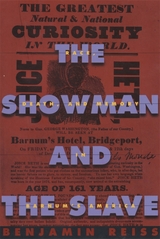 The Showman and the Slave: Race, Death, and Memory in Barnum’s America
Benjamin Reiss
Harvard University Press, 2001 In this compelling story about one of the nineteenth century's most famous Americans, Benjamin Reiss uses P. T. Barnum's Joice Heth hoax to examine the contours of race relations in the antebellum North. Barnum's first exhibit as a showman, Heth was an elderly enslaved woman who was said to be the 161-year-old former nurse of the infant George Washington. Seizing upon the novelty, the newly emerging commercial press turned her act--and especially her death--into one of the first media spectacles in American history.
In piecing together the fragmentary and conflicting evidence of the event, Reiss paints a picture of people looking at history, at the human body, at social class, at slavery, at performance, at death, and always--if obliquely--at themselves. At the same time, he reveals how deeply an obsession with race penetrated different facets of American life, from public memory to private fantasy. Concluding the book is a piece of historical detective work in which Reiss attempts to solve the puzzle of Heth's real identity before she met Barnum. His search yields a tantalizing connection between early mass culture and a slave's subtle mockery of her master.
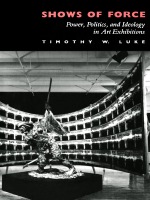 Shows of Force: Power, Politics, and Ideology in Art Exhibitions
Timothy W. Luke
Duke University Press, 1992 It has long been considered a mark of naïveté to ask of a work of art: What does it say? But as Timothy W. Luke demonstrates in Shows of Force, artwork is capable of saying plenty, and much of the message resides in the way it is exhibited. By critically examining the exhibition of art in contemporary American museums, Luke identifies how art showings are elaborate works of theater that reveal underlying political, social, and economic agendas.
The first section, “Envisioning a Past, Imagining the West,” looks at art exhibitions devoted to artworks about or from the American West. Luke shows how these exhibitions—displaying nineteenth- and early-twentieth century works by artists such as George Caleb Bingham, Frederic Remington, Frederic Edwin Church, and Georgia O’Keefe—express contemporary political agendas in the way the portray “the past” and shape new visions of “the West.”
In “Developing the Present, Defining a World,” Luke considers artists from the post-1945 era, including Ilya Kabokov, Hans Haacke, Sue Coe, Roger Brown, and Robert Longo. Recent art exhibits, his analysis reveals, attempt to develop politically charged conceptions of the present, which in turn struggle to define the changing contemporary world and art’s various roles within it.
Luke brings to light the contradictions encoded in the exhibition of art and, in doing so, illuminates the political realities and cultural ideologies of the present. Shows of Force offers a timely and surely controversial contribution to current discussions of the politics of exhibiting art.
 The Shows of London
Richard D. Altick
Harvard University Press, 1978 A berserk elephant gunned down in the heart of London, a machine for composing Latin hexameters, and the original rock band (1841)—these are but three of the sights that London curiosity–seekers from every walk of life paid to see from the Elizabethan era to the mid–Victorian period. Examining hundreds of the wonderfully varied exhibitions that culminated in the Crystal Palace of 1851, this generously illustrated book sheds light on a vast and colorful expanse of English social history that has thus far remained wholly unsurveyed.
Drawing on a wealth of never-before-used information, Mr. Altick traces London exhibitions as they evolved from the display of relics in pre-Reformation churches, through the collections of eighteenth-century virtuosi, to the first science museums and public art galleries. He also narrates for the first time the history of the panorama and diorama as an influential genre of nineteenth-century popular art. At every point, the London shows are linked to the prevailing intellectual atmosphere and to trends in public taste.
The material is fresh and fascinating; the range--from freaks to popular science, from the funeral effigies at Westminster Abbey to Madame Tussaud's waxworks--impressive. Like the exhibitions that best served the Victorian ideal of mass culture, The Shows of London is both entertaining and informative.
Showtime at the Ministry of Lost Causes
Cheryl Dumesnil
University of Pittsburgh Press, 2016 The poems in Showtime at the Ministry of Lost Causes are survival songs, the tunes you whistle while walking through the Valley of Shadows, to keep your fears at bay and your spirit awake. The shadows here are many—cancer, poverty, a lost love, famine, suicide, war, an ever-encroaching existential angst. But so are the saving graces—a drag queen waitress whose “painted-on eyebrows arched like a bridge / toward starlight,” “strawberries / grown fat around dimpled gold seeds,” Pink Floyd’s “‘On the Turning Away’ sent through my car / radio like the ghost voice of a beloved long dead,” black phoebes rattling “winter / thistles, swollen throats percussing: / this is this is this is . . . ” Showtime at the Ministry of Lost Causes reminds us that where there is shadow there must, necessarily, also be light.
Shrapnel Minima: Writings from Humanities Underground
Edited by Prasanta Chakravarty
Seagull Books, 2014 This collection of essays, fiction, poetry and discussions, derived from the cult Internet magazine HumanitiesUnderground, provides entry into some of the most burning issues in the humanities in contemporary South Asia. The anthology brings together select pieces on such diverse issues as aesthetics and artistic craft, ethics and criticism, movements and institutions, and ideologies and reflections. Working at the cusps of the artistic and the political spheres, the anthology, like the magazine, argues that since our concerns for art and philosophy must be understood through the political, social and economic conditions that birth them, our writing and our reading must be attentive to the intricacies of these relationships and the contexts they create. This anthology of engaging essays will be of interest to scholars in the humanities both within South Asia and beyond.
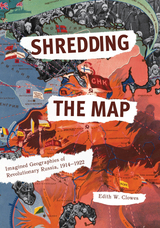 Shredding the Map: Imagined Geographies of Revolutionary Russia, 1914-1922
Edith W. Clowes
Amherst College Press, 2024 Shredding the Map investigates Russian place consciousness in the decade between the start of World War I and the end of the Russian civil war. Attachment to place is a vital aspect of human identity, and connection to homeland, whether imagined or real, can be especially powerful. Drawing from a large digital database of period literature, Shredding the Map investigates the metamorphic changes in how Russians related to places–whether abstractions like “country” or concrete spaces of borders, fronts, and edgelands–during these years.
An innovative, digitally-aided study of Russia’s “imagined geography” during the early decades of the twentieth century, Shredding the Map uncovers vying emotional patterns and responses to Russian ideas of place, some familiar and some quite new. The book includes new visualizations that connect otherwise invisible networks of shared place, feeling, and perception among dozens of writers in order to trace patterns of geospatial identity. A scholarly companion to the “Mapping Imagined Geographies of Revolutionary Russia” website and database, this book offers an innovative analysis of place and identity beyond the centers of power, enhancing our perceptions of Russia and encouraging debate about the possibilities for digital humanities and literary analysis.
Shredding the Tapestry of Meaning: The Poetry and Poetics of Kitasono Katue (1902–1978)
John Solt
Harvard University Press, 1999 Kitasono Katue was a leading avant-garde literary figure, first in Japan and then throughout the world, from the 1920s to the 1970s. In his long career, Kitasono was instrumental in creating Japanese-language work influenced by futurism, dadaism, and surrealism before World War II and in contributing a Japanese voice to the international avant-garde movement after the war. This critical biography of Kitasono examines the life, poetry, and poetics of this controversial and flamboyant figure, including his wartime support of the Japanese state. Using Kitasono as a window on Japanese literature in the twentieth century, John Solt analyzes the relationship of Japanese writers to foreign literary movements and the influence of Japanese writers on world literature.
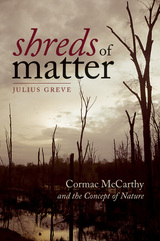 Shreds of Matter: Cormac McCarthy and the Concept of Nature
Julius Greve
Dartmouth College Press, 2018 Shreds of Matter: Cormac McCarthy and the Concept of Nature offers a nuanced and innovative take on McCarthy’s ostensible localism and, along with it, the ecocentric perspective on the world that is assumed by most critics. In opposing the standard interpretations of McCarthy’s novels as critical either of persisting American ideologies—such as manifest destiny and imperialism—or of the ways in which humanity has laid waste to planet Earth, Greve instead emphasizes the author’s interest both in the history of science and in the mythographical developments of religious discourse. Greve aims to counter traditional interpretations of McCarthy’s work and at the same time acknowledge their partial truth, taking into account the work of Friedrich W. J. Schelling and Lorenz Oken, contemporary speculative realism, and Bertrand Westphal’s geocriticism. Further, newly discovered archival material sheds light on McCarthy’s immersion in the metaphysical question par excellence: What is nature?
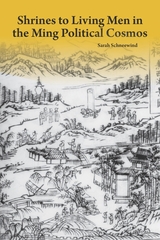 Shrines to Living Men in the Ming Political Cosmos
Sarah Schneewind
Harvard University Press, 2018 Shrines to Living Men in the Ming Political Cosmos, the first book focusing on premortem shrines in any era of Chinese history, places the institution at the intersection of politics and religion. When a local official left his post, grateful subjects housed an image of him in a temple, requiting his grace: that was the ideal model. By Ming times, the “living shrine” was legal, old, and justified by readings of the classics.
Sarah Schneewind argues that the institution could invite and pressure officials to serve local interests; the policies that had earned a man commemoration were carved into stone beside the shrine. Since everyone recognized that elite men might honor living officials just to further their own careers, premortem shrine rhetoric stressed the role of commoners, who embraced the opportunity by initiating many living shrines. This legitimate, institutionalized political voice for commoners expands a scholarly understanding of “public opinion” in late imperial China, aligning it with the efficacy of deities to create a nascent political conception Schneewind calls the “minor Mandate of Heaven.” Her exploration of premortem shrine theory and practice illuminates Ming thought and politics, including the Donglin Party’s battle with eunuch dictator Wei Zhongxian and Gu Yanwu’s theories.
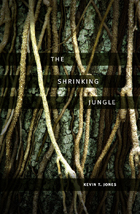 The Shrinking Jungle
Kevin T. Jones
University of Utah Press, 2012 Anthropologist Kevin Jones takes the reader on a journey into the world of the Aché, hunter-gatherers of the deep jungles of Paraguay. The Aché were among the last tribal peoples to come into peaceful contact with the outside world, with some bands leaving the forest only in the late 1970s. Jones was fortunate to live among them while conducting ethnoarchaeological fieldwork as part of his graduate studies. Their stories were so compelling and the insights into their lives so profound that he wove them into this fictional account, seeking to share the uniqueness of the culture while illustrating the universal nature of the Achés’ concerns.
The Shrinking Jungle tells the story of a fictional Aché band forced to deal with the tribulations of living in a forest gradually diminished by the encroachments of loggers and farmers. It follows the lives of one family and their band as they grapple for existence in a world of waning resources. The unfolding narrative captures the human struggle to live, love, care for family, fend off danger, and dream and hope for a bright future.
A compassionate look at the lives of people affected by the expansion of modern industrial society, The Shrinking Jungle gives a face to the human cost of tropical forest habitat loss. It also provides a realistic glimpse into the lifeways that were common to all human beings for much of our history.
 Shrubs and Vines of Iowa
Peter J. van der Linden, Donald R. Farrar
University of Iowa Press, 2016 Shrubs and vines, often literally overshadowed by trees, also receive much less attention than their taller neighbors, and yet they are very important elements of the region’s natural landscape. A guide to these interesting and useful plants, this book identifies all 150 shrubs and vines native to Iowa, along with frequently seen naturalized ones. Here you’ll find the widely distributed buttonbush, the distinctive pagoda dogwoods, sumacs with their striking fall foliage, the adaptable ninebark, the attractive grape honeysuckle, the many species of Rubus and wild grapes that provide food for birds and animals, willows with their graceful promise of spring, and the diverse viburnums.
Like trees, shrubs and vines are woody plants that are easy to observe year round. The first part of this book will help you identify them. Illustrated keys take you through the identification process one step at time; these are followed by images and descriptions of all but the rarest species. Noted naturalists Peter van der Linden and Donald Farrar also provide information about each species’ distribution, ecology, and uses. Summer and winter features are covered separately to facilitate identification at these two very different times of year.
Chapters about the culture and natural history of shrubs and vines explain why the plants grow where they do in nature and show how to use them effectively in outdoor spaces. Plants native to Iowa have much to offer to the landscaper: winter hardiness, resistance to drought and climatic extremes, and food and shelter for native wildlife and pollinators. Many natives are ornamental as well, providing attractive flowers, bright autumn displays, and colorful stems or fruits in winter. The authors offer tips for selecting, planting, and caring for these plants effectively. With native plants, you can create a landscape that is sustainable, authentic to place, and satisfying to you.
Iowa and midwestern arborists, conservationists, horticulturists, landscape architects, gardeners, and all those who appreciate the beauty and value of native plants will find Shrubs and Vines of Iowa immensely useful.
Shrubs Of The Great Basin: A Natural History
Hugh N. Mozingo
University of Nevada Press, 1987 Mozingo presents the life histories of more than sixty species of both common and unusual shrubs, and discusses how shrubs grow, reproduce, and adapt to the extreme weather conditions that are part of daily life in the Great Basin. Drawings by Christine Stetter.
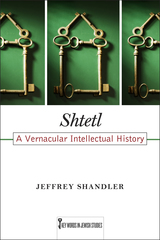 Shtetl: A Vernacular Intellectual History
Shandler, Jeffrey
Rutgers University Press, 2014 In Yiddish, shtetl simply means “town.” How does such an unassuming word come to loom so large in modern Jewish culture, with a proliferation of uses and connotations? By examining the meaning of shtetl, Jeffrey Shandler asks how Jewish life in provincial towns in Eastern Europe has become the subject of extensive creativity, memory, and scholarship from the early modern era in European history to the present. In the post-Holocaust era, the shtetl looms large in public culture as the epitome of a bygone traditional Jewish communal life. People now encounter the Jewish history of these towns through an array of cultural practices, including fiction, documentary photography, film, memoirs, art, heritage tourism, and political activism. At the same time, the shtetl attracts growing scholarly interest, as historians, social scientists, literary critics, and others seek to understand both the complex reality of life in provincial towns and the nature of its wide-ranging remembrance. Shtetl: A Vernacular Intellectual History traces the trajectory of writing about these towns—by Jews and non-Jews, residents and visitors, researchers, novelists, memoirists, journalists and others—to demonstrate how the Yiddish word for “town” emerged as a key word in Jewish culture and studies. Shandler proposes that the intellectual history of the shtetl is best approached as an exemplar of engaging Jewish vernacularity, and that the variable nature of this engagement, far from being a drawback, is central to the subject’s enduring interest.
 Shugendo: Essays on the Structure of Japanese Folk Religion
Miyake Hitoshi; Edited and with an Introduction by H. Byron Earhart
University of Michigan Press, 2001 This volume of essays is the first comprehensive publication in English of the work of Miyake Hitoshi, a distinguished scholar of Shugendō (mountain asceticism) and one of the foremost researchers on Japanese folk religion. Miyake defines folk religion as “religion that merges from the necessities of community life.” In Miyake’s systematic methodological and theoretical approach, Shugendō is a classic example of Japanese folk religion, for it blends many traditions (shamanism, Taoism, Buddhism, and Shinto) into a distinctive Japanese religious worldview and is typical of Japanese religion generally. The first part of this book is devoted to Shugendō’s history, organization, ritual, austerities, thought, and cosmology. Related subjects include exorcism and the exclusion of women. The second part of the book provides research and reflection on Japanese folk religion, including essays on the idea of nature, worldly benefits, new religions, death and rebirth, and the structure of folk religion. Shugendō: Essays on the Structure of Japanese Folk Religion clarifies much of the logic behind Japanese religious syncretism. It is essential reading not only for those interested in Japanese history, culture, and religion but also for those studying world religions and folk culture.
Shut Down the Business School: What's Wrong with Management Education
Martin Parker
Pluto Press, 2018 Even as higher education is under attack, one area is thriving: business schools. Shut Down the Business School explains why—and builds a convincing case that they are pernicious and should be closed. Martin Parker writes his polemic from the inside, drawing on his experience as a professor of management, and showing us that business schools are little more than loudspeakers for neoliberal capitalism, designed to produce unreflective managers whose primary focus is on their own personal rewards. If we believe that universities have responsibilities to society, Parker argues, then we must challenge the very foundation of the business school and its emphasis on the market above all else.
Shuva: The Future of the Jewish Past
Yehuda Kurtzer
Brandeis University Press, 2012 Modern Jews tend to relate to the past through “history,” which relies on empirical demonstration and rational thought, rather than through “memory,” which relies on the non-rational architectures of mythology. By now “history” has surpassed “memory” as a means of relating to the past—a development that falls short in building identity and creates disconnection between Jews and their collective history. Kurtzer seeks to mend this breach. Drawing on key classical texts, he shows that “history” and “memory” are not exclusive and that the perceived dissonance between them can be healed by a selective reclamation of the past and a translation of that past into purposefulness.
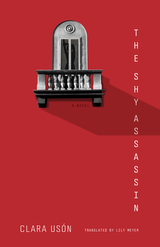 The Shy Assassin: A Novel
Clara Usón; translated from Spanish by Lily Meyer
Vanderbilt University Press, 2025 In September of 1977, Sandra Mozarowsky—a seventeen-year-old Spanish erotic film actress and purported lover of then King Juan Carlos I—died after leaping from her fourth-floor balcony in Madrid. The mysterious circumstances surrounding her death drew immediate public interest and generated conspiracy theories. Was her death a suicide? A covert murder? A cry for help? In The Shy Assassin, award-winning Spanish novelist Clara Usón uses the tragic death of Mozarowsky to provide a powerful philosophical meditation on suicide and turbulent years of the Spanish transition to democracy. Playfully drawing upon the work of philosophers like Ludwig Wittgenstein and Jean-Paul Sartre, Usón weaves together her own experiences as a rebellious teenager with those of Mozarowsky’s with great power and emotion. Winner of the prestigious Sor Juana Inés de La Cruz Prize, Usón’s novel is a funny, provocative, and deeply entertaining look at Spanish culture during a time of historic cultural and political change.
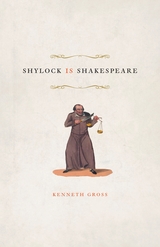 Shylock Is Shakespeare
Kenneth Gross
University of Chicago Press, 2006 Shylock, the Jewish moneylender in The Merchant of Venice who famously demands a pound of flesh as security for a loan to his antisemitic tormentors, is one of Shakespeare’s most complex and idiosyncratic characters. With his unsettling eloquence and his varying voices of protest, play, rage, and refusal, Shylock remains a source of perennial fascination. What explains the strange and enduring force of this character, so unlike that of any other in Shakespeare’s plays? Kenneth Gross posits that the figure of Shylock is so powerful because he is the voice of Shakespeare himself.
Marvelously speculative and articulate, Gross’s book argues that Shylock is a breakthrough for Shakespeare the playwright, an early realization of the Bard’s power to create dramatic voices that speak for hidden, unconscious, even inhuman impulses—characters larger than the plays that contain them and ready to escape the author’s control. Shylock is also a mask for Shakespeare’s own need, rage, vulnerability, and generosity, giving form to Shakespeare’s ambition as an author and his uncertain bond with the audience. Gross’s vision of Shylock as Shakespeare’s covert double leads to a probing analysis of the character’s peculiar isolation, ambivalence, opacity, and dark humor. Addressing the broader resonance of Shylock, both historical and artistic, Gross examines the character’s hold on later readers and writers, including Heinrich Heine and Philip Roth, suggesting that Shylock mirrors the ambiguous states of Jewishness in modernity.
A bravura critical performance, Shylock Is Shakespeare will fascinate readers with its range of reference, its union of rigor and play, and its conjectural—even fictive—means of coming to terms with the question of Shylock, ultimately taking readers to the very heart of Shakespeare’s humanizing genius.
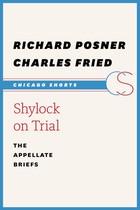 Shylock on Trial: The Appellate Briefs
Richard A. Posner and Charles Fried
University of Chicago Press, 2013 William Shakespeare is inextricably linked with the law, his plays rich in its terms, settings, and thought processes. In Shylock on Trial: The Appellate Briefs, the Hon. Richard A. Posner and Charles Fried rule on Shakespeare’s classic drama The Merchant of Venice. Framed as a decision argued by two appellate judges of the period in a trial following Shylock’s sentencing by the Duke of Venice, these essays playfully walk the line between law and culture, dissecting the alleged legal inconsistencies of Shylock’s trial while engaging in an artful reading of the play itself. The resultant opinions shed fresh light on the relationship between literary and legal scholarship, demonstrating how Shakespeare’s thinking about legal concepts and legal practice points to a deep and sometimes vexed engagement with the law’s technical workings, its underlying premises, and its social effects.
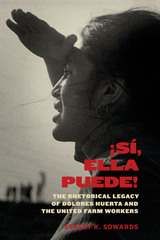 Sí, Ella Puede!: The Rhetorical Legacy of Dolores Huerta and the United Farm Workers
By Stacey K. Sowards
University of Texas Press, 2019 Winner, Marie Hochmuth Nichols Award, Public Address Division, National Communication Association, 2020
Outstanding Book Award, Latina/o Communication Studies Division, National Communication Association, 2020 Since the 1950s, Latina activist Dolores Huerta has been a fervent leader and organizer in the struggle for farmworkers’ rights within the Latina/o community. A cofounder of the United Farm Workers union in the 1960s alongside César Chávez, Huerta was a union vice president for nearly four decades before starting her own foundation in the early 2000s. She continues to act as a dynamic speaker, passionate lobbyist, and dedicated figure for social and political change, but her crucial contributions and commanding presence have often been overshadowed by those of Chávez and other leaders in the Chicana/o movement. In this new study, Stacey K. Sowards closely examines Huerta’s rhetorical skills both in and out of the public eye and defines Huerta’s vital place within Chicana/o history. Referencing the theoretical works of Pierre Bourdieu, Chela Sandoval, Gloria Anzaldúa, and others, Sowards closely analyzes Huerta’s speeches, letters, and interviews. She shows how Huerta navigates the complex intersections of race, ethnicity, gender, language, and class through the myriad challenges faced by women activists of color. Sowards’s approach to studying Huerta’s rhetorical influence offers a unique perspective for understanding the transformative relationship between agency and social justice.
The Sian Incident: A Pivotal Point in Modern Chinese History
Tien-wei Wu
University of Michigan Press, 1976 When Chiang Kai-shek arrived at Sian in the fall of 1936 and laid plans for launching his last campaign against the Red Army with an expectation of exterminating it in a month, he badly misjudged the mood of the Tungpei (Northeast) Army and more so its leader, Chang Hsueh-liang, better known as the Young Marshal. Refusing to fight the Communists, Chang with the loyal support of his officers staged a coup d’état by kidnapping Chiang Kai-shek for two weeks at Sian. Almost forty years after the melodrama was over, the Sian Incident still absorbs much attention from both Chinese and Western scholars as well as the reading public. The Sian Incident attempts to bring together whatever information has been thus far gleaned about the subject, and to cover all aspects and controversies involved in it. [1, xi, xii]
|
|

